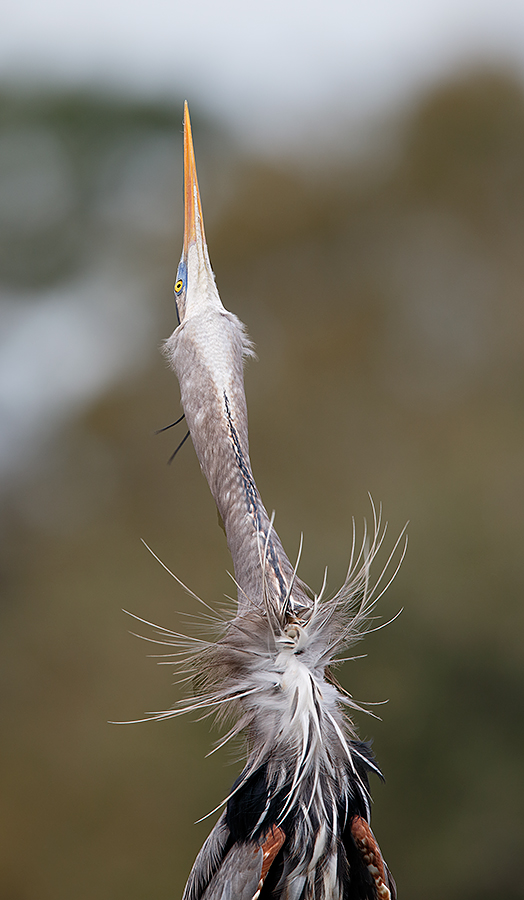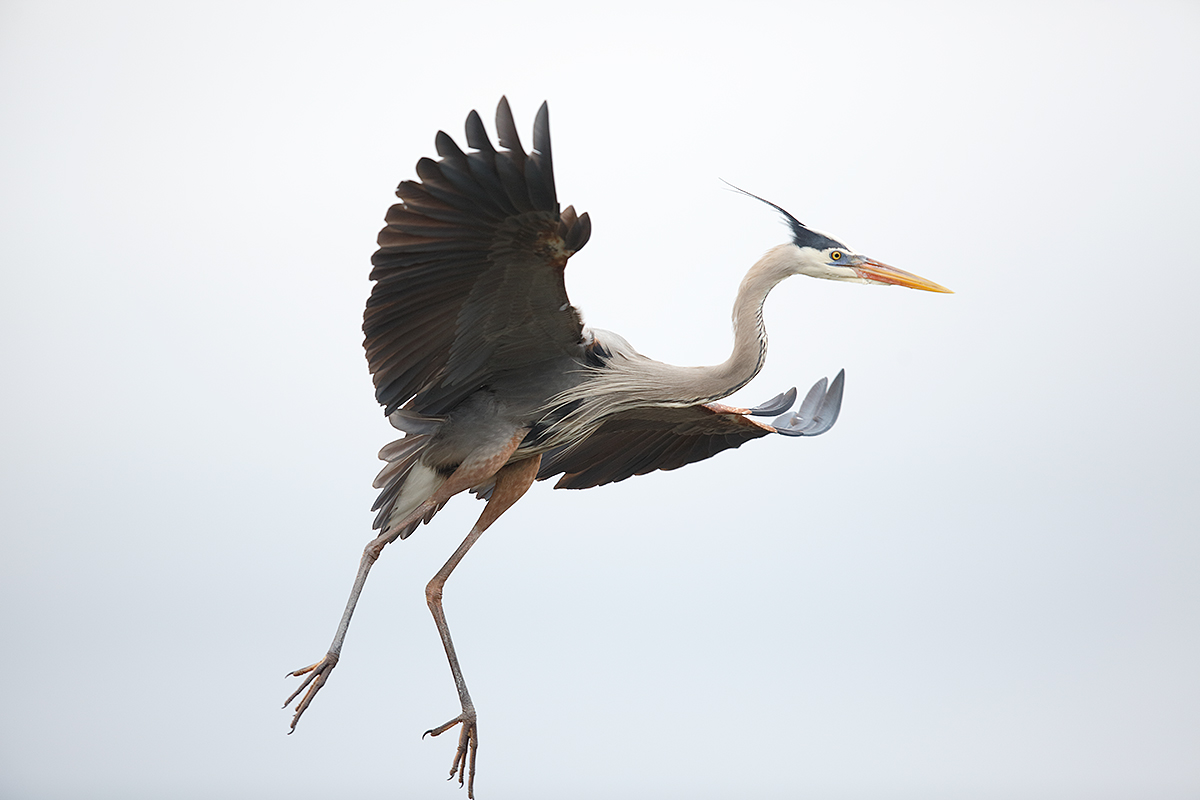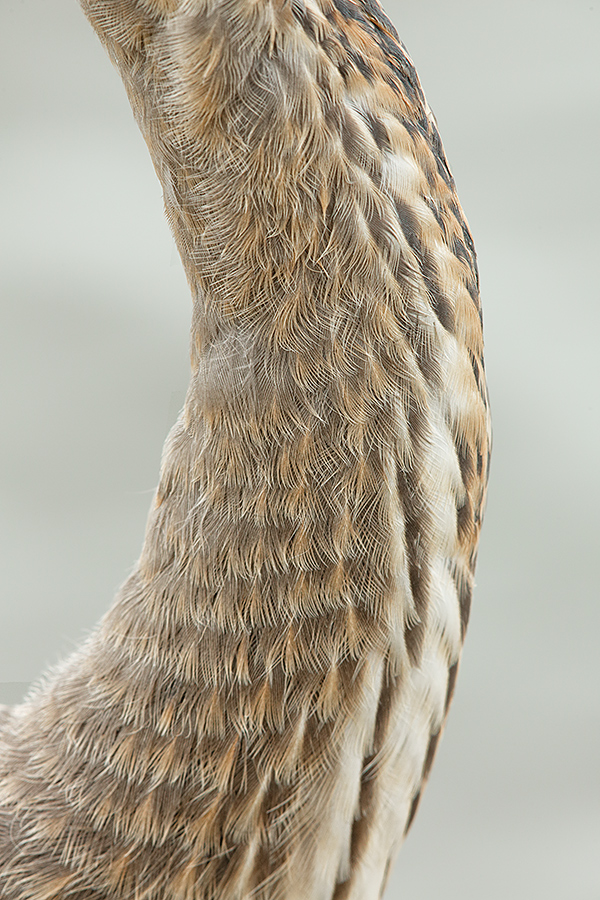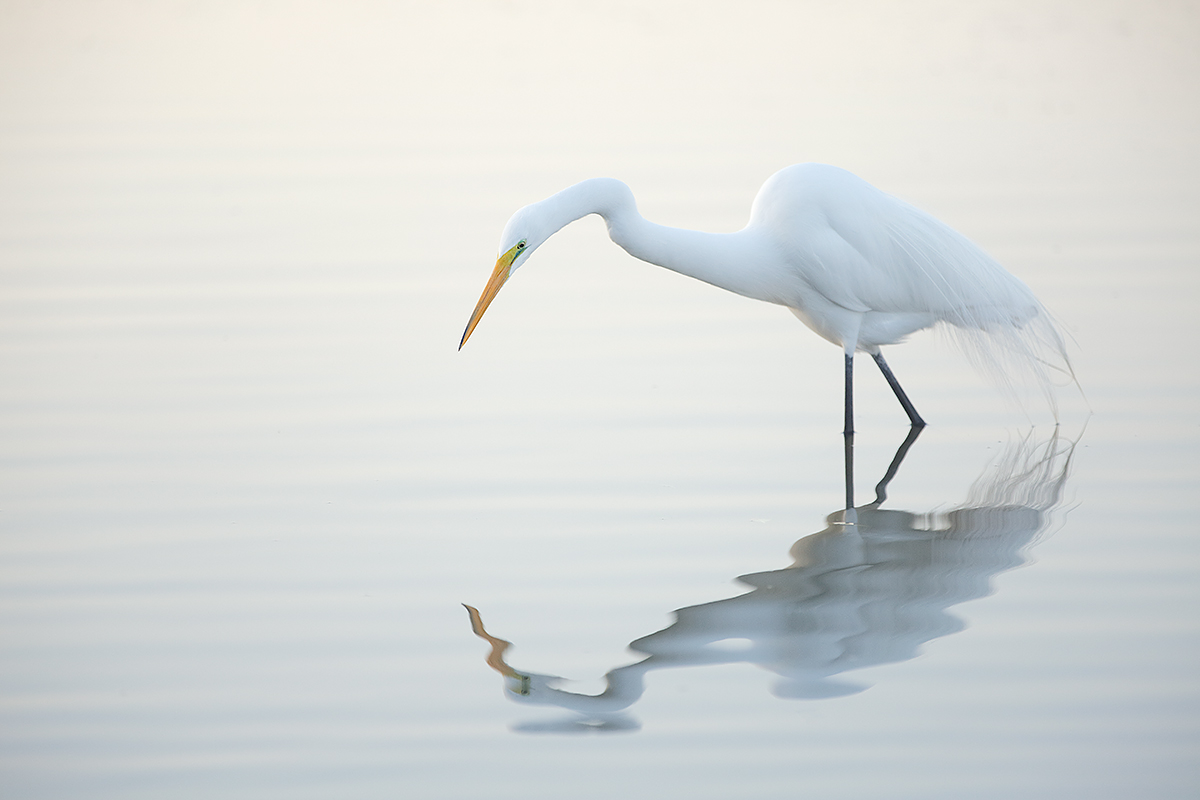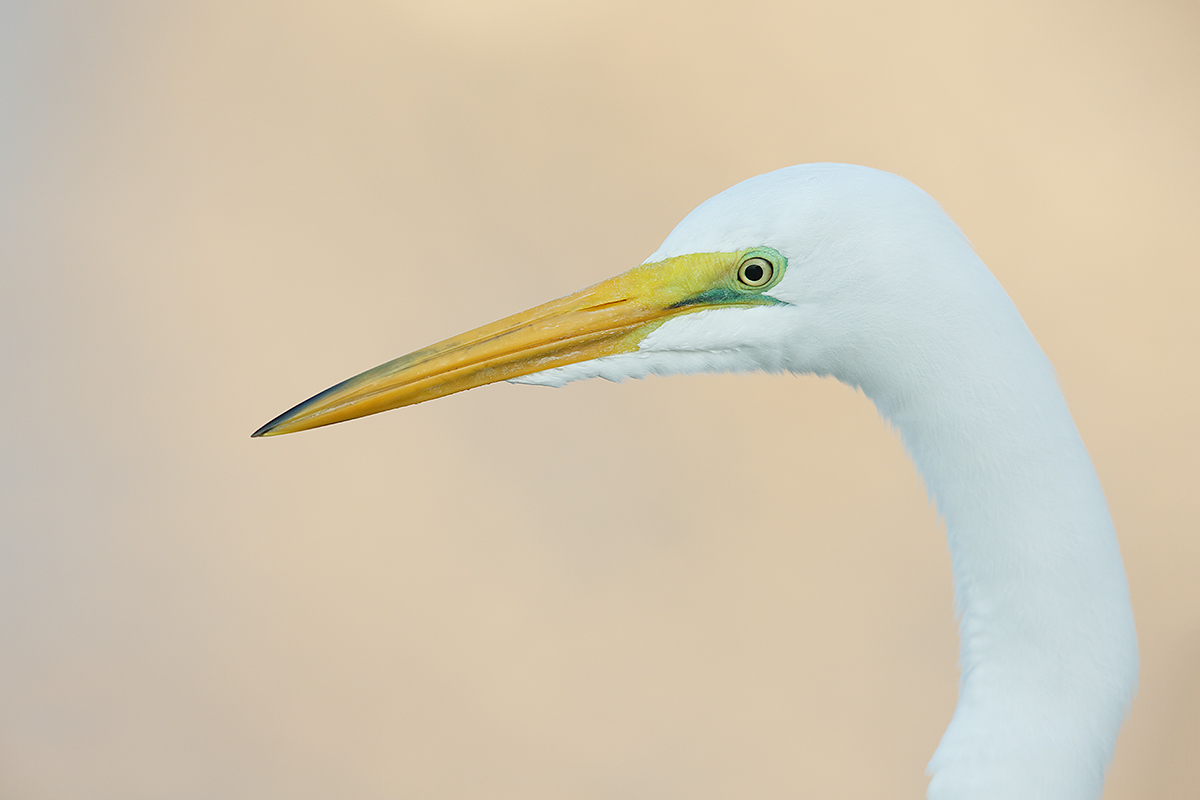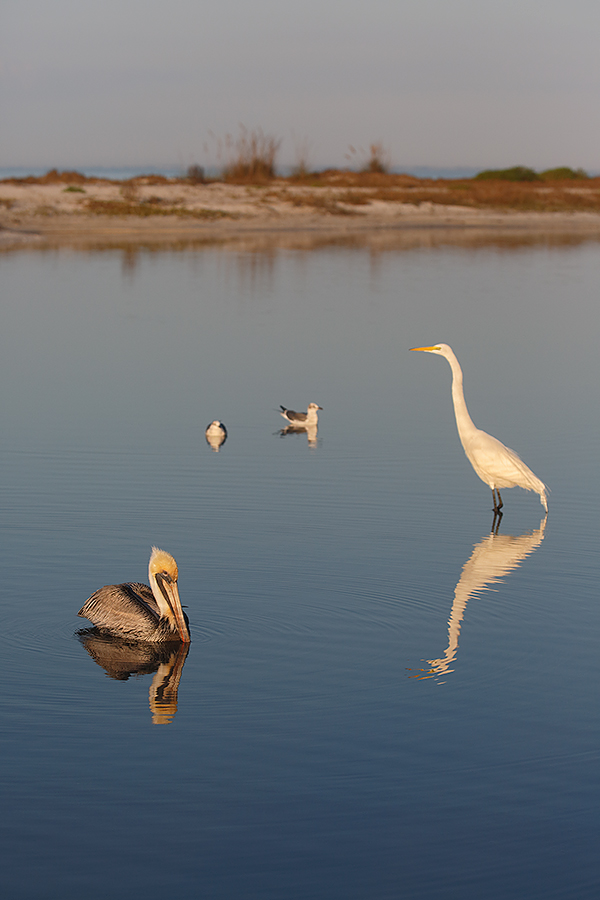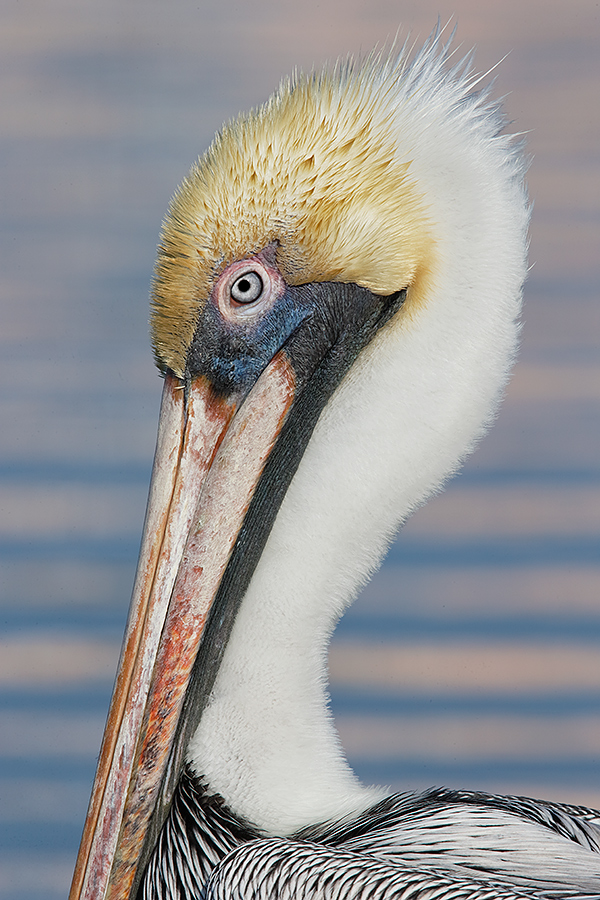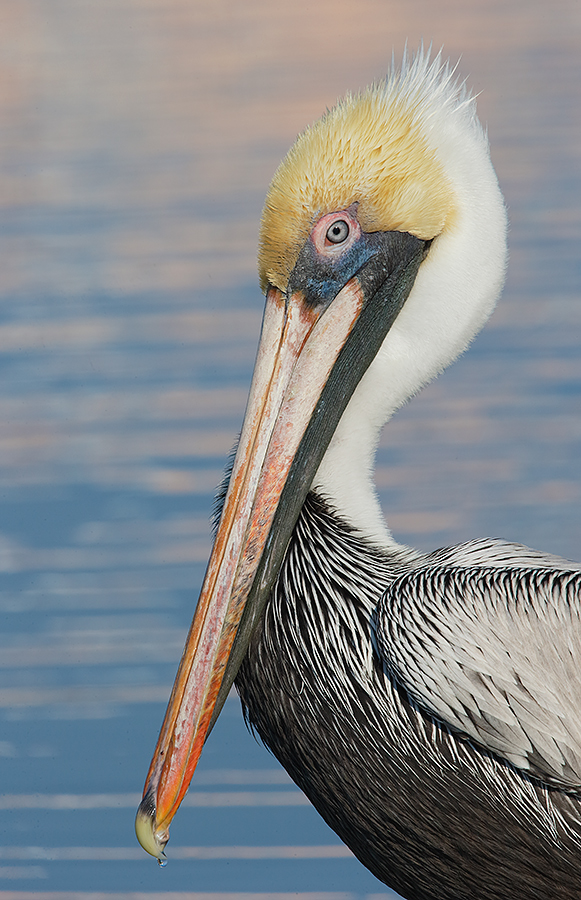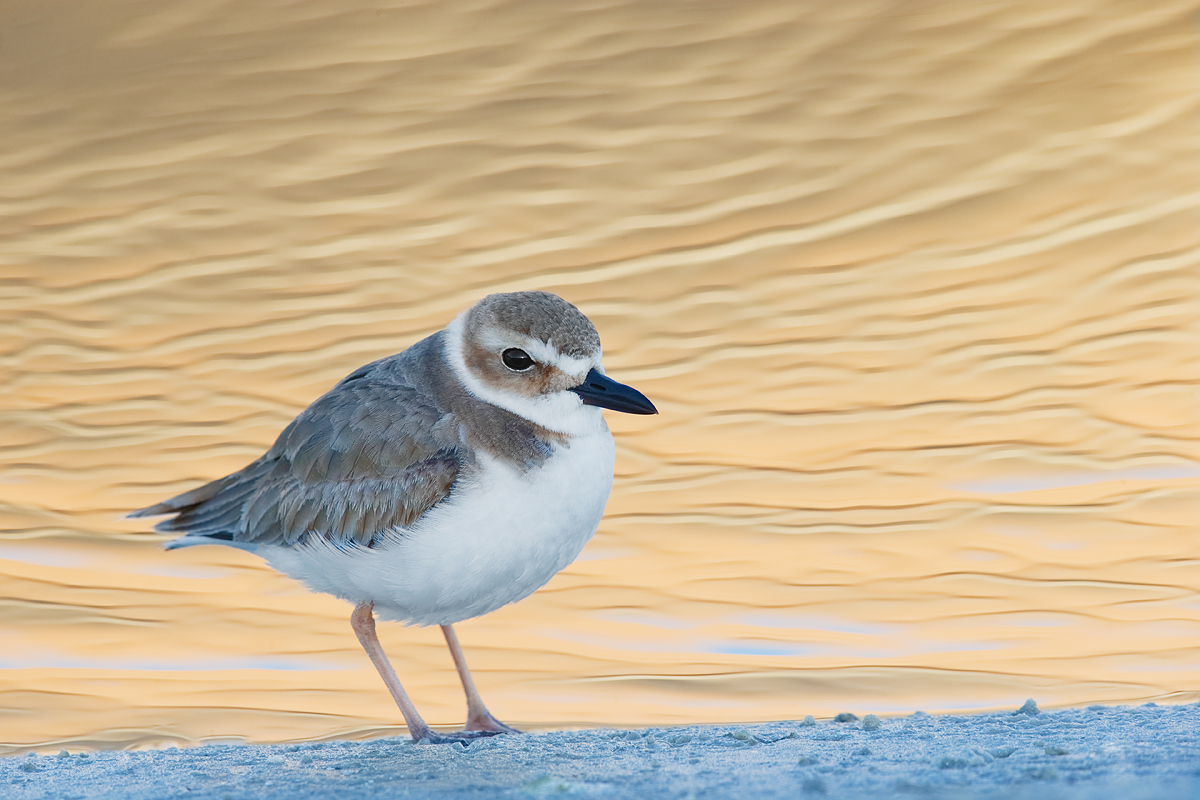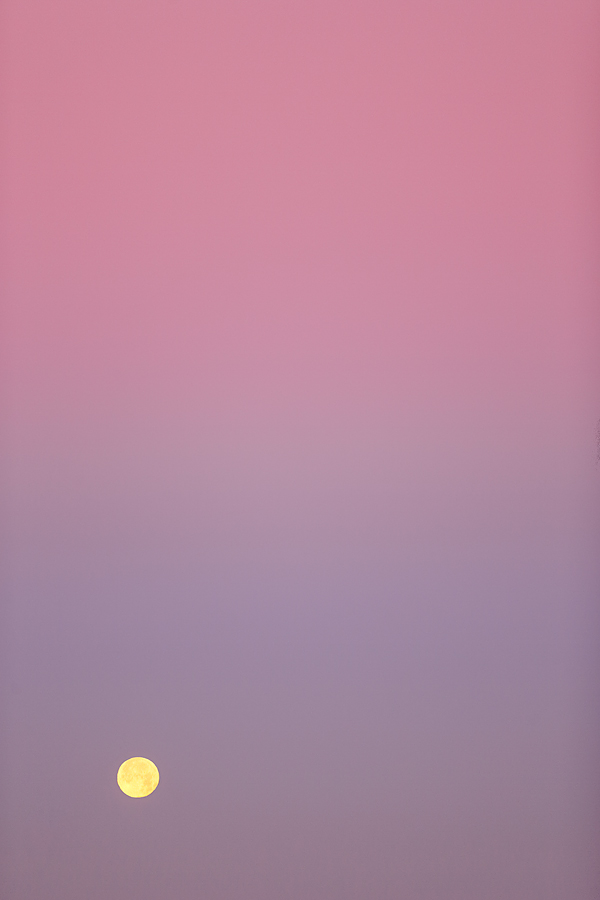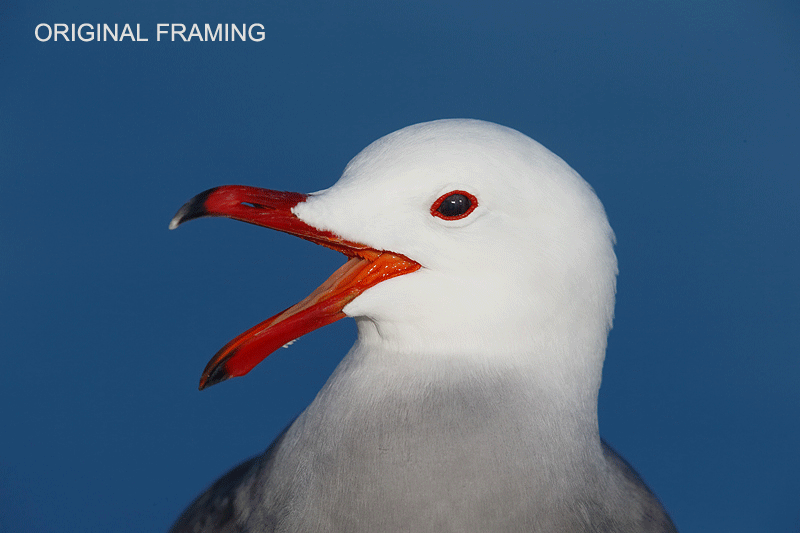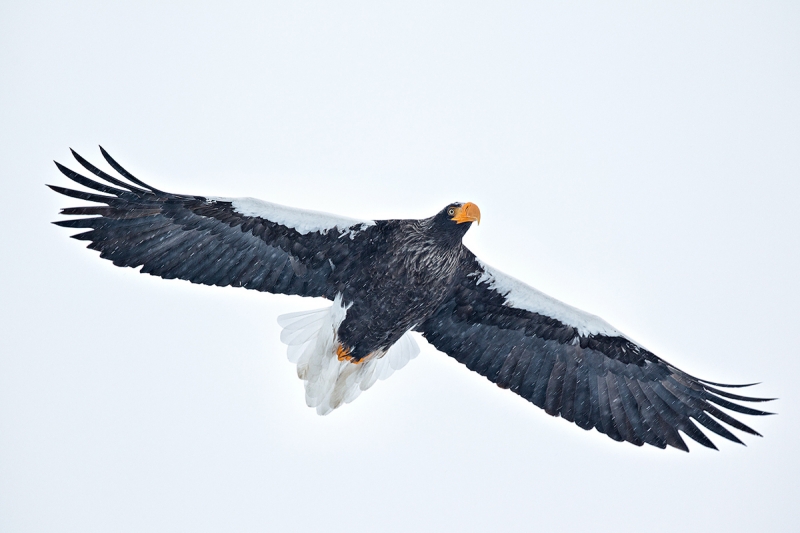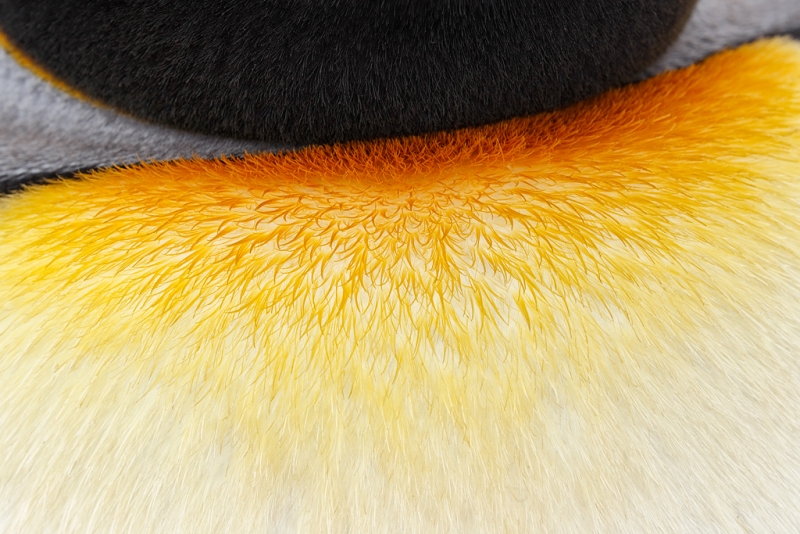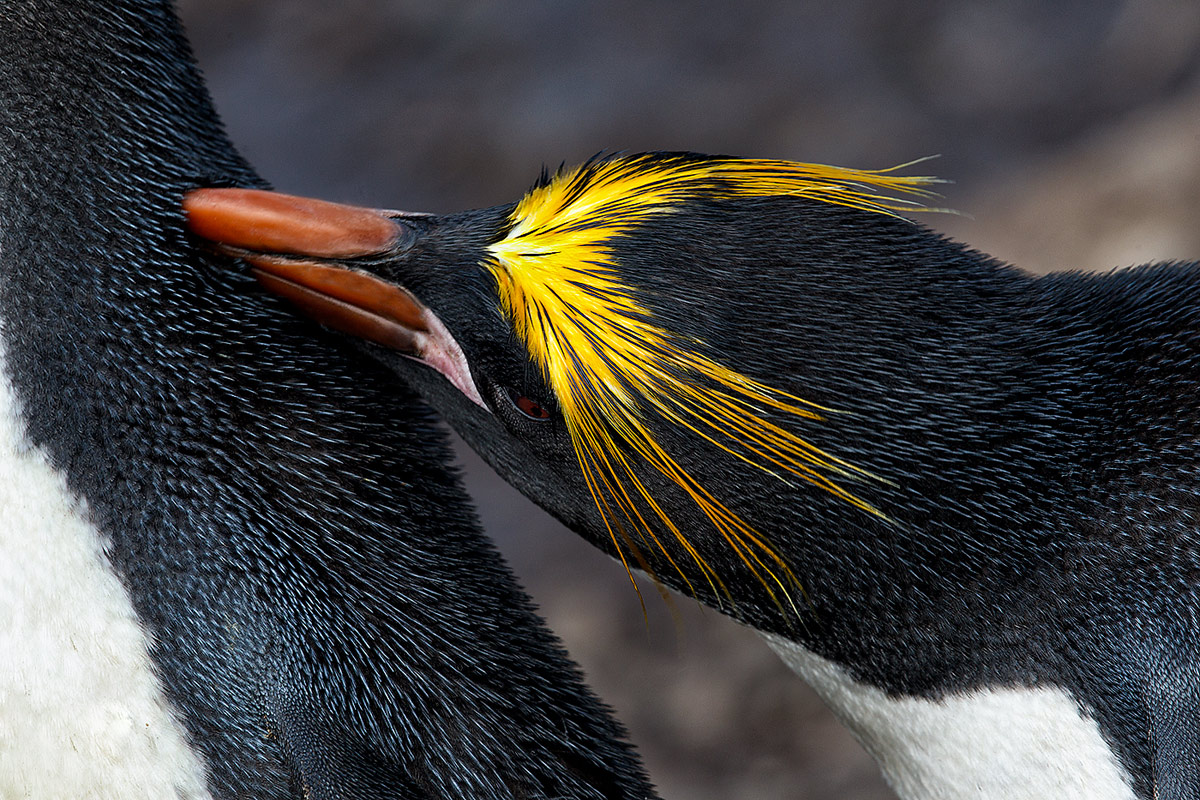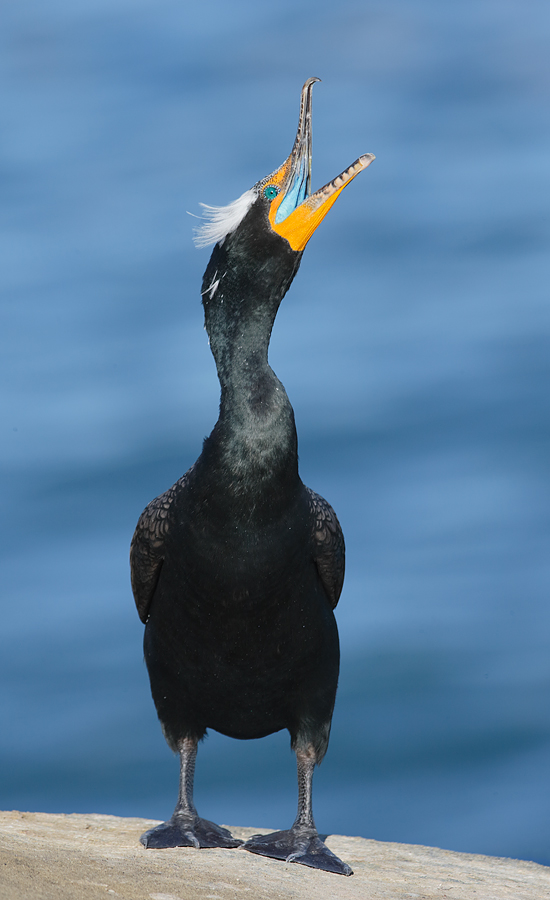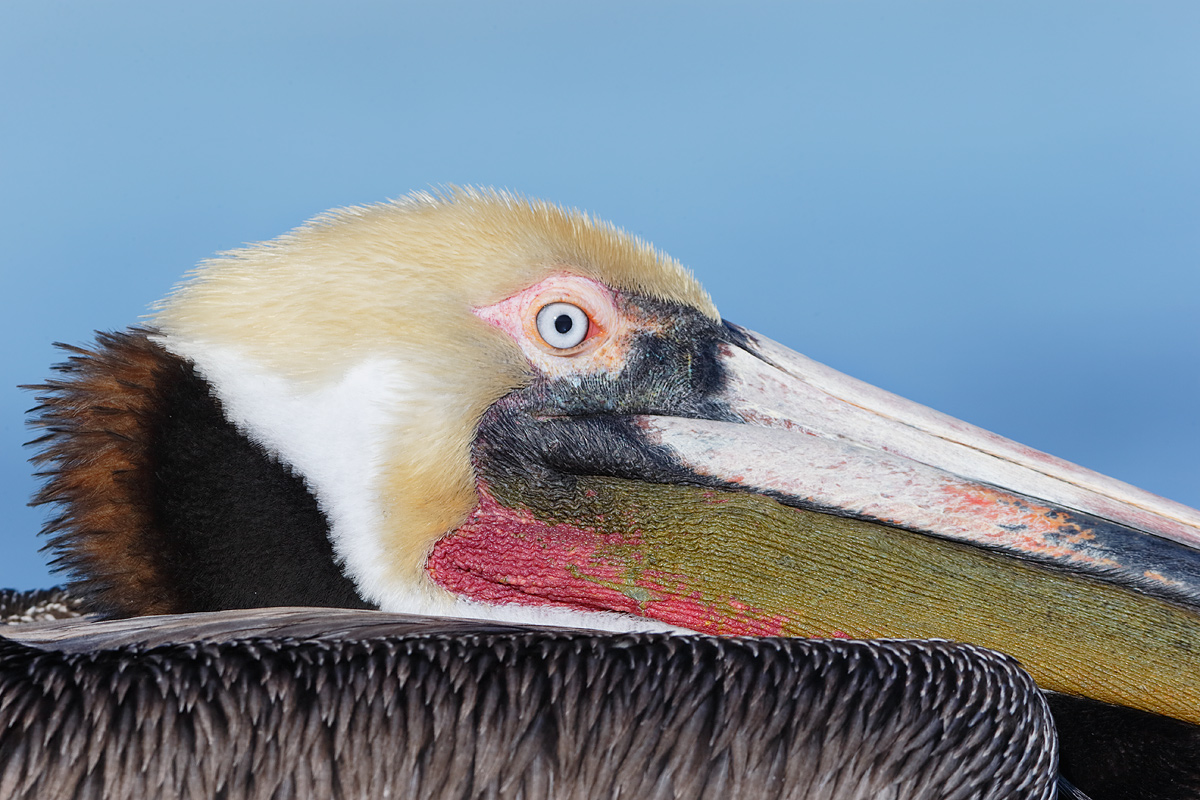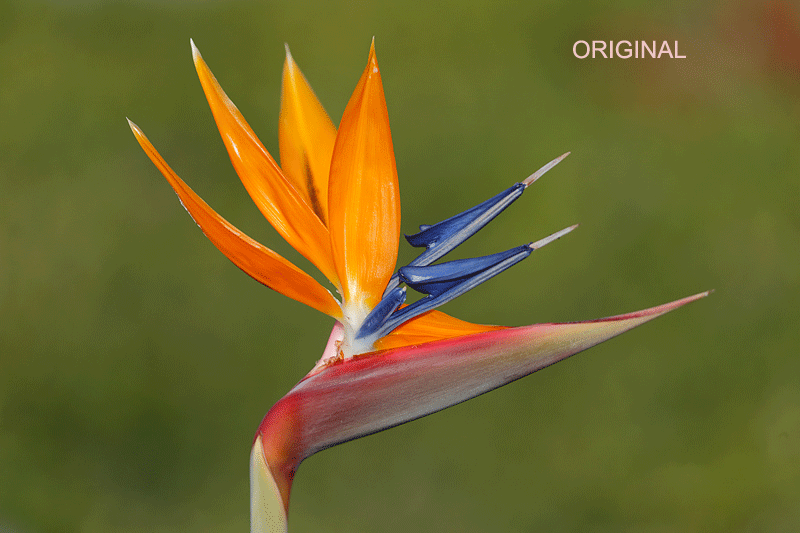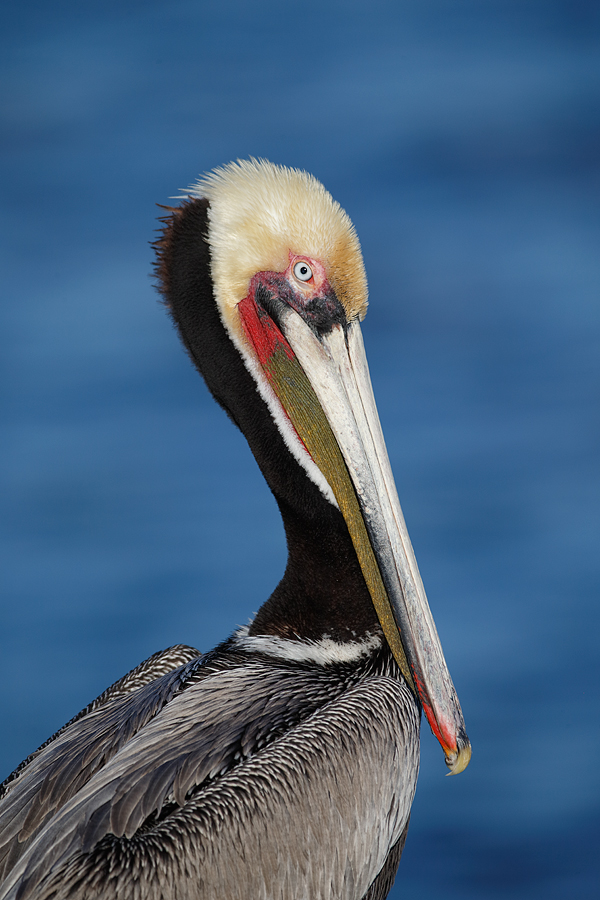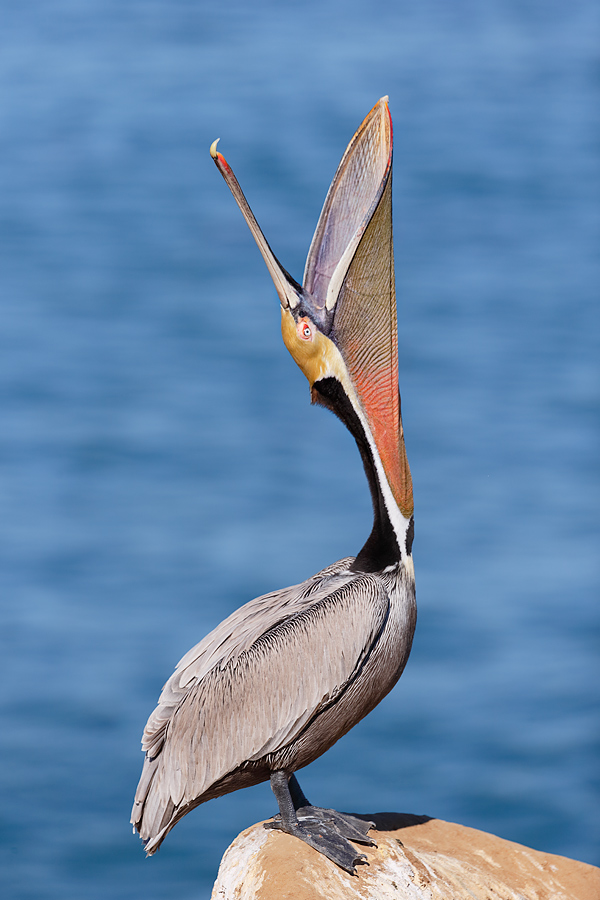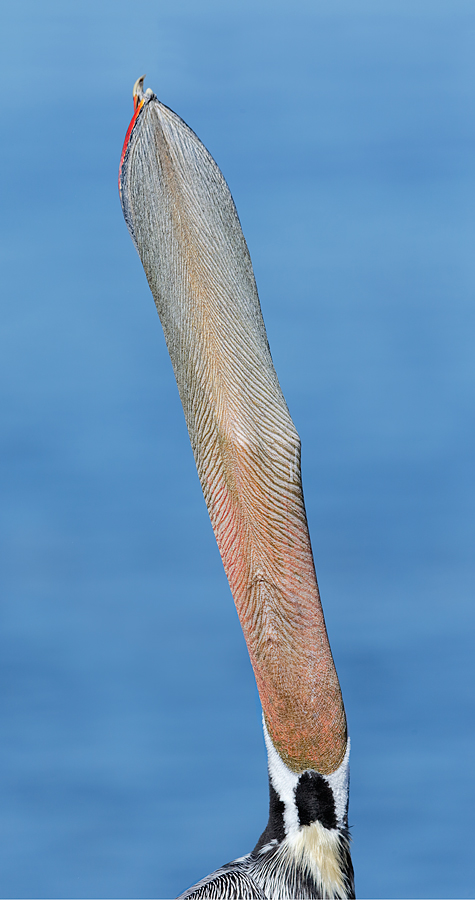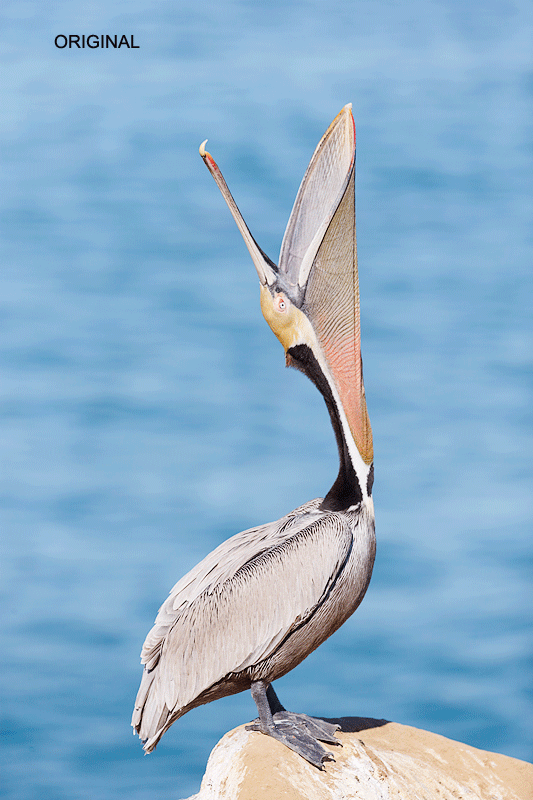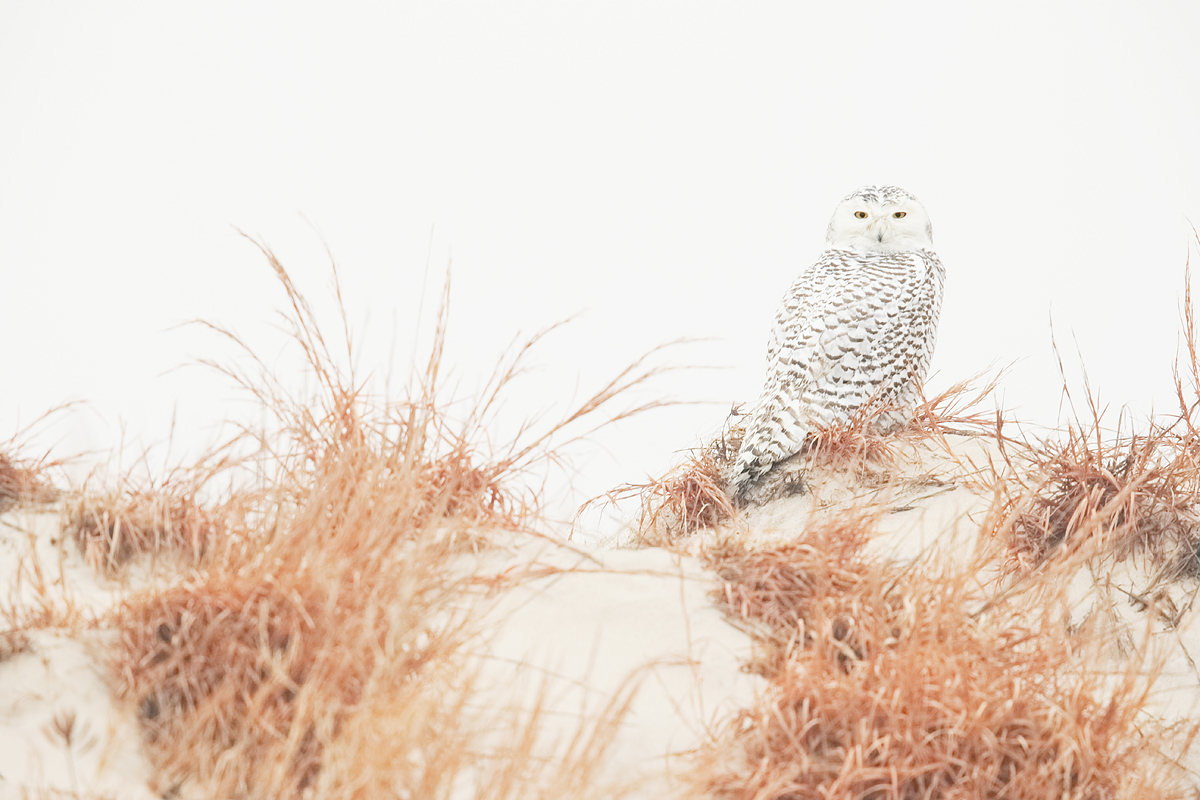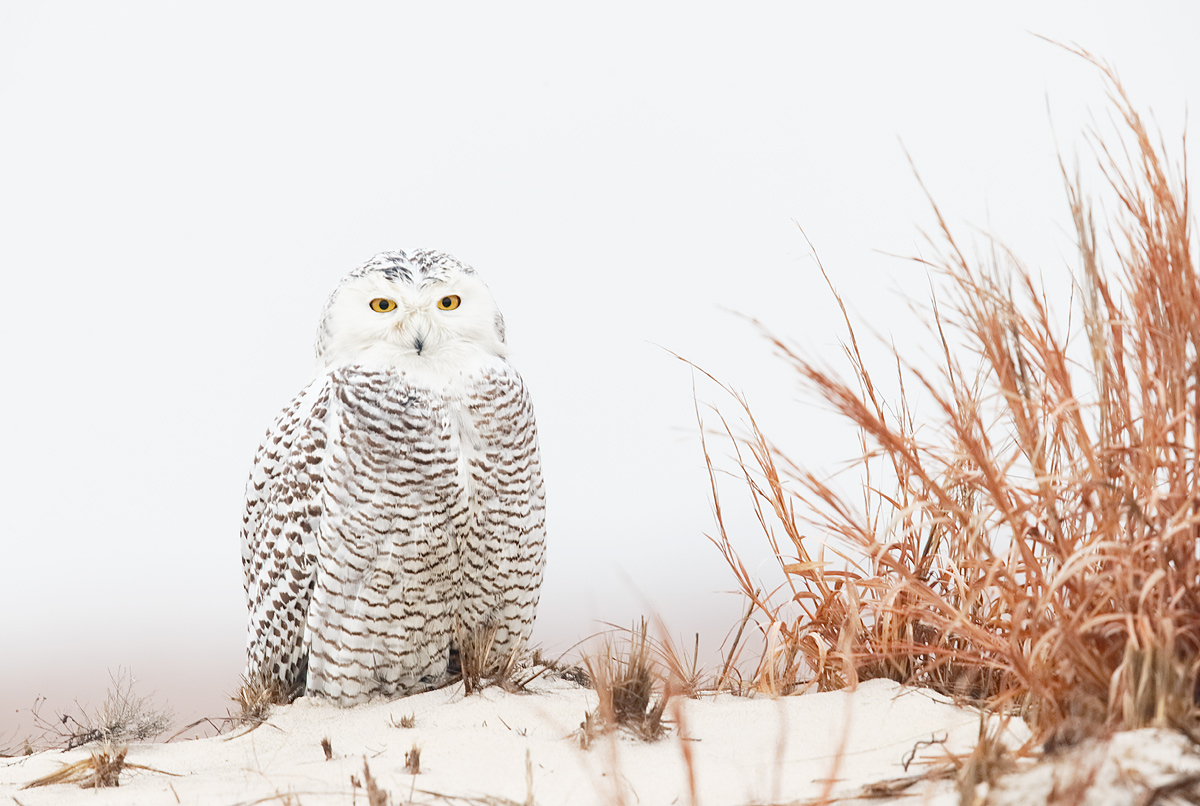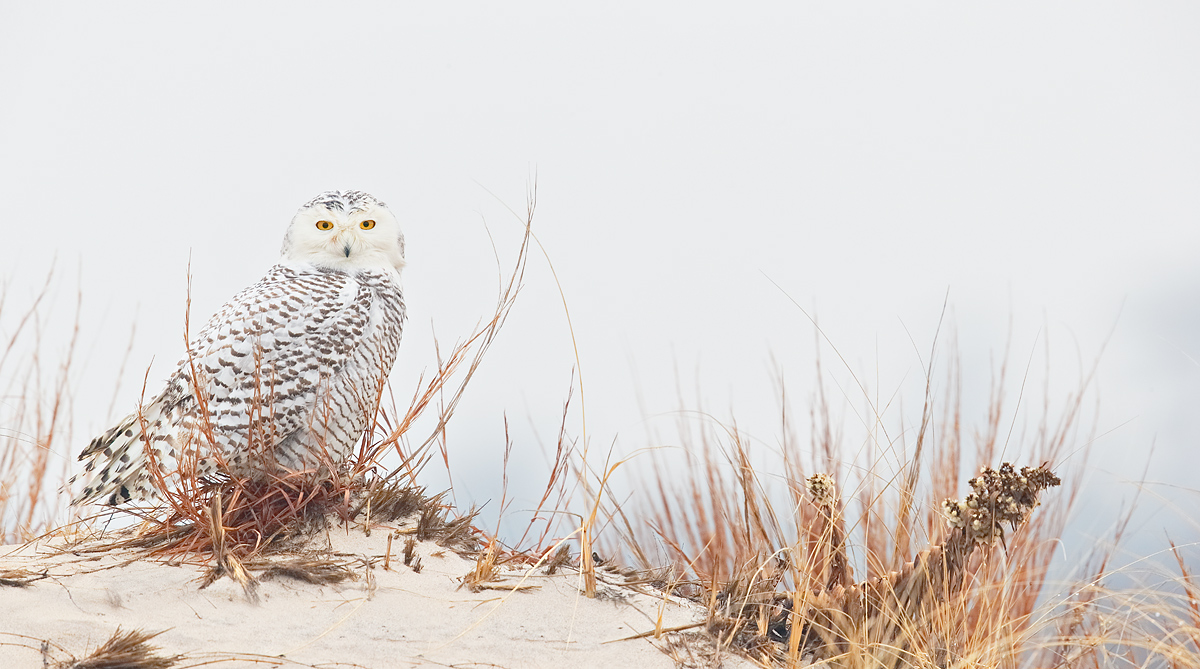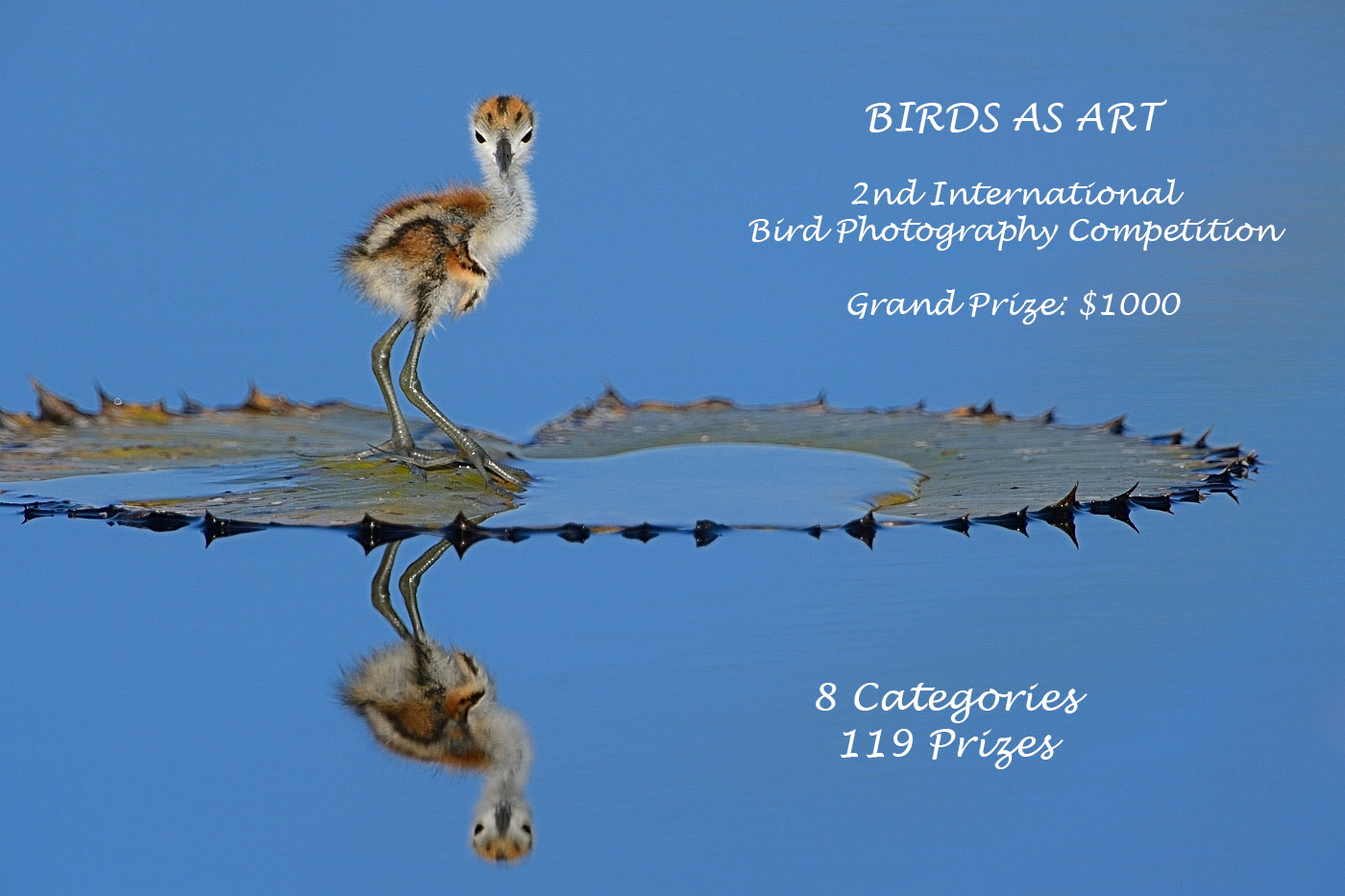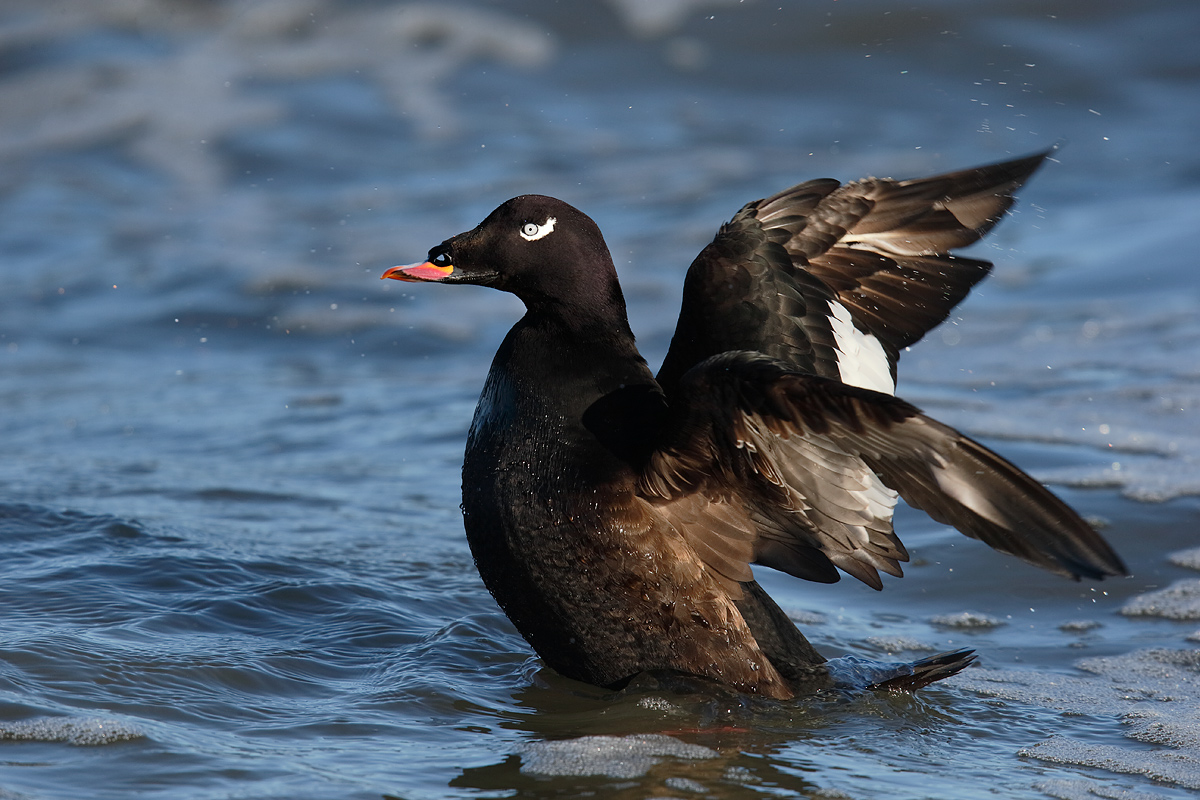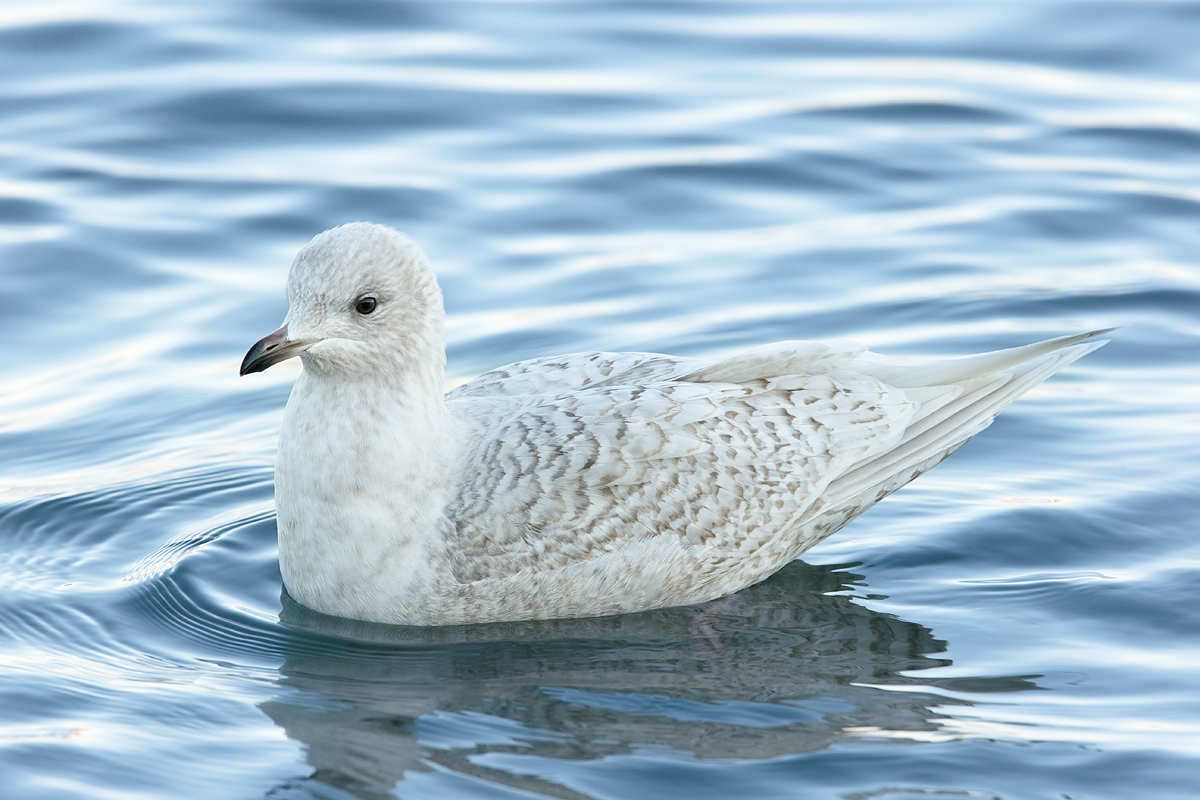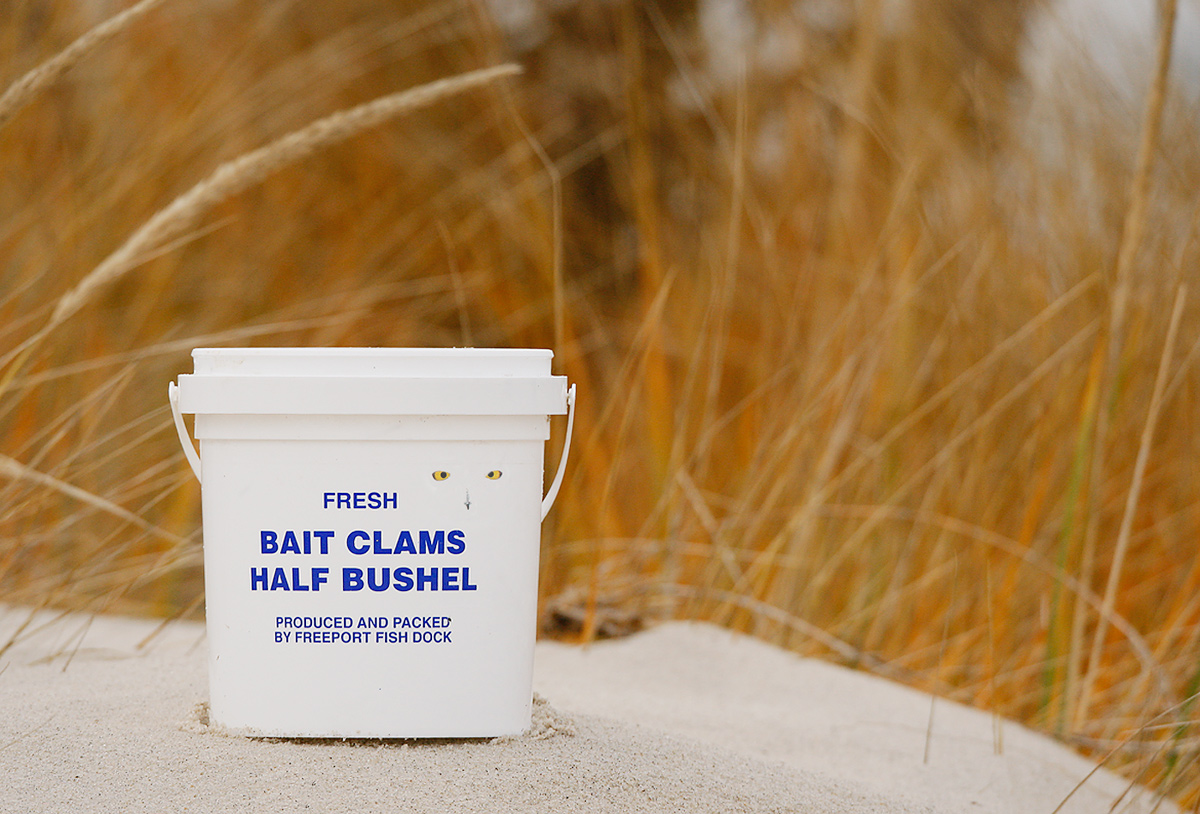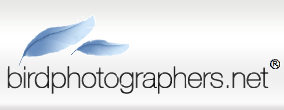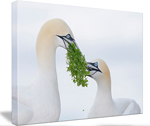January 31st, 2014 And the Streak Continues
This post marks 66 days in a row with a new educational blog post, a record by far that should be extended for at least another week or two. Or not. 🙂 To show your appreciation, we ask that use our B&H and Amazon affiliate links for all of your B&H and Amazon purchases. Please check the availability of all photographic accessories in the BIRDS AS ART Online Store. We sell only what I use and depend on. We will not sell you junk. We know what you need to make creating great images easy and fun. And we are always glad to answer your gear questions via e-mail.
You can find the following items in the store: Gitzo tripods, Mongoose M3.6 and Wimberley heads, plates, low feet, and accessories, flash brackets, , Delkin e-film Pro Compact Flash Cards, LensCoat products, and our unique line-up of educational materials including ABP I & II, Digital Basics, Site and Set-up e-Guides, Canon and Nikon Camera Users and AF e-Guides, and MP-4 Photoshop video tutorials among others.
We would of course appreciate you using our B&H and Amazon affiliate links for all of your B&H and Amazon major gear, video, electronic, household, and personal purchases. For the photographic stuff mentioned in the paragraph above we would of course greatly appreciate your business.
Thanks and enjoy today’s blog post! This one took about 2 1/2 hours to assemble. I continue to feel better and stronger each day. I am probably at about 75% right now.
This is the last day to enter the BIRDS AS ART 2nd International Bird Photography Competition!
With so many folks signing up at the last minute at the end of December and with so many folks having trouble uploading their images due to server overload, the deadline for entering the contest (registering and paying) was extended just before the end of the last year until January 31, 2014. There will be no additional extensions. The deadline for uploading your images has been extended until midnight Eastern time on February 10, 2014. Take advantage of this extension to have a crack at the great prizes.
Learn more and enter the BIRDS AS ART 2nd International Bird Photography Competition here. Twenty-five great prizes including the $1000 Grand Prize and intense competition. Bring your best.
Register and Pay
To register click here.
To learn of payment options, click here.
|
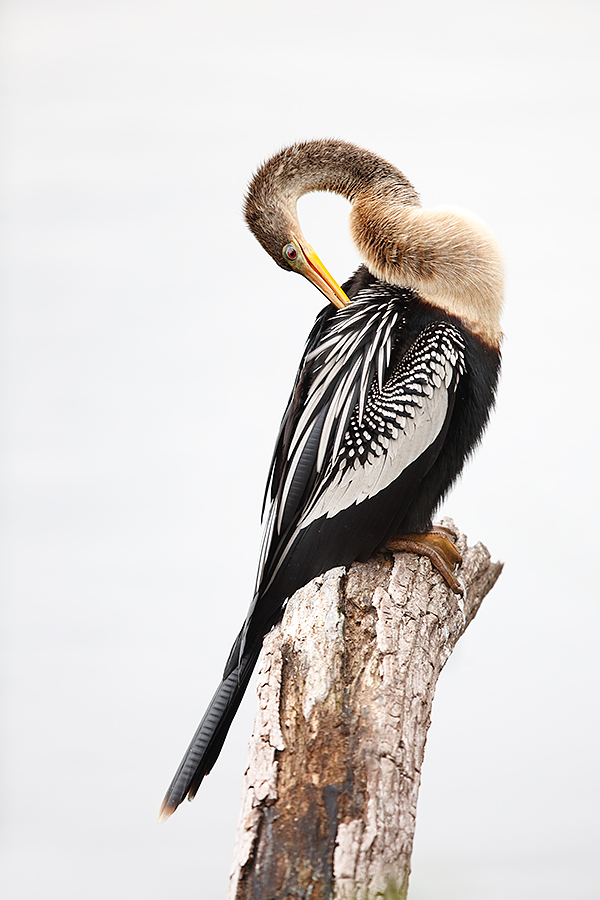
|
|
This female Anhinga image was created at 8:00am on morning 1 of the Venice Rookery IPT with the Gitzo 3532 LS carbon fiber tripod, the Mongoose M3.6 head, the Canon EF 600mm f/4L IS II USM lens, and the Canon EOS 5D Mark III . ISO 640. Evaluative metering +1 stop: 1/80 sec. at f/4.5 in Manual mode.
Central sensor Surround/AI Servo/Rear Focus on the bird’s eye and re-compose. Click here if you missed the Rear Focus Tutorial. Click on the image to see a larger version.
|
The Main Advantage of f/4 Super-telephoto Lenses in the Predawn
The Basics
The main advantage of using an f/4 (or even an f/2.8 like the 300mm f/2.8 lenses from both Canon and Nikon) super-telephoto lens in the low light of pre-dawn is lens speed, the light gathering capabilities of a given lens. f/2.8 lenses gather one stop more light than f/4 lenses and f/4 lenses gather one stop more light than f/5.6 lenses. Faster lenses weigh more than slower lenses and cost a lot more than slower lenses because the size of the widest aperture requires larger lens elements so that the lenses can gather the prescribed amount of light at f/4 (or at f/2.8).
One stop more light lets you work one stop faster, or alternatively, to use one stop lower ISO. Both of these are huge advantages in low light, predawn conditions.
|
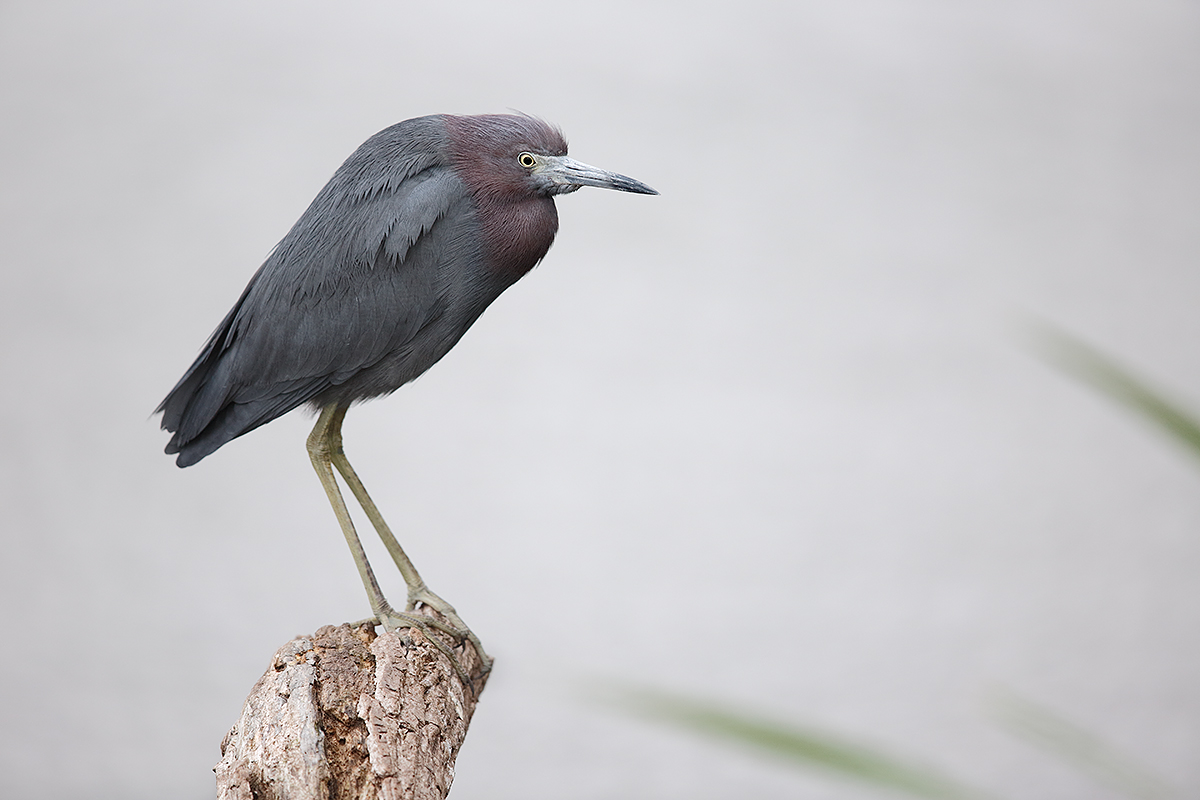
|
|
This horizontal adult Little Blue Heron image was created at 7:45 am on morning 1 of the Venice Rookery IPT with the Gitzo 3532 LS carbon fiber tripod, the Mongoose M3.6 head, the Canon EF 600mm f/4L IS II USM lens, and the Canon EOS 5D Mark III . ISO 800. Evaluative metering +1 stop: 1/60 sec. at f/4 in Manual mode.
Central sensor Surround/AI Servo/Rear Focus on the bird’s eye and re-compose. Click here if you missed the Rear Focus Tutorial. Click on the image to see a larger version.
|
Predawn Strategies
In most predawn situations you are fighting for light, fighting for shutter speed, and fighting to lower your ISO settings. The lone exception might be when you are creating strong silhouettes against brightly lit and colored skies.
1-Choose the widest aperture so that you can enjoy relatively fast shutter speeds.
2-Avoid approaching your subject closely; the farther back you stay, the more depth-of-field you will enjoy.
3-Look for situations (like those here) where the subjects present themselves relatively flat, that is, all on one plane. To some degree this eliminates the need for extra depth-of-field.
4-Keep your teleconverters in your pocket if at all possible unless you are using an f/2.8 lens or unless you absolutely need it.
5-Use your best sharpness techniques. Lock the tripod head. Press your face against the back of the camera. Have your left hand and arm somewhere to settle things. I usually prefer keeping my hand on the bottom of the lens barrel well away from the camera.
6-Working at the lowest shutter speed that you are confident with will allow you to use lower ISOs. With the 500 and 600mm f/4L IS II lenses I am supremely confident at 1/60 sec. and will often go to 1/30 sec. to get to a lower ISO.
ABP II
You can learn Advanced Sharpness Techniques in The Art of Bird Photography II. ABP II: 916 pages/900+ images each with our legendary BAA educational captions.
|
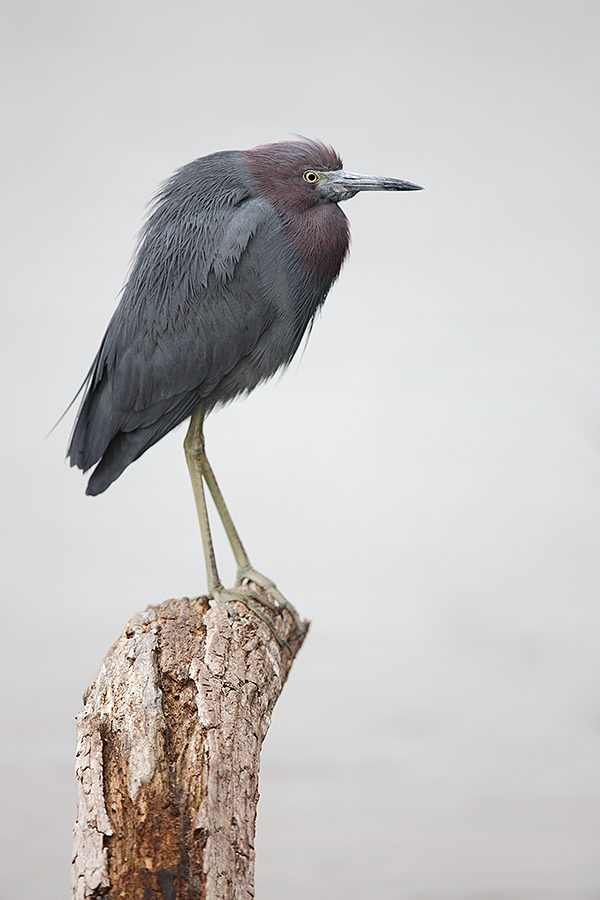
|
|
This vertical adult Little Blue Heron image was created at 7:46 am on morning 1 of the Venice Rookery IPT with the Gitzo 3532 LS carbon fiber tripod, the Mongoose M3.6 head, the Canon EF 600mm f/4L IS II USM lens, and the Canon EOS 5D Mark III . ISO 800. Evaluative metering +1 stop: 1/60 sec. at f/4 in Manual mode.
Central sensor Surround/AI Servo/Rear Focus on the bird’s eye and re-compose. Click here if you missed the Rear Focus Tutorial. Click on the image to see a larger version.
|
Image Questions
Which is your favorite image? Why?
Which of the two adult Little Blue Heron images do you prefer. Why?
APTATS I & II and Digital Basics
You can learn advanced Quick Masking Techniques and more in APTATS I, and advanced Image Repair and Layer Masking Techniques in APTATS II. Mention this blog post and Jim will be glad to apply a $5 discount on your APTATS I purchase with phone orders only. Mention this blog post and Jim will be glad to apply a $10 discount on your APTATS II purchase with phone orders only. Order both to hone your Photoshop image clean-up skills and Jim will be glad to enter a $15 discount for the pair, on phone orders only.
Consider also my Digital Basics File, an instructional PDF that is sent via e-mail. It includes my complete digital workflow, dozens of great Photoshop tips, several different ways to expand canvas, all of my time-saving Keyboard Shortcuts, Quick Masking, Layer Masking, and NIK Color Efex Pro basics, my killer image clean-up techniques, Digital Eye Doctor, and tons more.
The DPP RAW Conversion Guide
To learn why I use Canon’s Digital Photo Professional (DPP) to convert every image that I work on, click here.
|
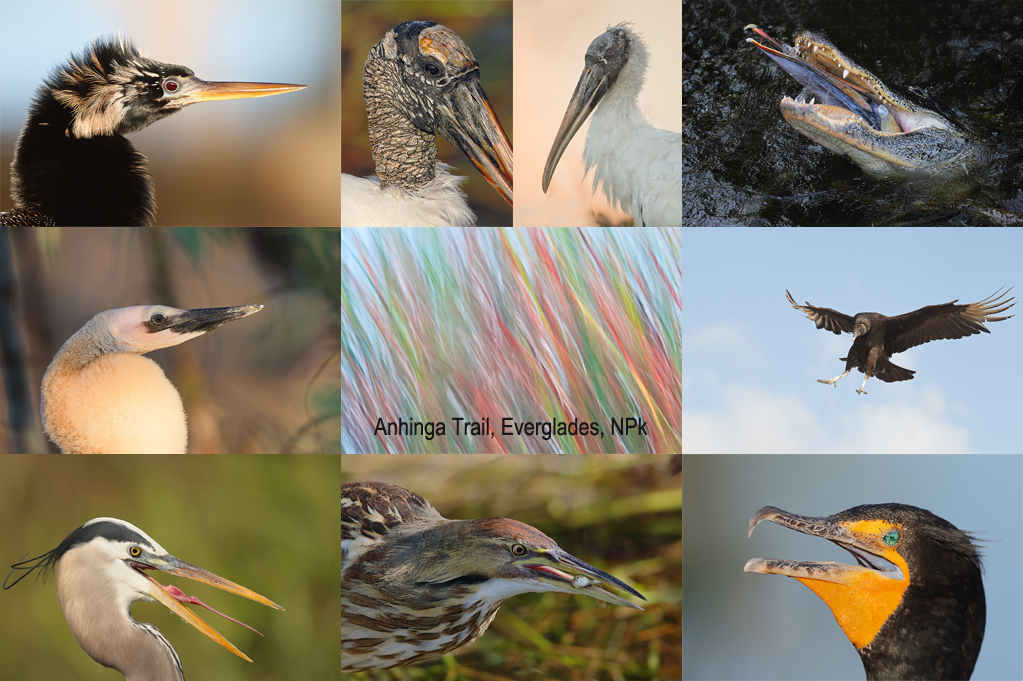
|
|
Bird Photography Hotspot: Anhinga Trail, Everglades National Park. Learn more here.
|
There is still time to join us for this IPT!
Anhinga Trail/Everglades National Park Mini-IPT: Feb 1-2, (SAT/SUN), 2014. (Limit 12/Openings 5): $799. Introductory slide program today: 7pm: FRI Jan 31. (Limit 12/Openings: 6):
Join Denise Ippolito and Arthur Morris for four great photography sessions at one of the top bird photography hotspots in North America. Morning sessions: 6:15am to 10:30am. Afternoon sessions: 3:00pm till 5:45pm. Lunch included. Informal image review and Photoshop sessions after lunch. Please e-mail if you would like to join us at the last second. There is a 15% late registration discount. Or call my cell at 863-221-2372 and leave a message if I do not answer.
Support the BAA Blog. Support the BAA Bulletins: Shop B&H here!
We want and need to keep providing you with the latest free information, photography and Photoshop lessons, and all manner of related information. Show your appreciation by making your purchases immediately after clicking on any of our B&H or Amazon Affiliate links in this blog post. Remember, B&H ain’t just photography!


 


Amazon
Everyone buys something from Amazon, be it a big lens or deodorant. Support the blog by starting your search by clicking on the logo-link below. No purchase is too small to be appreciated; they all add up. Why make it a habit? Because I make it a habit of bringing you new images and information on an almost daily basis.
Typos
In all blog posts and Bulletins, feel free to e-mail or to leave a comment regarding any typos, wrong words, misspellings, omissions, or grammatical errors. Just be right. 🙂
IPT Info
Many of our great trips are filling up. See especially info on the South Florida, Holland, and Nickerson Beach IPTs. Two great leaders on most trips ensure that you will receive individual attention, have all of your questions answered, and learn a ton including how to think like a pro, see the situation, and get the right exposure every time. In addition you will have fun, and make lots of great images. Click here for IPT details and general information.
January 30th, 2014 And the Streak Goes On
As noted below, the Venice Rookery IPT enjoyed a great first session yesterday. This post marks 65 days in a row with a new educational blog post, a record by far that should be extended for at least another week or two. Or not. 🙂 To show your appreciation, we ask that use our B&H and Amazon affiliate links for all of your B&H and Amazon purchases. Please check the availability of all photographic accessories in the BIRDS AS ART Online Store. We sell only what I use and depend on. We will not sell you junk. We know what you need to make creating great images easy and fun. And we are always glad to answer your gear questions via e-mail.
You can find the following items in the store: Gitzo tripods, Mongoose M3.6 and Wimberley heads, plates, low feet, and accessories, flash brackets, , Delkin e-film Pro Compact Flash Cards, LensCoat products, and our unique line-up of educational materials including ABP I & II, Digital Basics, Site and Set-up e-Guides, Canon and Nikon Camera Users and AF e-Guides, and MP-4 Photoshop video tutorials among others.
We would of course appreciate you using our B&H and Amazon affiliate links for all of your B&H and Amazon major gear, video, electronic, household, and personal purchases. For the photographic stuff mentioned in the paragraph above we would of course greatly appreciate your business.
Thanks and enjoy today’s blog post! This one took about 3 hours to assemble.
1 Day Left to Enter! BIRDS AS ART 2nd International Bird Photography Competition!
With so many folks signing up at the last minute at the end of December and with so many folks having trouble uploading their images due to server overload, the deadline for entering the contest (registering and paying) was extended just before the end of the last year until January 31, 2014. There will be no additional extensions. The deadline for uploading your images has been extended until midnight Eastern time on February 10, 2014. Take advantage of this extension to have a crack at the great prizes.
Learn more and enter the BIRDS AS ART 2nd International Bird Photography Competition here. Twenty-five great prizes including the $1000 Grand Prize and intense competition. Bring your best.
Register and Pay
To register click here.
To learn of payment options, click here.
The Usual Gloom and Doom Stuff…
Several folks had told me both by e-mail and at the seminar on Tuesday afternoon that photographic conditions at the Venice Rookery were poor this year: few nesting birds and sparse, dying vegetation. I took those warnings with a grain of salt as I usually do. Though the weather was lousy–a bit a fog at first, then cloudy dark till well after noon when we finally quit for lunch, we had one of the best mornings at Venice in many years. The east northeast wind was pretty darned good for flight. There are a few GBH nests positioned perfectly for photography, and there was lots of flight and chick-feeding action. As I see it, conditions at Venice are excellent.
What does the above story show? That most folks have no clue as to how to recognize a good or great situation. That’s something that you can only learn by attending an IPT or a seminar.
Lens Drive When AF Impossible
Many of the more recent Canon cameras including the 1D X, the 5D III, and the Mark IV have the Lens Drive When AF Impossible feature. It is poorly named, poorly explained in the camera body manuals, and is universally mis-understood. In our Camera User’s Guides this feature is clearly explained as are the situations that call for its use. For the image above I turned it to “Stop focus search/OFF” to keep the AF system from hunting for the background when the sensor invariably fell off the subject. For the image above it worked to perfection.
|
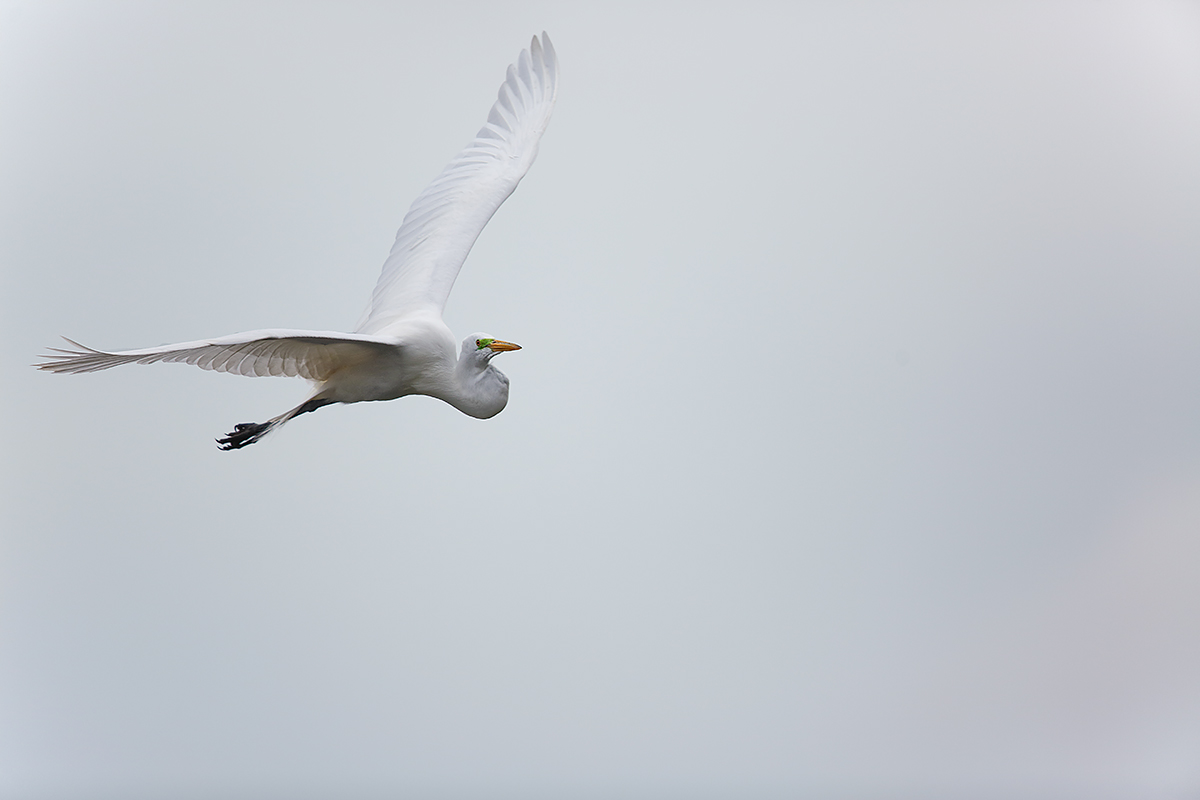
|
|
This Great Egret flight image was created yesterday morning on the Venice Rookery IPT with the Gitzo 3532 LS carbon fiber tripod, the Mongoose M3.6 head, the Canon EF 600mm f/4L IS II USM lens, and the Canon EOS 5D Mark III . ISO 400. Evaluative metering +2 stops off the grey sky: 1/2000 sec. at f/4 in Manual mode.
One sensor to the left and one row above the Central sensor Surround/AI Servo/Rear Focus just caught the bird’s face and was of course active at the moment of exposure. Click here if you missed the Rear Focus Tutorial. Click on the image to see a larger version.
|
Exposure Lesson
In yesterday’s dank lighting conditions, a Great Egret required 1 1/3 stops less light than a Great Blue Heron. This was a bit more than I expect. We taught the group to work in manual mode and to adjust the exposure by 4 clicks with the index finger wheel when switching from a Great Egret to a GBH. Everyone grasped this principle quickly and was able to apply it on the spot. If you wanted to photograph a GBH in the same light as the GE above, you needed to go four clicks of shutter speed light, from 1/2000 sec. to 1/800 sec.
Lesson learned.
The Original Image Capture
Though it was a bit brighter for this image than for the Great Egret image, I screwed up the exposure settings a bit. I wanted to open up four clicks from the 1/2500 sec. shutter speed I had had set but my finger only registered 2 of the 4 intended clicks. I did have gloves on :). IAC, the image above is a bit dark. And worst of all, I clipped the toe.
We worked this image as a group as our afternoon session was rained out. In anticipation of that our morning shooting was extended to more than 6 hours. I moved the bird up and back in the frame using techniques from APTATS II. I replaced the missing toenail using advanced Quick Masking techniques from APTATS II. I ran my NIK 50/50 pre-set on the bird only after selecting it with the Quick Selection Tool, did some Eye Doctor work,, and did some additional work on the bird’s face and neck after selecting those areas with the Quick Selection Tool. That work include a big Vibrance adjustment and a Contrast Mask. All that in addition to a bit of color correction and a brightness adjustment.
|
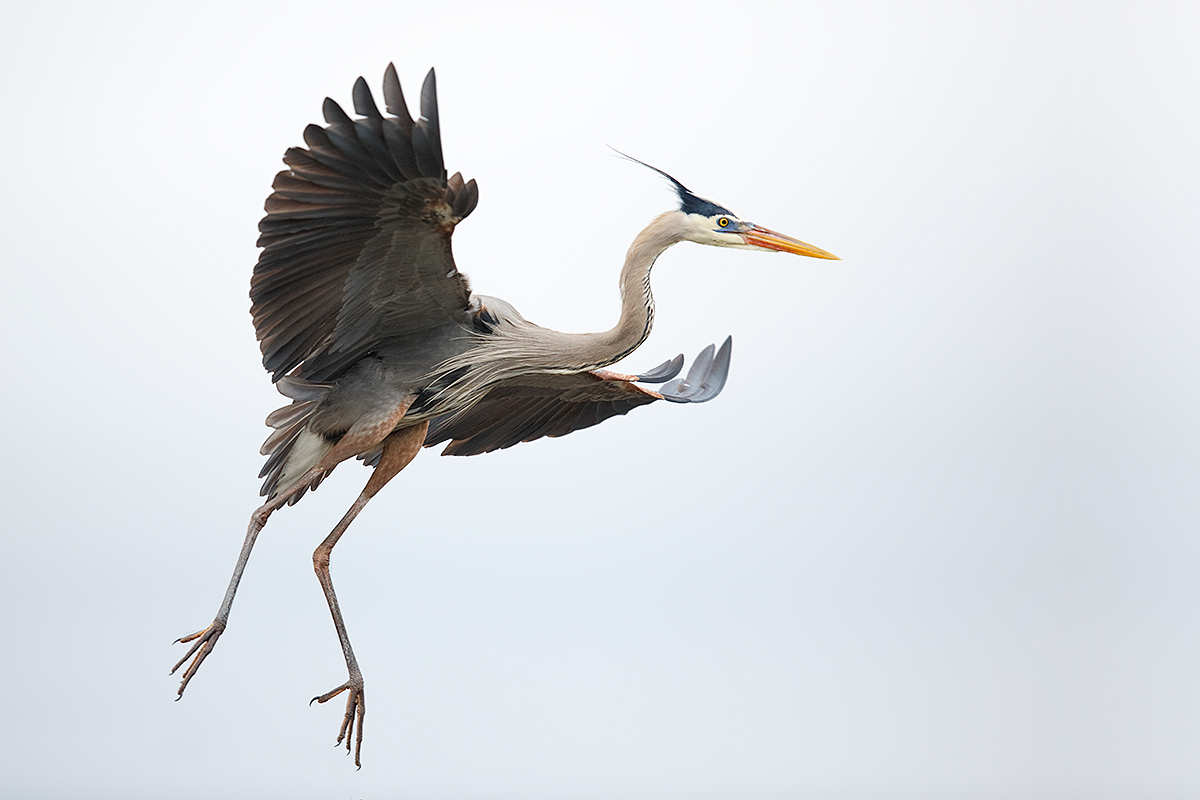
|
|
This is the optimized image that was created from the original image capture above.
|
Just For The Record Book
Just for the record book, here is the name of the image file: Great Blue Heron in flight added toe _A1C1149 Venice Rookery, South Venice, FL.tif. I strongly believe in letting editors know when significant changes have been made to an image.
APTATS I & II and Digital Basics
You can learn advanced Quick Masking Techniques and more in APTATS I, and advanced Image Repair and Layer Masking Techniques in APTATS II. Mention this blog post and Jim will be glad to apply a $5 discount on your APTATS I purchase with phone orders only. Mention this blog post and Jim will be glad to apply a $10 discount on your APTATS II purchase with phone orders only. Order both to hone your Photoshop image clean-up skills and Jim will be glad to enter a $15 discount for the pair, on phone orders only.
All of the rest of the stuff I did to create the optimized file is detailed in my Digital Basics File, an instructional PDF that is sent via e-mail. It includes my complete digital workflow, dozens of great Photoshop tips, several different ways to expand canvas, all of my time-saving Keyboard Shortcuts, Quick Masking, Layer Masking, and NIK Color Efex Pro basics, my killer image clean-up techniques, Digital Eye Doctor, and tons more.
The DPP RAW Conversion Guide
To learn why I use Canon’s Digital Photo Professional (DPP) to convert every image that I work on, click here.
The Neck
This bird was absolutely unconcerned with humans. Just out of the nest, he posed for us in various settings. Here he was playing with small sticks on the edge of the very small lake.
Image Question
Why did I go to f/14?
Why was I at ISO 800 for this image but ISO 400 for all the rest?

|
|
Bird Photography Hotspot: Anhinga Trail, Everglades National Park. Learn more here.
|
Anhinga Trail/Everglades National Park Mini-IPT: Feb 1-2, (SAT/SUN), 2014. (Limit 12/Openings 5): $799. Introductory slide program: 7pm: FRI Jan 31. (Limit 12/Openings: 6):
Join Denise Ippolito and Arthur Morris for four great photography sessions at one of the top bird photography hotspots in North America. Morning sessions: 6:15am to 10:30am. Afternoon sessions: 3:00pm till 5:45pm. Lunch included. Informal image review and Photoshop sessions after lunch.
Jan 31 (Friday) Anhinga Trail/Everglades National Park Optional Add-on/Morning Only (Limit 12/Openings 5): $249
Includes lunch, and informal image review and Photoshop session. Call us at 863-692-0906 or e-mail to learn of the Late Registration Discounts for both the segments and the complete trip.
Because of our intense travel schedule that includes a trip to Japan I will not be running the traditional SW FLA IPT. In addition, in an effort to give some folks a chance to get a taste of our teaching and our passion for bird photography, Denise Ippolito and I have organized a series of short IPTs that may be combined into one wonderful experience or enjoyed piecemeal. Click here for complete details or to register. Please e-mail with any questions or leave a comment below.
A $500 non-refundable deposit is required to hold your slot for this IPT. For the short segments that are less than $500 payment in full is due at the time of registration. Your balance is due 4 months before the date of the IPT and is also non-refundable. If the trip fills, we will be glad to apply a credit applicable to a future IPT for the full amount less a $100 processing fee. If we do not receive your check for the balance on or before the due date we will try to fill your spot from the waiting list. If your spot is filled, you will lose your deposit. If not, you can secure your spot by paying your balance. Best to call Jim or Jennifer with a credit card in hand to register. Credit cards are not accepted for balances. Alternatively you can send a check for $500 made out to Arthur Morris to us at PO Box 7245, Indian Lake Estates, FL, 33855. Please include a note with your e-mail address and be sure to let us know what you are signing up for.
Support the BAA Blog. Support the BAA Bulletins: Shop B&H here!
We want and need to keep providing you with the latest free information, photography and Photoshop lessons, and all manner of related information. Show your appreciation by making your purchases immediately after clicking on any of our B&H or Amazon Affiliate links in this blog post. Remember, B&H ain’t just photography!


 


Amazon
Everyone buys something from Amazon, be it a big lens or deodorant. Support the blog by starting your search by clicking on the logo-link below. No purchase is too small to be appreciated; they all add up. Why make it a habit? Because I make it a habit of bringing you new images and information on an almost daily basis.
Typos
In all blog posts and Bulletins, feel free to e-mail or to leave a comment regarding any typos, wrong words, misspellings, omissions, or grammatical errors. Just be right. 🙂
IPT Info
Many of our great trips are filling up. See especially info on the South Florida, Holland, and Nickerson Beach IPTs. Two great leaders on most trips ensure that you will receive individual attention, have all of your questions answered, and learn a ton including how to think like a pro, see the situation, and get the right exposure every time. In addition you will have fun, and make lots of great images. Click here for IPT details and general information.
January 29th, 2014 And the Streak Goes On
The seminar in Boca Grande, FL, yesterday, sponsored by Canon USA Explorers of Light, was a huge success. We had 163 folks in the main room and about 20 more watching a simulcast in an adjacent room. Denise and I felt like rock stars. Jo Ann Crebbin, the organizer, sent us a thank you e-mail. She wrote, “You two have made me a hero.” I was of course exhausted after the seminar but am feeling somewhat stronger this morning with my throat still bugging me. We start the Venice Rookery portion of the South Florida Composite IPT in 1 hour…..
This post marks 64 days in a row with a new educational blog post, a record by far that should be extended for at least another week or two. Or not. 🙂 To show your appreciation, we ask that use our B&H and Amazon affiliate links for all of your B&H and Amazon purchases. Please check the availability of all photographic accessories in the BIRDS AS ART Online Store. We sell only what I use and depend on. We will not sell you junk. We know what you need to make creating great images easy and fun. And we are always glad to answer your gear questions via e-mail.
You can find the following items in the store: Gitzo tripods, Mongoose M3.6 and Wimberley heads, plates, low feet, and accessories, flash brackets, , Delkin e-film Pro Compact Flash Cards, LensCoat products, and our unique line-up of educational materials including ABP I & II, Digital Basics, Site and Set-up e-Guides, Canon and Nikon Camera Users and AF e-Guides, and MP-4 Photoshop video tutorials among others.
We would of course appreciate you using our B&H and Amazon affiliate links for all of your B&H and Amazon major gear, video, electronic, household, and personal purchases. For the photographic stuff mentioned in the paragraph above we would of course greatly appreciate your business.
Thanks and enjoy today’s blog post! This one took about 2 1/2 hours to assemble.
Less Than 2 Days Left to Enter! BIRDS AS ART 2nd International Bird Photography Competition!
With so many folks signing up at the last minute at the end of December and with so many folks having trouble uploading their images due to server overload, the deadline for entering the contest (registering and paying) was extended just before the end of the last year until January 31, 2014. There will be no additional extensions. The deadline for uploading your images has been extended until midnight Eastern time on February 10, 2014. Take advantage of this extension to have a crack at the great prizes.
Learn more and enter the BIRDS AS ART 2nd International Bird Photography Competition here. Twenty-five great prizes including the $1000 Grand Prize and intense competition. Bring your best.
Register and Pay
To register click here.
To learn of payment options, click here.
An Early Morning Strategy That Goes Against the Grain…
Most everyone loves warm early morning light. Especially with white birds set against still blue water backgrounds. With nice reflections. We had that exact situation on Monday, the last morning of the Little Estero Lagoon IPT. I made many images of Great Egrets with the sun on them, but my two favorites were of birds in the shade….
In the image above, made at 7:28am, the bird was standing in the shade of a stand of mangroves along a channel. The sun was up providing gentle back light. In the image below, made at 7:53am, the bird was in the shade of a large condo to the east. The background was the reflection of the distant condos far to the north, the same reflections we saw at smaller apertures in yesterday’s blog post, Lesson II On Seeing and Perspective Choice.
You can see a more traditional approach by scrolling down the Image #3, The Group.
The Soft Light Image Optimizations
Image optimization for the two images above was straightforward after I converted the RAW files in DPP. Note in each case that lots of light was added to the overall white images to ensure that virtually all of the data was in the rightmost box of the histogram. New folks can learn a ton by comparing the exposure compensation for the two images above to that of the image below. As I say often, when the overall scene averages close to white and the birds are in the shade or you are working on a cloudy day, the camera’s meter is stupid. With sun on the birds, the meter is a lot smarter. Note however that in all cases the photographer is as smart or smarter than the camera’s meter. At best, the camera can only tie you for the right exposure…. Think about that one for a while.
In any case, for both images I used the Quick Selection Tool to select the face and the bill, placed that on its own layer, ran Auto Contrast at 25% on that Layer, and then ran Vibrance on the layer at about +60. Lastly I added a Contrast Mask at 10/55/0. All to juice up the images a bit. All as detailed in my Digital Basics File, an instructional PDF that is sent via e-mail. It includes my complete digital workflow, dozens of great Photoshop tips, several different ways to expand canvas, all of my time-saving Keyboard Shortcuts, Quick Masking, Layer Masking, and NIK Color Efex Pro basics, my killer image clean-up techniques, Digital Eye Doctor, and tons more.
The DPP RAW Conversion Guide
To learn why I use Canon’s Digital Photo Professional (DPP) to convert every image that I work on, click here.
The More Traditional Approach
I do like this image created at 7:47am with early morning light on the subjects and the lagoon. Do note the different exposure compensations needed to come up with the correct exposure in the two vastly different situations.
Folks who have no clue as to what I am talking about with regards to getting the right exposure are urged to study the Exposure chapter in the original The Art of Bird Photography and the section on Exposure Simplified in The Art of Bird Photography II (916 pages, 900+ images, on CD only). Best deal? Save $10 on the pair by purchasing the two book bundle here.
Your Favorite?
Please take a moment to leave a comment and let us know which of the three images you like best. And why.

|
|
Bird Photography Hotspot: Anhinga Trail, Everglades National Park. Learn more here.
|
Anhinga Trail/Everglades National Park Mini-IPT: Feb 1-2, (SAT/SUN), 2014. (Limit 12/Openings 5): $799. Introductory slide program: 7pm: FRI Jan 31. (Limit 12/Openings: 6):
Join Denise Ippolito and Arthur Morris for four great photography sessions at one of the top bird photography hotspots in North America. Morning sessions: 6:15am to 10:30am. Afternoon sessions: 3:00pm till 5:45pm. Lunch included. Informal image review and Photoshop sessions after lunch.
Jan 31 (Friday) Anhinga Trail/Everglades National Park Optional Add-on/Morning Only (Limit 12/Openings 5): $249
Includes lunch, and informal image review and Photoshop session. Call us at 863-692-0906 or e-mail to learn of the Late Registration Discounts for both the segments and the complete trip.
Because of our intense travel schedule that includes a trip to Japan I will not be running the traditional SW FLA IPT. In addition, in an effort to give some folks a chance to get a taste of our teaching and our passion for bird photography, Denise Ippolito and I have organized a series of short IPTs that may be combined into one wonderful experience or enjoyed piecemeal. Click here for complete details or to register. Please e-mail with any questions or leave a comment below.
A $500 non-refundable deposit is required to hold your slot for this IPT. For the short segments that are less than $500 payment in full is due at the time of registration. Your balance is due 4 months before the date of the IPT and is also non-refundable. If the trip fills, we will be glad to apply a credit applicable to a future IPT for the full amount less a $100 processing fee. If we do not receive your check for the balance on or before the due date we will try to fill your spot from the waiting list. If your spot is filled, you will lose your deposit. If not, you can secure your spot by paying your balance. Best to call Jim or Jennifer with a credit card in hand to register. Credit cards are not accepted for balances. Alternatively you can send a check for $500 made out to Arthur Morris to us at PO Box 7245, Indian Lake Estates, FL, 33855. Please include a note with your e-mail address and be sure to let us know what you are signing up for.
Support the BAA Blog. Support the BAA Bulletins: Shop B&H here!
We want and need to keep providing you with the latest free information, photography and Photoshop lessons, and all manner of related information. Show your appreciation by making your purchases immediately after clicking on any of our B&H or Amazon Affiliate links in this blog post. Remember, B&H ain’t just photography!


 


Amazon
Everyone buys something from Amazon, be it a big lens or deodorant. Support the blog by starting your search by clicking on the logo-link below. No purchase is too small to be appreciated; they all add up. Why make it a habit? Because I make it a habit of bringing you new images and information on an almost daily basis.
Typos
In all blog posts and Bulletins, feel free to e-mail or to leave a comment regarding any typos, wrong words, misspellings, omissions, or grammatical errors. Just be right. 🙂
IPT Info
Many of our great trips are filling up. See especially info on the South Florida, Holland, and Nickerson Beach IPTs. Two great leaders on most trips ensure that you will receive individual attention, have all of your questions answered, and learn a ton including how to think like a pro, see the situation, and get the right exposure every time. In addition you will have fun, and make lots of great images. Click here for IPT details and general information.
January 28th, 2014 And the Streak Goes On
We are up early getting ready for today’s free Birds and Blooms afternoon seminar in Boca Grande, FL. I continue to feel better each day but am far from 100%. This post marks 63 days in a row with a new educational blog post, a record by far that should be extended for at least another week or two. Or not. 🙂 To show your appreciation, we ask that use our B&H and Amazon affiliate links for all of your B&H and Amazon purchases. Please check the availability of all photographic accessories in the BIRDS AS ART Online Store. We sell only what I use and depend on. We will not sell you junk. We know what you need to make creating great images easy and fun. And we are always glad to answer your gear questions via e-mail.
You can find the following items in the store: Gitzo tripods, Mongoose M3.6 and Wimberley heads, plates, low feet, and accessories, flash brackets, , Delkin e-film Pro Compact Flash Cards, LensCoat products, and our unique line-up of educational materials including ABP I & II, Digital Basics, Site and Set-up e-Guides, Canon and Nikon Camera Users and AF e-Guides, and MP-4 Photoshop video tutorials among others.
We would of course appreciate you using our B&H and Amazon affiliate links for all of your B&H and Amazon major gear, video, electronic, household, and personal purchases. For the photographic stuff mentioned above we would of course great appreciate your business.
Thanks and enjoy today’s blog post! This one took only about 1 1/2 hours to assemble.
Less Than 3 Days Left to Enter! BIRDS AS ART 2nd International Bird Photography Competition!
With so many folks signing up at the last minute at the end of December and with so many folks having trouble uploading their images due to server overload, the deadline for entering the contest (registering and paying) was extended just before the end of the last year until January 31, 2014. There will be no additional extensions. The deadline for uploading your images has been extended until midnight Eastern time on February 10, 2014. Take advantage of this extension to have a crack at the great prizes.
Learn more and enter the BIRDS AS ART 2nd International Bird Photography Competition here. Twenty-five great prizes including the $1000 Grand Prize and intense competition. Bring your best.
Register and Pay
To register click here.
To learn of payment options, click here.
Lesson II On Seeing the Situation and Perspective Choice
It was just before 10:00am yesterday on a dead clear morning. My plan to have everyone in the group create images of the herons and egrets eating live baitfish out of the bucket were wrecked when I caught so many fish in my cast net that all the fish died from lack of oxygen in the water in the bucket. The best laid plans…. There were several pelicans lined up along the shoreline like so many soldiers. I was showing two of the participants with shorter lenses how they could move slowly, choose a good perspective, wait for a good head angle, and create classic vertical pelican head portraits with still blue water backgrounds.
After helping Muriel and Milton, I took my rig and backed up a bit as I was working at 1200mm. When I did so, I noticed the somewhat pink reflections of a distant condo on the eastern shore of the lagoon. In order to utilize those reflections as background I needed to get just a bit lower so again, as I did in yesterday’s post, I pulled out the front leg tab and the the front leg itself on my Gitzo 3530LS tripod. As Denise and I had spent five photography sessions teaching the group the importance of stopping down considerably when working with subjects at point-blank range, I was working at f/20.
After creating the image above, I replaced the 2XIII TC with the 1/4XIII TC, took a few steps back, chose what I thought would be the best perspective, and made a few images.
The Big Secret
Some folks show up at IPTs hoping to learn the single big secret that will make them a better nature photographer. My answer, as you have seen here in this and the last post, and probably in many dozens if not hundreds of posts here, is that the single biggest secret in creating great images is attention to small detail. An inch to the right here, a step closer there, 1/3 stop more light now, a smaller aperture then. Learning to pay attention to all the little stuff is the key to photographic success.
Image Questions
What do you like about Image #1?
What do you like about Image #2?
Which image has the more pleasing background?
Which image has a more pleasing head angle?
Which image do you like the best. Be sure to let us know why?
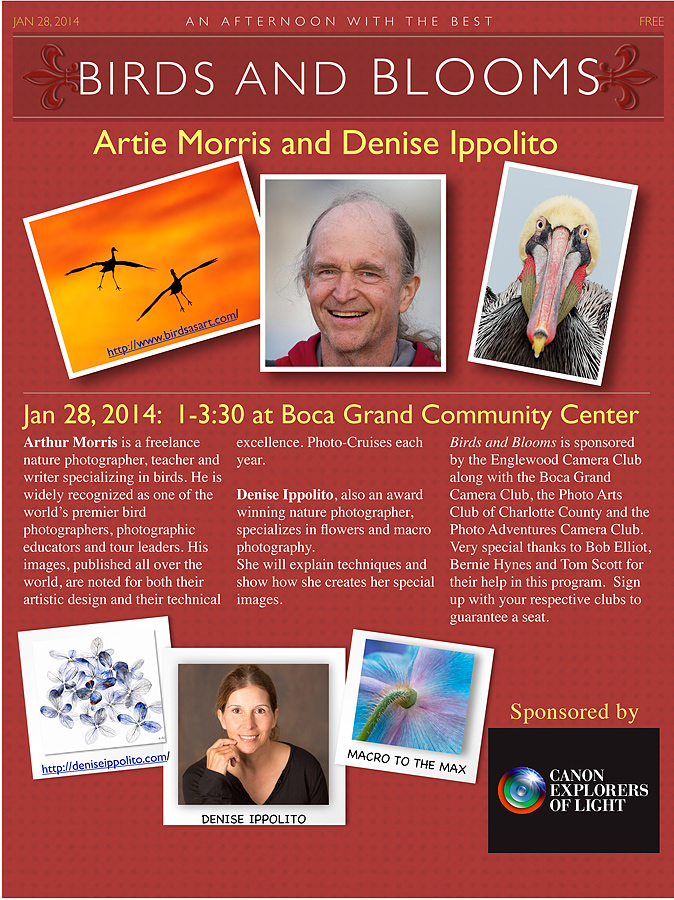
|
|
This afternoon seminar is 100% free and open to the public.
|
Free Afternoon Seminar Today!
Join Denise Ippolito and me on the afternoon of January 28, 2014 at 1:00pm in the Boca Grande Community Center for a free two-part nature photography seminar entitled “Birds and Blooms.” At 1:00pm I will be presenting “A Bird Photographer’s Story” (updated with lots of my favorite new images). Denise will follow with her hugely popular “Bloomin’ Ideas.” The venue is located at 131 First Street West, Boca Grande, FL 33921.
Suggestion
Join us for the free seminar and then for the Venice Rookery IPT the following day. See below for details.
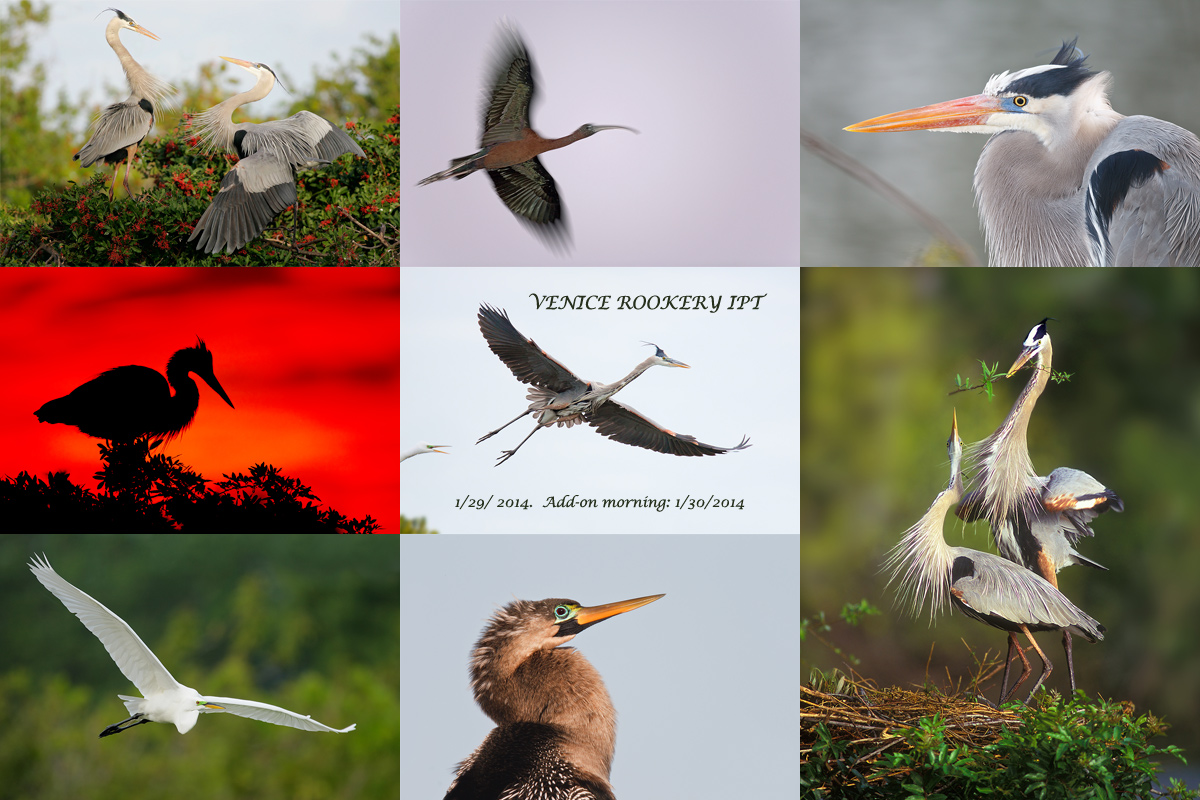
|
|
Do join us on the Venice Rookery IPT, or better yet, for the whole South Florida Composite IPT. Scroll down or click here for complete details.
|
The South Florida Composite IPT
Do consider joining us for one of the remaining parts or all of the South Florida Composite IPT. Call me on my cell at 863-221-2372 or e-mail to learn of the Late Registration Discounts for both the segments and the complete trip. If you call the cell and I do not pick up, please let a message and please be sure to e-mail me a good callback number and time.
Jan 29 (WED): Venice Rookery In-the-Field: all day: (Limit 12/Openings 8): $399. Introductory slide program 7pm, Jan 28.
30 (THURS) -Venice am only. (Limit 12/Openings 7): $249
You can sign up for one or more of the short IPTs and/or one or more of the add-on days or you can opt to sign up for the all the sessions. Those signing up for the whole shebang will be having all lunches and dinners with us most every day. Call us at 863-692-0906 or e-mail to learn of the Late Registration Discounts for both the segments and the complete trip.

|
|
Bird Photography Hotspot: Anhinga Trail, Everglades National Park. Learn more here.
|
Anhinga Trail/Everglades National Park Mini-IPT: Feb 1-2, (SAT/SUN), 2014. (Limit 12/Openings 5): $799. Introductory slide program: 7pm: FRI Jan 31. (Limit 12/Openings: 6):
Join Denise Ippolito and Arthur Morris for four great photography sessions at one of the top bird photography hotspots in North America. Morning sessions: 6:15am to 10:30am. Afternoon sessions: 3:00pm till 5:45pm. Lunch included. Informal image review and Photoshop sessions after lunch.
Jan 31 (Friday) Anhinga Trail/Everglades National Park Optional Add-on/Morning Only (Limit 12/Openings 5): $249
Includes lunch, and informal image review and Photoshop session. Call us at 863-692-0906 or e-mail to learn of the Late Registration Discounts for both the segments and the complete trip.
Because of our intense travel schedule that includes a trip to Japan I will not be running the traditional SW FLA IPT. In addition, in an effort to give some folks a chance to get a taste of our teaching and our passion for bird photography, Denise Ippolito and I have organized a series of short IPTs that may be combined into one wonderful experience or enjoyed piecemeal. Click here for complete details or to register. Please e-mail with any questions or leave a comment below.
A $500 non-refundable deposit is required to hold your slot for this IPT. For the short segments that are less than $500 payment in full is due at the time of registration. Your balance is due 4 months before the date of the IPT and is also non-refundable. If the trip fills, we will be glad to apply a credit applicable to a future IPT for the full amount less a $100 processing fee. If we do not receive your check for the balance on or before the due date we will try to fill your spot from the waiting list. If your spot is filled, you will lose your deposit. If not, you can secure your spot by paying your balance. Best to call Jim or Jennifer with a credit card in hand to register. Credit cards are not accepted for balances. Alternatively you can send a check for $500 made out to Arthur Morris to us at PO Box 7245, Indian Lake Estates, FL, 33855. Please include a note with your e-mail address and be sure to let us know what you are signing up for.
Support the BAA Blog. Support the BAA Bulletins: Shop B&H here!
We want and need to keep providing you with the latest free information, photography and Photoshop lessons, and all manner of related information. Show your appreciation by making your purchases immediately after clicking on any of our B&H or Amazon Affiliate links in this blog post. Remember, B&H ain’t just photography!


 


Amazon
Everyone buys something from Amazon, be it a big lens or deodorant. Support the blog by starting your search by clicking on the logo-link below. No purchase is too small to be appreciated; they all add up. Why make it a habit? Because I make it a habit of bringing you new images and information on an almost daily basis.
Typos
In all blog posts and Bulletins, feel free to e-mail or to leave a comment regarding any typos, wrong words, misspellings, omissions, or grammatical errors. Just be right. 🙂
IPT Info
Many of our great trips are filling up. See especially info on the South Florida, Holland, and Nickerson Beach IPTs. Two great leaders on most trips ensure that you will receive individual attention, have all of your questions answered, and learn a ton including how to think like a pro, see the situation, and get the right exposure every time. In addition you will have fun, and make lots of great images. Click here for IPT details and general information.
January 27th, 2014 And the Streak Goes On
We are up early getting ready to head out into the darkness for the Little Estero Lagoon morning add-on session. I know well that I am still sick but am far, far improved from what I was. Nose is a bit sniffly and throat just a tiny bit sore.
This post marks 62 days in a row with a new educational blog post, a record by far that should be extended for at least another week or two. Or not. 🙂 To show your appreciation, we ask that use our B&H and Amazon affiliate links for all of your B&H and Amazon purchases. Please check the availability of all photographic accessories in the BIRDS AS ART Online Store. We sell only what I use and depend on. We will not sell you junk. We know what you need to make creating great images easy and fun. And we are always glad to answer your gear questions via e-mail.
You can find the following items in the store: Gitzo tripods, Mongoose M3.6 and Wimberley heads, plates, low feet, and accessories, flash brackets, , Delkin e-film Pro Compact Flash Cards, LensCoat products, and our unique line-up of educational materials including ABP I & II, Digital Basics, Site and Set-up e-Guides, Canon and Nikon Camera Users and AF e-Guides, and MP-4 Photoshop video tutorials among others.
We would of course appreciate you using our B&H and Amazon affiliate links for all of your B&H and Amazon major gear, video, electronic, household, and personal purchases. For the photographic stuff mentioned above we would of course great appreciate your business.
Thanks and enjoy today’s blog post! This one took only about 1 1/2 hours to assemble,
Less Than 4 Days Left to Enter! BIRDS AS ART 2nd International Bird Photography Competition!
With so many folks signing up at the last minute at the end of December and with so many folks having trouble uploading their images due to server overload, the deadline for entering the contest (registering and paying) was extended just before the end of the last year until January 31, 2014. There will be no additional extensions. The deadline for uploading your images has been extended until midnight Eastern time on February 10, 2014. Take advantage of this extension to have a crack at the great prizes.
Learn more and enter the BIRDS AS ART 2nd International Bird Photography Competition here. Twenty-five great prizes including the $1000 Grand Prize and intense competition. Bring your best.
Register and Pay
To register click here.
To learn of payment options, click here.
A Lesson in Seeing the Situation
We–co-leader Denise Ippolito and I–sat the group in the sand and helped everyone get close to the birds. They were in typical habitat for species–white sand with a variety of beach vegetation. We had mixed clouds and sun–I of course far prefer the cloudy bright to full sun for the better part of the day. At about 5:30pm I took a walk to see what I could see. Though it was only 30 minutes till sunset the sun was shining brightly reflecting off the condos to the east onto the lagoon. There were several assorted shorebirds feeding on some clear sand on the edge of the lagoon. But the birds were shaded by a rather seep sand berm that was created by earlier winter storms.
I noticed that if I lowered my tripod a bit by pulling out the front-pointing leg tab that I could get the yellow reflection of the distant condo as my background. I created a series of very nice images before making the one above. I am guessing that all the swirls were the result of a puff of breeze. I have said often, “When the sun is too bright for you find a subject in the shade.” Here is another BAA artie-fact: one of my favorite situations is subject in shade, background in sun. Here I was able to combine those 2 principles to create a really special image.
The South Florida Mini IPTs
It’s Still Not Too Late to Get in on the Fun and Learning
Do consider joining us for one of the remaining parts or all of the South Florida Composite IPT. Call me on my cell at 863-221-2372 or e-mail to learn of the Late Registration Discounts for both the segments and the complete trip. If you call the cell and I do not pick up, please let a message and please be sure to e-mail me a good callback number and time.
Jan 29 (WED): Venice Rookery In-the-Field: all day: (Limit 12/Openings 8): $399. Introductory slide program 7pm, Jan 28.
30 (THURS) -Venice am only. (Limit 12/Openings 7): $249
You can sign up for one or more of the short IPTs and/or one or more of the add-on days or you can opt to sign up for the all the sessions. Those signing up for the whole shebang will be having all lunches and dinners with us most every day. Call us at 863-692-0906 or e-mail to learn of the Late Registration Discounts for both the segments and the complete trip.

|
|
Bird Photography Hotspot: Anhinga Trail, Everglades National Park. Learn more here.
|
Anhinga Trail/Everglades National Park Mini-IPT: Feb 1-2, (SAT/SUN), 2014. (Limit 12/Openings 5): $799. Introductory slide program: 7pm: FRI Jan 31. (Limit 12/Openings: 6):
Join Denise Ippolito and Arthur Morris for four great photography sessions at one of the top bird photography hotspots in North America. Morning sessions: 6:15am to 10:30am. Afternoon sessions: 3:00pm till 5:45pm. Lunch included. Informal image review and Photoshop sessions after lunch.
Jan 31 (Friday) Anhinga Trail/Everglades National Park Optional Add-on/Morning Only (Limit 12/Openings 5): $249
Includes lunch, and informal image review and Photoshop session.
Call us at 863-692-0906 or e-mail to learn of the Late Registration Discounts for both the segments and the complete trip.
Because of our intense travel schedule that includes a trip to Japan I will not be running the traditional SW FLA IPT. In addition, in an effort to give some folks a chance to get a taste of our teaching and our passion for bird photography, Denise Ippolito and I have organized a series of short IPTs that may be combined into one wonderful experience or enjoyed piecemeal. Click here for complete details or to register. Please e-mail with any questions or leave a comment below.
A $500 non-refundable deposit is required to hold your slot for this IPT. For the short segments that are less than $500 payment in full is due at the time of registration. Your balance is due 4 months before the date of the IPT and is also non-refundable. If the trip fills, we will be glad to apply a credit applicable to a future IPT for the full amount less a $100 processing fee. If we do not receive your check for the balance on or before the due date we will try to fill your spot from the waiting list. If your spot is filled, you will lose your deposit. If not, you can secure your spot by paying your balance. Best to call Jim or Jennifer with a credit card in hand to register. Credit cards are not accepted for balances. Alternatively you can send a check for $500 made out to Arthur Morris to us at PO Box 7245, Indian Lake Estates, FL, 33855. Please include a note with your e-mail address and be sure to let us know what you are signing up for.
Support the BAA Blog. Support the BAA Bulletins: Shop B&H here!
We want and need to keep providing you with the latest free information, photography and Photoshop lessons, and all manner of related information. Show your appreciation by making your purchases immediately after clicking on any of our B&H or Amazon Affiliate links in this blog post. Remember, B&H ain’t just photography!


 


Amazon
Everyone buys something from Amazon, be it a big lens or deodorant. Support the blog by starting your search by clicking on the logo-link below. No purchase is too small to be appreciated; they all add up. Why make it a habit? Because I make it a habit of bringing you new images and information on an almost daily basis.
Typos
In all blog posts and Bulletins, feel free to e-mail or to leave a comment regarding any typos, wrong words, misspellings, omissions, or grammatical errors. Just be right. 🙂
IPT Info
Many of our great trips are filling up. See especially info on the South Florida, Holland, and Nickerson Beach IPTs. Two great leaders on most trips ensure that you will receive individual attention, have all of your questions answered, and learn a ton including how to think like a pro, see the situation, and get the right exposure every time. In addition you will have fun, and make lots of great images. Click here for IPT details and general information.
January 26th, 2014 And the Streak Goes On
Despite my ill-advised walk into the somewhat icy shallow waters of Little Estero Lagoon yesterday–see below for details, I am feeling pretty good today. This post marks 61 days in a row with a new educational blog post, a record by far that should be extended for at least another week or two. Or not. 🙂 To show your appreciation, we ask that use our B&H and Amazon affiliate links for all of your B&H and Amazon purchases. Please check the availability of all photographic accessories in the BIRDS AS ART Online Store. We sell only what I use and depend on. We will not sell you junk. We know what you need to make creating great images easy and fun. And we are always glad to answer your gear questions via e-mail.
You can find the following items in the store: Gitzo tripods, Mongoose M3.6 and Wimberley heads, plates, low feet, and accessories, flash brackets, , Delkin e-film Pro Compact Flash Cards, LensCoat products, and our unique line-up of educational materials including ABP I & II, Digital Basics, Site and Set-up e-Guides, Canon and Nikon Camera Users and AF e-Guides, and MP-4 Photoshop video tutorials among others.
We would of course appreciate you using our B&H and Amazon affiliate links for all of your B&H and Amazon major gear, video, electronic, household, and personal purchases. For the photographic stuff mentioned above we would of course great appreciate your business.
Thanks and enjoy today’s blog post! This one took only about 2 1/2 hours to assemble,
Less Than a Week Left to Enter! BIRDS AS ART 2nd International Bird Photography Competition!
With so many folks signing up at the last minute at the end of December and with so many folks having trouble uploading their images due to server overload, the deadline for entering the contest (registering and paying) was extended just before the end of the last year until January 31, 2014. There will be no additional extensions. The deadline for uploading your images has been extended until midnight Eastern time on February 10, 2014. Take advantage of this extension to have a crack at the great prizes.
Learn more and enter the BIRDS AS ART 2nd International Bird Photography Competition here. Twenty-five great prizes including the $1000 Grand Prize and intense competition. Bring your best.
Register and Pay
To register click here.
To learn of payment options, click here.
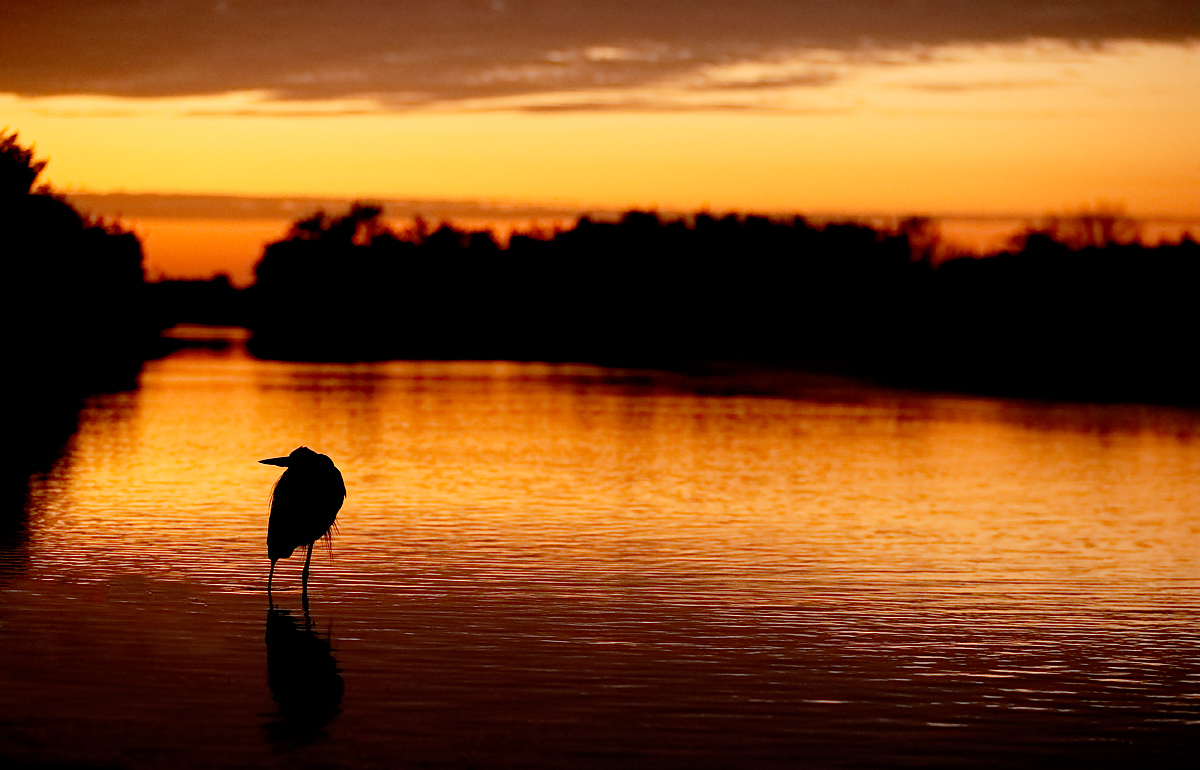
|
|
Hand held 70-200 and 1D X. ISO 5000. Tv mode at 1/60 sec. I will add the complete technical info before lunch today. Please do re-visit.
|
The Human Condition
I almost wore my Arctic Pro Muck Boots. But at the last moments I wore my surf booties. Having been fighting a vicious head cold for more than a week I knew that nothing could get me to walk into that 50 degree water…. Well, I was wrong. What would make a person do such a thing? I have no clue. Please don’t tell my Mom.
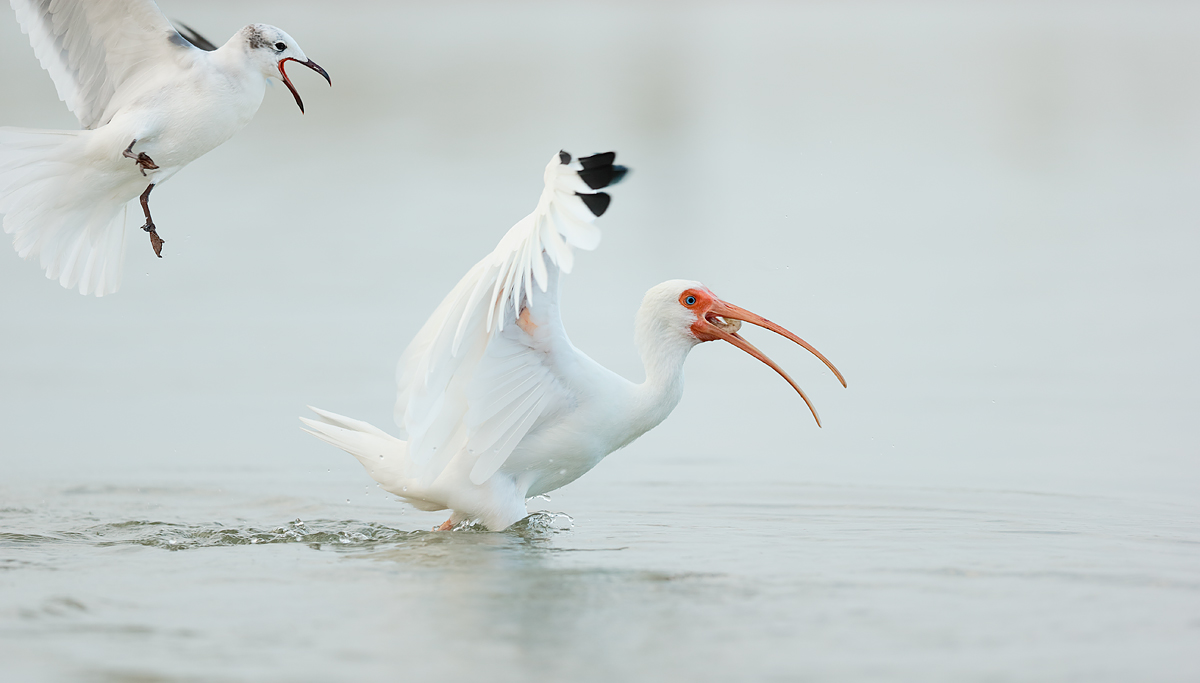
|
|
Hand held 300 II and 1D X. ISO 800. Manual mode: 1/800 sec. at f/2.8. I will add the complete technical info before lunch today. Please do re-visit.
|
Off to a Great Start–There are No Birds at Little Estero Lagoon
Every year before I head down to Fort Myers Beach, I hear the same tune: “There are no birds at Little Estero Lagoon. And once again, the internet experts were seriously wrong. The place has changed drastically from winter storms, but the main complaints as the South Florida IPT began early yesterday morning with 6 Happy Campers, were, “There are too many birds” and “The birds are too close.”
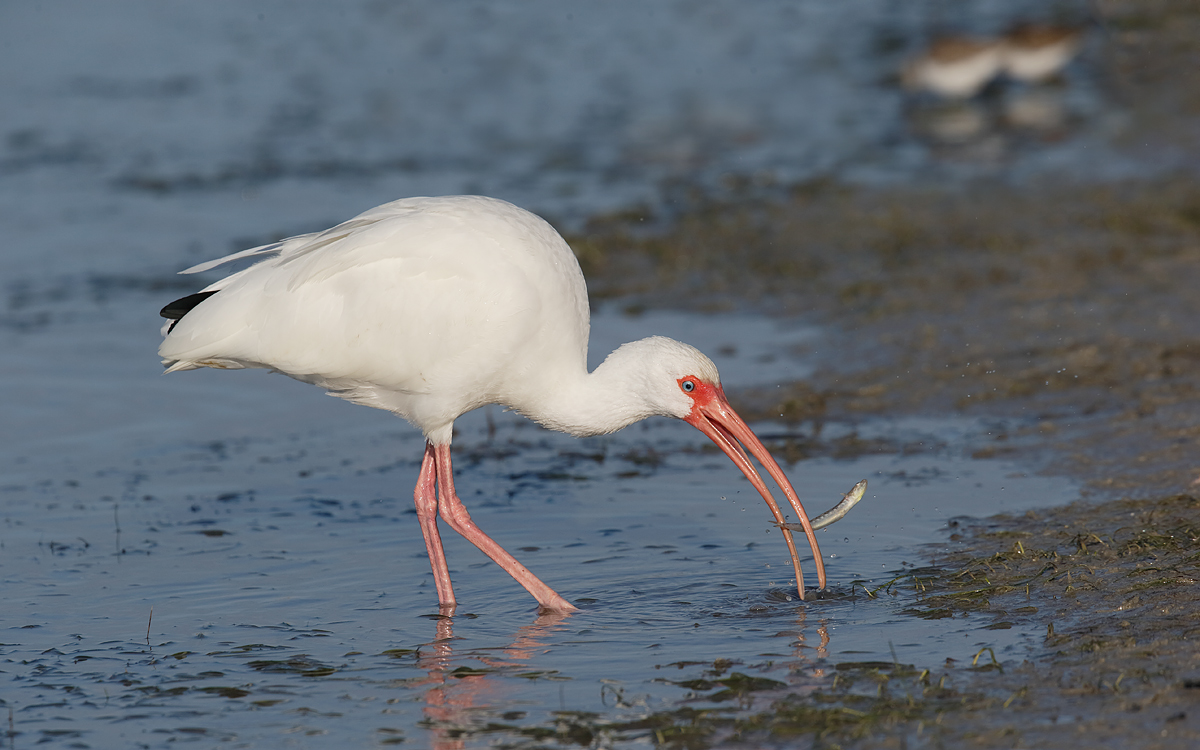
|
|
Hand held 300 II with 2X III TC and 1D X. ISO 400. Manual mode: 1/2000 sec. at f/8. I will add the complete technical info before lunch today. Please do re-visit.
|
Studying and Understanding Bird Behavior
Studying and understanding bird behavior can obviously help you to become a better photographer. Many wading birds will bring their prey to the shore so that if they drop it while attempting to swallow it, the fish or crab can be more easily re-captured. Knowing in advance that that would be exactly what this White Ibis would do enabled me to get in perfect position.
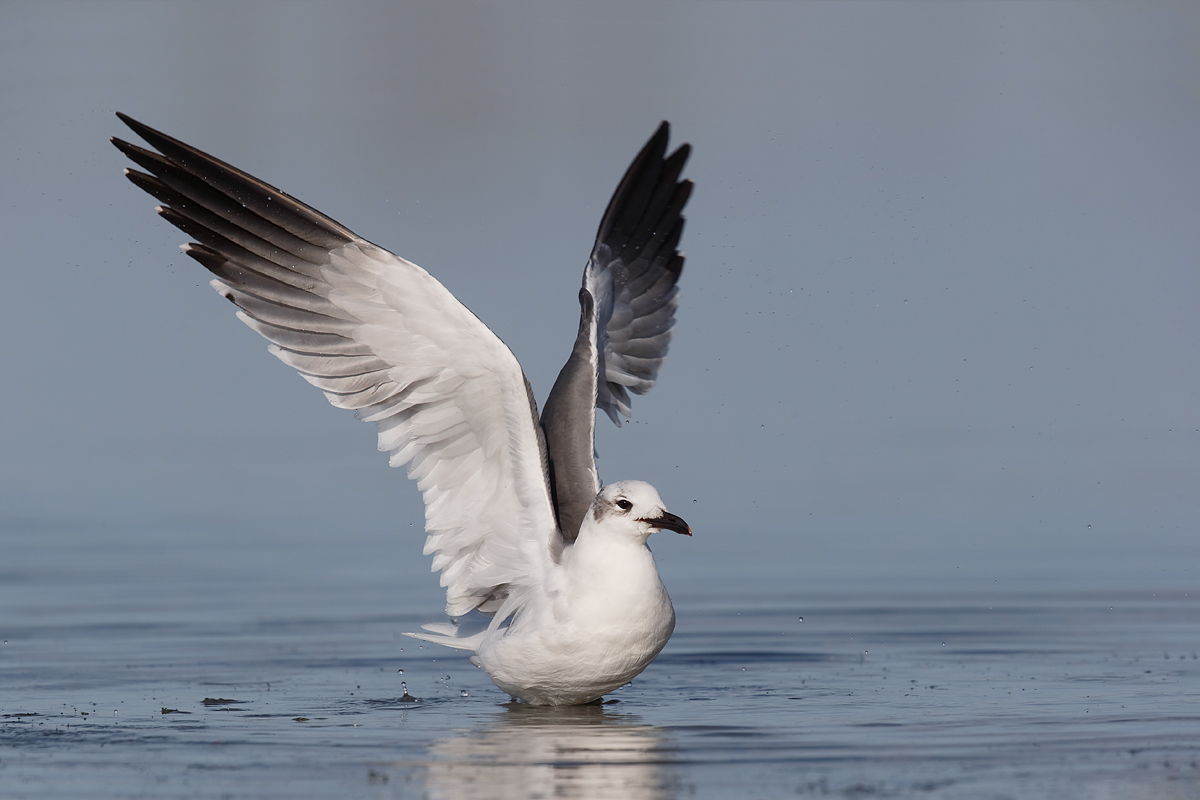
|
|
Hand held 300 II with 2X III TC and 1D X. ISO 400. Manual mode: 1/2000 sec. at f/8. I will add the complete technical info before lunch today. Please do re-visit.
|
Bathing Birds
Many folks in the group did not know that when they see a bird dipping its face and breast into the water that 9 times out of 10 they will raise up and flap their wings after their bath.

|
|
Hand held 300 II with 1.4X III TC and 1D X. ISO 400. Manual mode: 1/1600 sec. at f/5.6. I will add the complete technical info before lunch today. Please do re-visit.
|
Amazing
Both Clemens van der Werf, who was with me in San Diego last week, and I, were amazed that we would have so much fun photographing the much paler Brown Pelicans of Florida after spending 4 days photographing the brightly colored California race of Brown Pelican. But we did. And everyone made some great images of the pellies.

|
|
This afternoon seminar is 100% free and open to the public.
|
Free Afternoon Seminar
Join Denise Ippolito and me on the afternoon of January 28, 2014 at 1:00pm in the Boca Grande Community Center for a free two-part nature photography seminar entitled “Birds and Blooms.” At 1:00pm I will be presenting “A Bird Photographer’s Story” (updated with lots of my favorite new images). Denise will follow with her hugely popular “Bloomin’ Ideas.” The venue is located at 131 First Street West, Boca Grande, FL 33921.
Suggestion
Join us for the free seminar and then for the Venice Rookery IPT the following day. See below for details.

|
|
Do join us on the Venice Rookery IPT, or better yet, for the whole South Florida Composite IPT. Scroll down or click here for complete details.
|
The South Florida Composite IPT
Do consider joining us for one of the remaining parts or all of the South Florida Composite IPT. Call me on my cell at 863-221-2372 or e-mail to learn of the Late Registration Discounts for both the segments and the complete trip. If you call the cell and I do not pick up, please let a message and please be sure to e-mail me a good callback number and time.
Jan 29 (WED): Venice Rookery In-the-Field: all day: (Limit 12/Openings 8): $399. Introductory slide program 7pm, Jan 28.
30 (THURS) -Venice am only. (Limit 12/Openings 7): $249
You can sign up for one or more of the short IPTs and/or one or more of the add-on days or you can opt to sign up for the all the sessions. Those signing up for the whole shebang will be having all lunches and dinners with us most every day. Call us at 863-692-0906 or e-mail to learn of the Late Registration Discounts for both the segments and the complete trip.

|
|
Bird Photography Hotspot: Anhinga Trail, Everglades National Park. Learn more here.
|
Anhinga Trail/Everglades National Park Mini-IPT: Feb 1-2, (SAT/SUN), 2014. (Limit 12/Openings 5): $799. Introductory slide program: 7pm: FRI Jan 31. (Limit 12/Openings: 6):
Join Denise Ippolito and Arthur Morris for four great photography sessions at one of the top bird photography hotspots in North America. Morning sessions: 6:15am to 10:30am. Afternoon sessions: 3:00pm till 5:45pm. Lunch included. Informal image review and Photoshop sessions after lunch.
Jan 31 (Friday) Anhinga Trail/Everglades National Park Optional Add-on/Morning Only (Limit 12/Openings 5): $249
Includes lunch, and informal image review and Photoshop session.
Call us at 863-692-0906 or e-mail to learn of the Late Registration Discounts for both the segments and the complete trip.
Because of our intense travel schedule that includes a trip to Japan I will not be running the traditional SW FLA IPT. In addition, in an effort to give some folks a chance to get a taste of our teaching and our passion for bird photography, Denise Ippolito and I have organized a series of short IPTs that may be combined into one wonderful experience or enjoyed piecemeal. Click here for complete details or to register. Please e-mail with any questions or leave a comment below.
A $500 non-refundable deposit is required to hold your slot for this IPT. For the short segments that are less than $500 payment in full is due at the time of registration. Your balance is due 4 months before the date of the IPT and is also non-refundable. If the trip fills, we will be glad to apply a credit applicable to a future IPT for the full amount less a $100 processing fee. If we do not receive your check for the balance on or before the due date we will try to fill your spot from the waiting list. If your spot is filled, you will lose your deposit. If not, you can secure your spot by paying your balance. Best to call Jim or Jennifer with a credit card in hand to register. Credit cards are not accepted for balances. Alternatively you can send a check for $500 made out to Arthur Morris to us at PO Box 7245, Indian Lake Estates, FL, 33855. Please include a note with your e-mail address and be sure to let us know what you are signing up for.
Support the BAA Blog. Support the BAA Bulletins: Shop B&H here!
We want and need to keep providing you with the latest free information, photography and Photoshop lessons, and all manner of related information. Show your appreciation by making your purchases immediately after clicking on any of our B&H or Amazon Affiliate links in this blog post. Remember, B&H ain’t just photography!


 


Amazon
Everyone buys something from Amazon, be it a big lens or deodorant. Support the blog by starting your search by clicking on the logo-link below. No purchase is too small to be appreciated; they all add up. Why make it a habit? Because I make it a habit of bringing you new images and information on an almost daily basis.
Typos
In all blog posts and Bulletins, feel free to e-mail or to leave a comment regarding any typos, wrong words, misspellings, omissions, or grammatical errors. Just be right. 🙂
IPT Info
Many of our great trips are filling up. See especially info on the South Florida, Holland, and Nickerson Beach IPTs. Two great leaders on most trips ensure that you will receive individual attention, have all of your questions answered, and learn a ton including how to think like a pro, see the situation, and get the right exposure every time. In addition you will have fun, and make lots of great images. Click here for IPT details and general information.
January 25th, 2014 And the Streak Goes On
I am in Fort Myers Beach, FL with co-leader Denise Ippolito along with six Happy Campers. It is 5:23am as I put the finishing touches on today’s post. I continue to feel a bit better each day and finally my blood sugar levels are normalizing; this is a sure sign that I am beating this thing. Note: Many folks are taking advantage of the Late Registration Discounts to sign up for a segment here or a weekend or a morning there. See more by scrolling down here.
This post marks 60 days in a row with a new educational blog post, a record by far that should be extended for at least another week or two. Or not. 🙂 To show your appreciation, we ask that use our B&H and Amazon affiliate links for all of your B&H and Amazon purchases. Please check the availability of all photographic accessories in the BIRDS AS ART Online Store. We sell only what I use and depend on. We will not sell you junk. We know what you need to make creating great images easy and fun. And we are always glad to answer your gear questions via e-mail.
You can find the following items in the store: Gitzo tripods, Mongoose M3.6 and Wimberley heads, plates, low feet, and accessories, flash brackets, , Delkin e-film Pro Compact Flash Cards, LensCoat products, and our unique line-up of educational materials including ABP I & II, Digital Basics, Site and Set-up e-Guides, Canon and Nikon Camera Users and AF e-Guides, and MP-4 Photoshop video tutorials among others.
We would of course appreciate you using our B&H and Amazon affiliate links for all of your B&H and Amazon major gear, video, electronic, household, and personal purchases. For the photographic stuff mentioned above we would of course great appreciate your business.
Thanks and enjoy today’s blog post! This one took only about 2 hours (with Dave’s help) to assemble as I did not need to process any images.
Less Than a Week Left to Enter! BIRDS AS ART 2nd International Bird Photography Competition!
With so many folks signing up at the last minute at the end of December and with so many folks having trouble uploading their images due to server overload, the deadline for entering the contest (registering and paying) was extended just before the end of the last year until January 31, 2014. There will be no additional extensions. The deadline for uploading your images has been extended until midnight Eastern time on February 10, 2014. Take advantage of this extension to have a crack at the great prizes.
Learn more and enter the BIRDS AS ART 2nd International Bird Photography Competition here. Twenty-five great prizes including the $1000 Grand Prize and intense competition. Bring your best.
Register and Pay
To register click here.
To learn of payment options, click here.
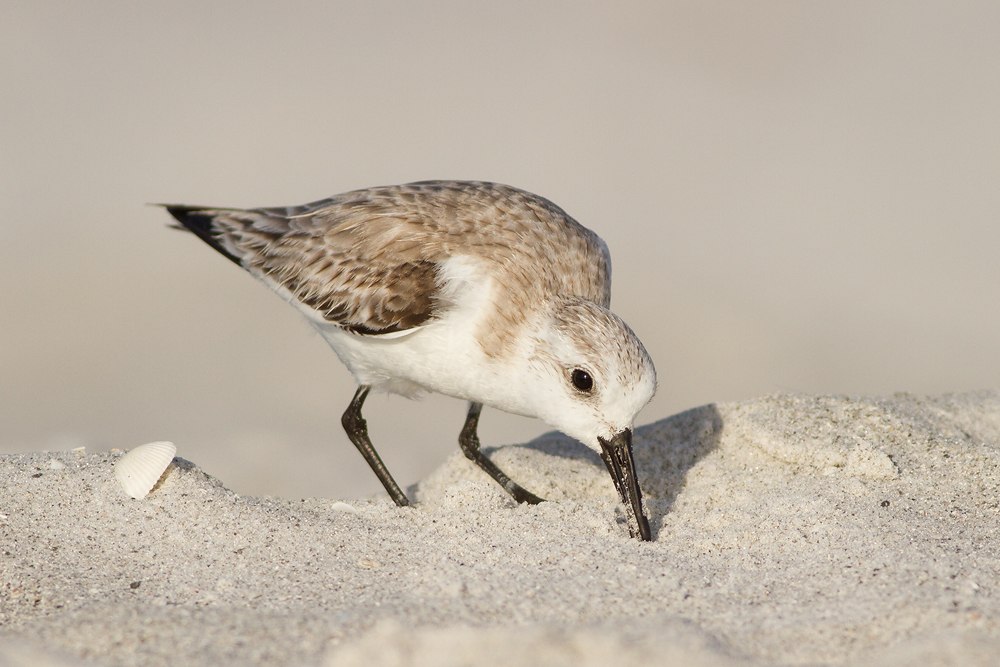
|
|
This Sanderling image was created with the hand held Canon EF 400mm f/5.6L USM lens and the Canon EOS 7D. ISO 200. Evaluative metering +1/3 stop: 1/1600 sec. at f/5.6 in Manual mode.
Image courtesy of and copyright 2013 David Hardcastle.
Notice that Dave has pointed his shadow at the subject….
artie
|
EOS-7D & 400mm f/5.6L Make Darned Good Images
I get lots of unsolicited e-mails with JPEGs attached or embedded. Others send links to their websites or Flickr collections and ask that I take a look. If I am not too busy working on a blog post I try to take a quick peek. Some of the time I am left scratching my head, and some of the time I am quite impressed. A week ago I received the e-mail below from David Hardcastle of the UK.
Hi Arthur,
I wanted to let you know how I got on with a trip to Florida where I made heavy use of your Southwest Florida Site Guide. I made this trip with my wife a year ago – no idea why I did not e-mail sooner! I’d wanted to visit Florida for many years, mainly due to seeing all your photographs. I wasn’t disappointed. There were lots of great photo opportunities and the tameness of the birds was amazing and a real change from the way they generally are in England.
We spent a couple of nights on Sanibel Island. We visited Ding Darling, which I wasn’t expecting to be great based on your guide. It was challenging for photography with few birds close to the road but we got lucky and saw a nice sunset with some silhouetted birds in front of it;that photo is attached. We returned early the following morning and again it was fairly quiet but we had one good opportunity to photograph a Great Blue Heron. For that one I the “rule of fourths” composition that you describe in ABP II.
We also visited most of your other recommended sites on Sanibel; the highlight was Bowman’s Beach on our last day. We were there at the end of the afternoon which was the wrong time of day to be honest in terms of light direction–this was not purely a photography holiday). By getting perilously close to the gulf I was able to get the light behind me. I enjoyed some great opportunities with Sanderling, turnstone, and particularly a Black-bellied Plover. In the attached image of the plover with the green background the original shot was too tight because I couldn’t get farther back or I’d have been lying in the sea! So I had to add canvas left and above using the techniques covered in APTAPS II.
All shots were taken with a 7D; I’d love a 1D X and one of the newer super-telephotos, but they’re out of my price range – the 7D/400mm f5.6 does me pretty well.)
Having never been to Florida before, the guide really helped us get to the right places quickly.
Cheers – hope you can keep up the current run of a blog post a day! Dave

|
|
This Great Blue Heron image was created with the hand held Canon EF 400mm f/5.6L USM lens and the Canon EOS 7D. ISO 500. Evaluative metering -2/3 stop: 1/2000 sec. at f/5.6 in Manual mode.
Image courtesy of and copyright 2013 David Hardcastle.
Note that with the dark background and the heron’s bright white chin Dave knew that he needed to underexpose to prevent blowing the WHITEs. I hope that that is beginning to sound familiar to many of you. 🙂
artie
|
My Reply
Hey Dave,
Good to hear from you. Glad that the guide helped. I gotta say that the image quality that you get with your 7D is superb. Simply superb. I would like your permission to adapt what you wrote in your first e-mail and use it in a guest blog post. Along with several selected images of course.
I would be fine with that alone but if you could write a short paragraph or three on how you get such superb IQ with the 7D folks would love to hear that. What is your exposure strategy? How do you convert? Do you use Noise Reduction? Nothing complicated, just the basics.
thanks a stack and later and love, artie
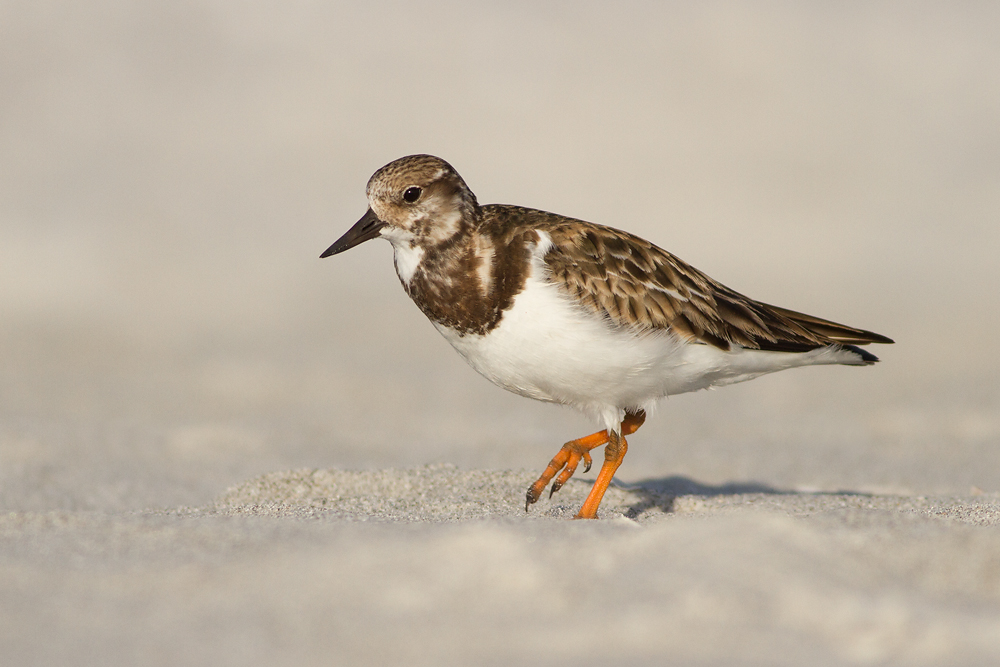
|
|
This Ruddy Turnstone image was created with the hand held Canon EF 400mm f/5.6L USM lens and the Canon EOS 7D. ISO 200. Evaluative metering +1/3 stop: 1/1600 sec. at f/5.6 in Manual mode.
Image courtesy of and copyright 2013 David Hardcastle.
Here I love the sharpness, the perfect exposure, and the raised foot.
artie
|
Dave’s Reply
Hi Arthur,
Yes, that’s fine, please go ahead and use what I sent in a blog. I can’t say I do anything particularly special with either my exposure strategy or my processing. For the exposure I obviously aim to get information in the right hand box of the histogram, but I don’t really push too hard on that – I’ve always struggled to get good looking whites when I’ve got too many blinkies (even with techniques like linear burn).
The quality of the 7D is good when the light is good. When conditions are dull then I don’t like the image quality as much; you can still get good results with care. If the photos I sent look good it’s mainly because the light was good. The photos from the beach were taken at either ISO 200 or 400. I think I started at ISO 200 but moved up to 400 to get more shutter speed. Looking at the exposure on the great blue heron, I was surprised to see that it was 1/2000 at f/5.6, ISO 500, in manual mode – my default ISO is 400 so I don’t know why I felt the need to be at 500, but there doesn’t seem to be much noise. I should say that I shoot handheld almost all the time – I’d like Canon to release an image stabilized 400mm f5.6 but I can get sharp images without a tripod, as long as I’m careful with my technique and as long as I watch my shutter speed.
For processing I use Lightroom to convert my RAW files and do anything else I need to do in Photoshop Elements. The photos I sent have had relatively little done in Lightroom – just tweaks to the white balance and maybe toning down the whites. I use the default noise reduction settings in Lightroom (0 luminance noise reduction, 25 color noise reduction); these settings are very mild but do a great job of removing any colour noise.
To create the jpgs I sent you, I just re-sized them and did three rounds of sharpening at 125 / 0.2 / 0: I m pretty sure that I learned those from ABP II.
I guess another lesson might be that it’s better to spend your money on trips to great places rather than on top-end gear; if I’d bought a 1D X I wouldn’t have been on vacation in Florida and wouldn’t have gotten those shots! Of course, ideally, you buy great gear and travel to great locations but we don’t all get to do that. Let me know if you need any more info. Thanks, and good luck with the pelicans in San Diego. Dave.
|
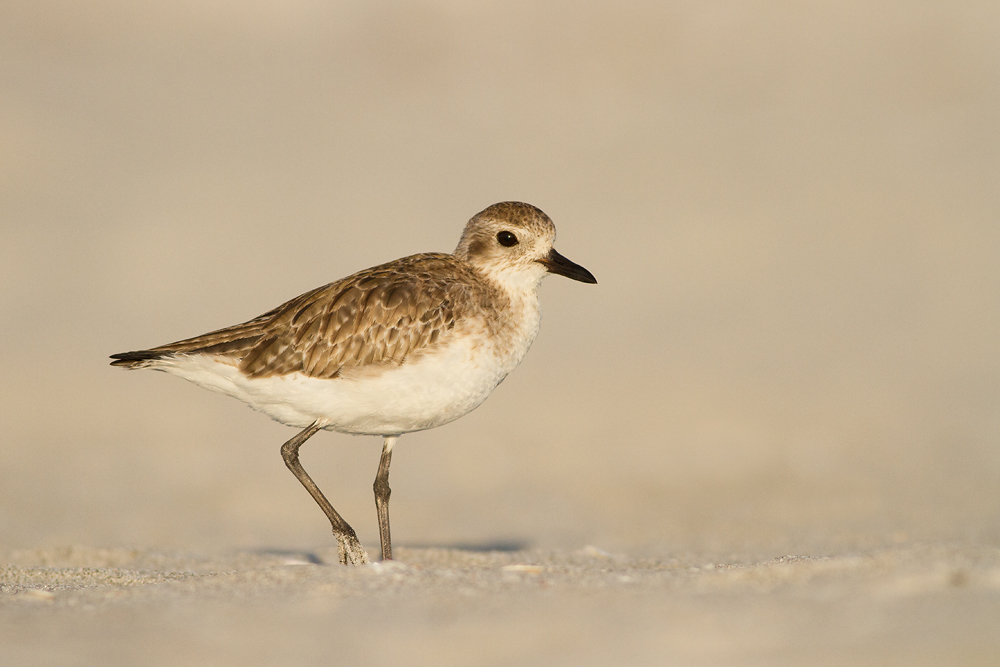
|
|
This Black-bellied Plover image was created with the hand held Canon EF 400mm f/5.6L USM lens and the Canon EOS 7D. ISO 400. Evaluative metering +2/3 stop: 1/2500 sec. at f/5.6 in Manual mode.
Image courtesy of and copyright 2013 David Hardcastle.
This image features a perfect head angle and a nice soft o-o-f background.
artie
|
My Reply
Hey Dave, Thanks for your help and generosity.You have a great attitude! later and love, artie
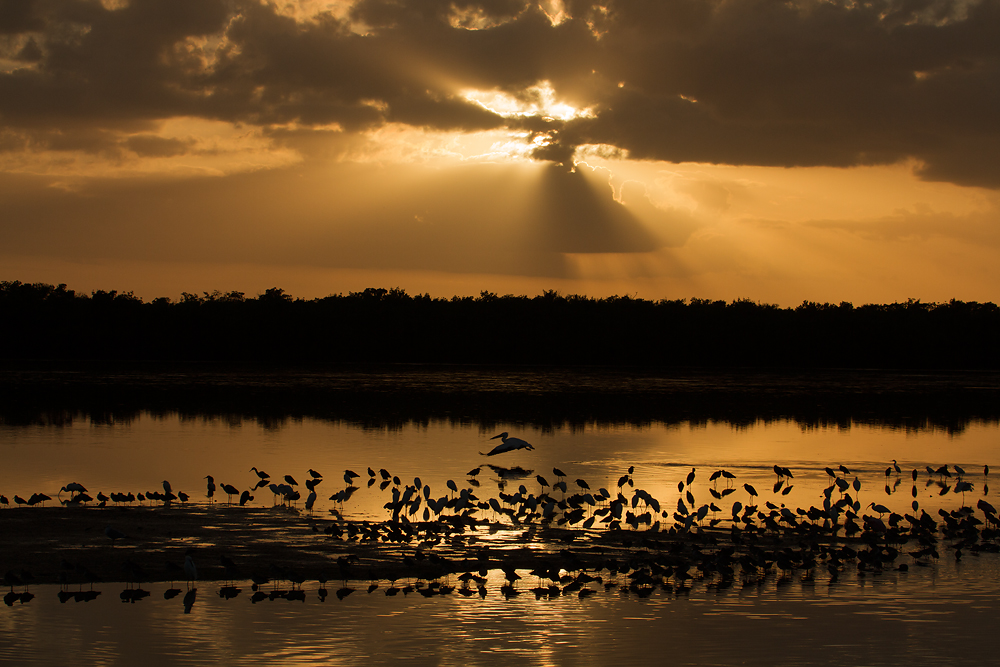
|
|
This sunset silhouette image was created at Ding Darling, NWR, Sanibel Island, FL with the hand held Canon EF 70-300mm f/4-5.6L IS USM lens and the Canon EOS 7D. ISO 200. Evaluative metering -2 stops: 1/1250 sec. at f/9 in Av mode.
Image courtesy of and copyright 2013 David Hardcastle.
I used the 70-300 briefly for flight in Norway: I loved it but for the fact that the zoom and focus rings were reversed from the typical Canon arrangement. It was however light, super-fast to acquire focus, and super sharp. The birds are lots of Willets, a White Ibis or two, a few assorted herons and egrets, surely some Black-bellied Plovers and Short-billed Dowitchers, and a single White Pelican.
artie
|
My Comments
I have stated often, “Make the best pictures that you can with the best gear that you can afford. Quit complaining about your camera and lens, study hard, and practice whenever you can…. Those who are gear hounds are asked to study the blogs, e-mail me for advice, and be sure to use one of our affiliate links when they spend their hard-earned cash.
David proves here that it is possible to create excellent images without spending $20 K (12,000+ British Pound Sterling) on a camera and a lens. He has honed his exposure and sharpness techniques, he has studied and learned from lots of our educational materials, and he has practiced his skills whenever possible.
More on the Much-maligned EOS-7D
7D interested folks would surely love to re-visit the How Dan Cadieux Masters Canon EOS-7D Image Files blog post that includes lots of great images and info.

|
|
This afternoon seminar is 100% free and open to the public.
|
Free Afternoon Seminar
Join Denise Ippolito and me on the afternoon of January 28, 2014 at 1:00pm in the Boca Grande Community Center for a free two-part nature photography seminar entitled “Birds and Blooms.” At 1:00pm I will be presenting “A Bird Photographer’s Story” (updated with lots of my favorite new images). Denise will follow with her hugely popular “Bloomin’ Ideas.” The venue is located at 131 First Street West, Boca Grande, FL 33921.
Suggestion
Join us for the free seminar and then for the Venice Rookery IPT the following day. See below for details.

|
|
Do join us on the Venice Rookery IPT, or better yet, for the whole South Florida Composite IPT. Scroll down or click here for complete details.
|
The South Florida Composite IPT
Do consider joining us for one of the remaining parts of the South Florida Composite IPT. Call me on my cell at 863-221-2372 or e-mail to learn of the Late Registration Discounts for both the segments and the complete trip. If you call the cell and I do not pick up, please let a message and please be sure to e-mail me a good callback number and time.
Jan 29 (WED): Venice Rookery In-the-Field: all day: (Limit 12/Openings 8): $399. Introductory slide program 7pm, Jan 28.
30 (THURS) -Venice am only. (Limit 12/Openings 7): $249
You can sign up for one or more of the short IPTs and/or one or more of the add-on days or you can opt to sign up for the all the sessions. Those signing up for the whole shebang will be having all lunches and dinners with us most every day. Call us at 863-692-0906 or e-mail to learn of the Late Registration Discounts for both the segments and the complete trip.

|
|
Bird Photography Hotspot: Anhinga Trail, Everglades National Park. Learn more here.
|
Anhinga Trail/Everglades National Park Mini-IPT: Feb 1-2, (SAT/SUN), 2014. (Limit 12/Openings 5): $799. Introductory slide program: 7pm: FRI Jan 31. (Limit 14/Openings: 12):
Join Denise Ippolito and Arthur Morris for four great photography sessions at one of the top bird photography hotspots in North America. Morning sessions: 6:15am to 10:30am. Afternoon sessions: 3:00pm till 5:45pm. Lunch included. Informal image review and Photoshop sessions after lunch.
Jan 31 (Friday) Anhinga Trail/Everglades National Park Optional Add-on/Morning Only (Limit 14/Openings 12): $249
Includes lunch, and informal image review and Photoshop session.
Call us at 863-692-0906 or e-mail to learn of the Late Registration Discounts for both the segments and the complete trip.
2014 South Florida Composite IPT: 6 1/2 days of photography spread over 9 days of learning, hanging out, and travel: $2644. (Limit 12/Openings: 5
Because of our intense travel schedule that includes a trip to Japan I will not be running the traditional SW FLA IPT. In addition, in an effort to give some folks a chance to get a taste of our teaching and our passion for bird photography, Denise Ippolito and I have organized a series of short IPTs that may be combined into one wonderful experience or enjoyed piecemeal. Click here for complete details or to register. Please e-mail with any questions or leave a comment below.
A $500 non-refundable deposit is required to hold your slot for this IPT. For the short segments that are less than $500 payment in full is due at the time of registration. Your balance is due 4 months before the date of the IPT and is also non-refundable. If the trip fills, we will be glad to apply a credit applicable to a future IPT for the full amount less a $100 processing fee. If we do not receive your check for the balance on or before the due date we will try to fill your spot from the waiting list. If your spot is filled, you will lose your deposit. If not, you can secure your spot by paying your balance. Best to call Jim or Jennifer with a credit card in hand to register. Credit cards are not accepted for balances. Alternatively you can send a check for $500 made out to Arthur Morris to us at PO Box 7245, Indian Lake Estates, FL, 33855. Please include a note with your e-mail address and be sure to let us know what you are signing up for.
Support the BAA Blog. Support the BAA Bulletins: Shop B&H here!
We want and need to keep providing you with the latest free information, photography and Photoshop lessons, and all manner of related information. Show your appreciation by making your purchases immediately after clicking on any of our B&H or Amazon Affiliate links in this blog post. Remember, B&H ain’t just photography!


 


Amazon
Everyone buys something from Amazon, be it a big lens or deodorant. Support the blog by starting your search by clicking on the logo-link below. No purchase is too small to be appreciated; they all add up. Why make it a habit? Because I make it a habit of bringing you new images and information on an almost daily basis.
Typos
In all blog posts and Bulletins, feel free to e-mail or to leave a comment regarding any typos, wrong words, misspellings, omissions, or grammatical errors. Just be right. 🙂
IPT Info
Many of our great trips are filling up. See especially info on the South Florida, Holland, and Nickerson Beach IPTs. Two great leaders on most trips ensure that you will receive individual attention, have all of your questions answered, and learn a ton including how to think like a pro, see the situation, and get the right exposure every time. In addition you will have fun, and make lots of great images. Click here for IPT details and general information.
January 24th, 2014 And the Streak Goes On
I need to pick up South Florida IPT co-leader Denise Ippolito at the Tampa Airport at about 10:45am and then head down to Fort Myers Beach. I was asleep by 9:00pm but awake at 2:45, thoughts of the streak racing through my head. I had worked on the images for today’s blog post last night. Note: Many folks are taking advantage of the Late Registration Discounts to sign up for a segment here or a morning session there. See more by scrolling down here.
I am again feeling a bit better today; thanks for all the good wishes.
This post marks 59 days in a row with a new educational blog post, a record by far that should be extended for at least another week or two. Or not. 🙂 To show your appreciation, we ask that use our B&H and Amazon affiliate links for all of your B&H and Amazon purchases. Please check the availability of all photographic accessories in the BIRDS AS ART Online Store. We sell only what I use and depend on. We will not sell you junk. We know what you need to make creating great images easy and fun. And we are always glad to answer your gear questions via e-mail.
You can find the following items in the store: Gitzo tripods, Mongoose M3.6 and Wimberley heads, plates, low feet, and accessories, flash brackets, , Delkin e-film Pro Compact Flash Cards, LensCoat products, and our unique line-up of educational materials including ABP I & II, Digital Basics, Site and Set-up e-Guides, Canon and Nikon Camera Users and AF e-Guides, and MP-4 Photoshop video tutorials among others.
We would of course appreciate you using our B&H and Amazon affiliate links for all of your B&H and Amazon major gear, video, electronic, household, and personal purchases. For the photographic stuff mentioned above we would of course great appreciate your business.
Thanks and enjoy today’s blog post! This one took about 3 hours to assemble. I still need to finish packing the SUV for South Florida. It is now 5:06am and I am hitting the Publish button. 🙂
Amazon Canada
Many kind folks from north of the border, ay, have e-mailed stating that they would love to help us out by using one of our affiliate links but that living in Canada and doing so presents numerous problems. Now, they can help us out by using our Amazon Canada affiliate link by starting their searches by clicking here. Many thanks to those who have written.
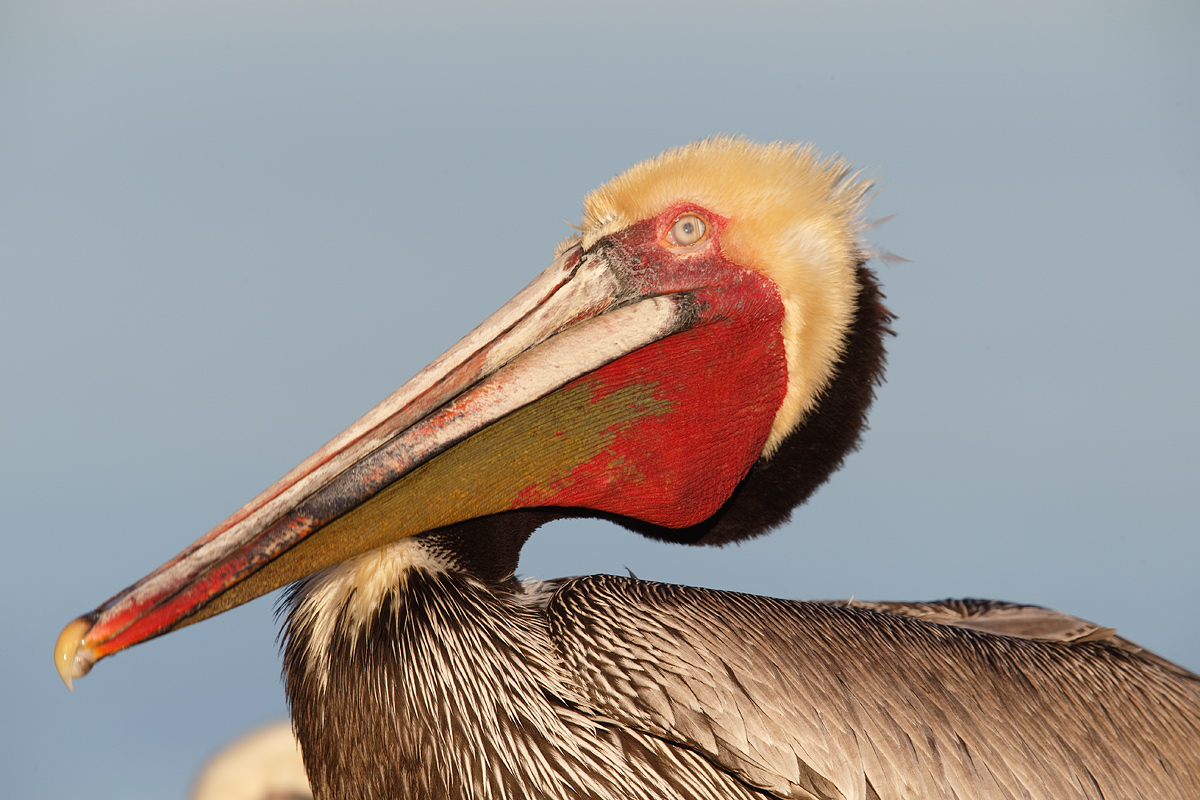
|
|
This Brown Pelican image was created in early morning light on the San Diego Short Notice IPT with the Gitzo 3532 LS carbon fiber tripod, Mongoose M3.6 head, the Canon EF 600mm f/4L IS II USM lens, the Canon 2x EF Extender III (Teleconverter), and the Canon EOS-1D X Digital SLR camera. ISO 400. Evaluative metering +1/3 stop as framed: 1/640 sec. at f/10 in Manual mode.
Central sensor (by necessity) Expand/AI Servo/Rear Focus on the bird’s face was used to set the focus…. I was amazed when I noted that AF was not active at the moment of exposure with this image. Click here if you missed the Rear Focus Tutorial. Click on the image to see a larger version.
|
The Vision and the Original. And my Dad.
Ever since I have been photographing California Brown Pelicans in LaJolla, probably more than 15 years in all, I have been trying to create an image like the one above with the bill held relatively horizontal and the beautiful bill pouch distended, the reds and greens prominent. I had tried and failed many times. When I saw the image on the back of the camera I thought that I had a chance. I do not waste time enlarging images in the field….
Note: I started visiting San Diego in the early 70s when older daughter Jennifer was about a year old–my Mom and Dad moved there from Brooklyn in about 1969. They had visited the year before, and when Private First Class Robert E. Morris, a disabled American Veteran, got off the plane, he looked around at the palm trees and said, “We are going to live here.” My Dad–hit by 13 rounds of 70mm machine gun fire, was severely injured on Okinawa losing his right arm above the elbow and left with left arm hanging by a thread. After 19 months in the hospital, his left arm saved by a young Filipino doctor who was the only one against amputating what was left of his remaining arm–the elbow joint had been destroyed, he returned home to my Mom in Brooklyn. Eventually he went back to work at Roebling Luggage on Liberty Street in Manhattan as delivery boy and wound up pulling luggage off the shelves for more than 30 years. Then he retired to move to San Diego with my Mom and my younger sister Arna. He died in San Diego in September of 2001.
I began birding in 1976 and began photographing birds in 1983. Though I visited San Diego and LaJolla annually each year beginning in the early 1970, it took me well more than two decades to learn exactly where and when to be to photograph the gorgeous pelicans….
I digress.
When I saw that the nictitating membrane was completely covering the bird’s eye I realized that I had some work to do. And I was not too thrilled with the pelican in the background or the fact that my subject looked as if it had been hit in the head near the base of the bill with a claw hammer as there was a chunk of feathers missing there. More work.
|
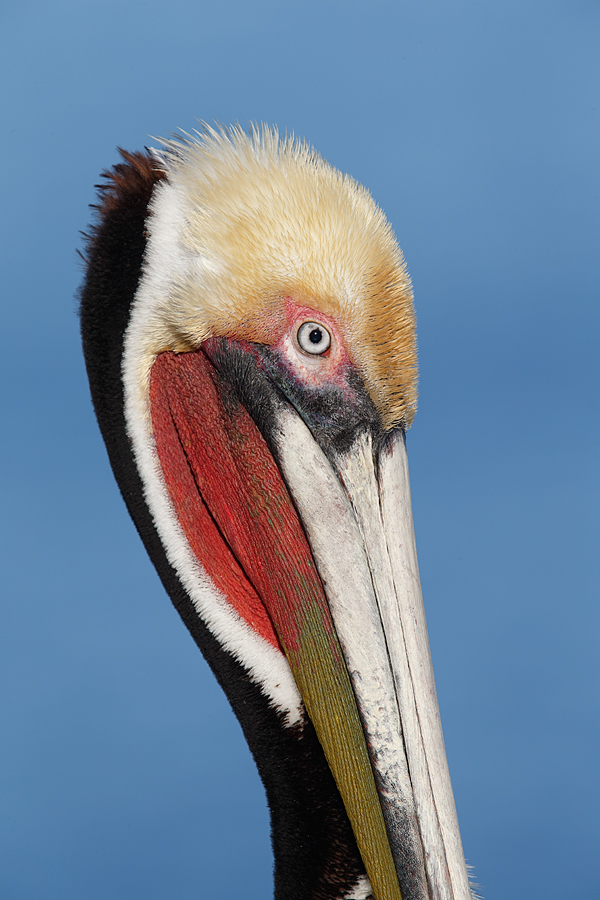
|
|
This Brown Pelican image was also created on the San Diego Short Notice IPT with the Gitzo 3532 LS carbon fiber tripod, Mongoose M3.6 head, the Canon EF 600mm f/4L IS II USM lens, the Canon 2x EF Extender III (Teleconverter), and the Canon EOS-1D X Digital SLR camera. ISO 400. Evaluative metering +1/3 stop as framed: 1/500 sec. at f/13 in Manual mode.
This image was created 25 minutes after the image that opens this blog post.
Central sensor (by necessity) Expand/AI Servo/Rear Focus on the base of the bird’s bill was active at the moment of exposure. Click here if you missed the Rear Focus Tutorial. Click on the image to see a larger version.
|
The Source Image
All that I needed was a nice eye with a nice sharp iris and a nice sharp pupil. The original was created at 7:37am and I did not have another image of the same bird. But I figured that the eye of the pelican in the image above would work as I only needed the iris and the pupil. It could be done. So I did it.
|
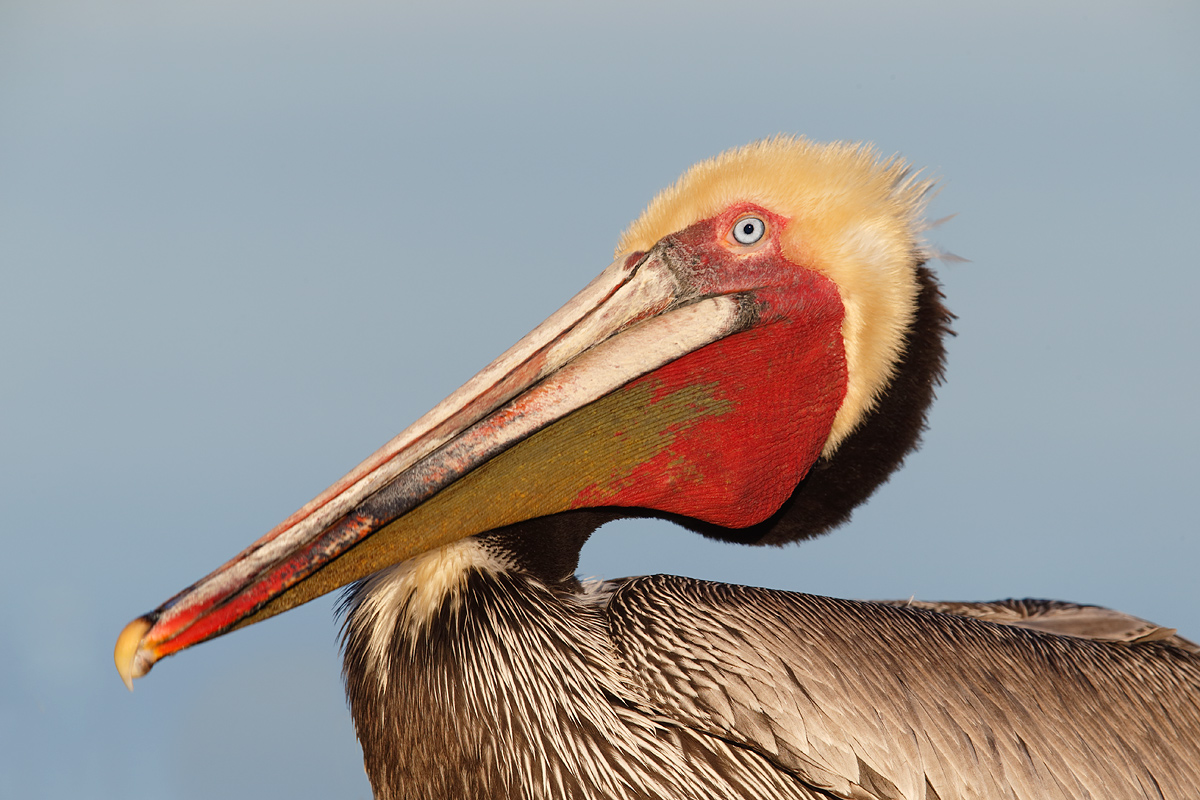
|
|
This, the optimized image, was created in Photoshop CS-5 from the image that opened this blog post after the RAW file was converted in Canon Digital Photo Professional. Note that the eye here looks a lot better than the eye in the source image….
|
A + B = C
My first chore was to replace the eye. I painted a Quick Mask of the eye and the eye skin from the source vertical, placed it on its own layer, and moved (V) that layer roughly into place on the original. I flopped the layer horizontally and added a Regular Layer Mask. I rotated the layer with the opacity reduced to about 65% and the eye skin still intact so that I could ensure that the angle of eyeball was correct. Then I hit Control T (Transform), adjusted the size, and then did some extensive warping so that the shape of the eyeball was correct. All was good but for the fact that the pupil was not properly positioned. After erasing all of the eye skin and leaving only the eyeball I created a new Quick Mask of the pupil with a good bit of the iris surrounding it. After putting that on its own layer I was able to correctly position the pupil. I added another Regular Layer Mask to fine tune the selection, flattened it, and used a 60% Clone Stamp Tool to clean up the somewhat messy pupil.
The above took about 20 minutes but I was very happy with the result. I used a Quick Mask of the sky with a Regular Layer Mask added for fine-tuning, and used a series of small Quick Masks to cover the gash on the front of the head. I used both the Clone Stamp Tool and the Patch Tool to do some general clean-up work in various spots on the bill and the head and face. I selectively sharpened the distal end of the bill with a Contrast Mask as I was a bit short of depth-of-field there. After checking for dust spots–that should have been done first :), I used one of the APTATS II tutorials to move the bird a bit back in the frame.
Nearly all of the above is as detailed in my Digital Basics File, an instructional PDF that is sent via e-mail. It includes my complete digital workflow, dozens of great Photoshop tips, several different ways to expand canvas, all of my time-saving Keyboard Shortcuts, Quick Masking, Layer Masking, and NIK Color Efex Pro basics, my killer image clean-up techniques, Digital Eye Doctor, and tons more.
You can learn Advanced Quick Masking Techniques (the Transforming and Warping) in APTATS I. Mention this blog post and Jim will be glad to apply a $5 discount on your APTATS I purchase with phone orders only. The moving the bird back in the frame technique is one of several tutorials detailed in APTATS II. Mention this blog post and Jim will be glad to apply a $10 discount on your APTATS II purchase with phone orders only. Order both to hone your Photoshop image clean-up skills and Jim will be glad to enter a $15 discount for the pair, on phone orders only.
The Ethics
The original image showed a somewhat disheveled pelican with its bill distended. The optimized image showed a rather handsome pelican with its bill distended. Will I be entering the image in question in the BBC Competition? No. I clearly went beyond what they allow. Do note that this image would be right on the borderline of acceptability in the BAA Contest with its much more liberal digital guidelines.
If what I did is not something that you would choose to do with your images, I am fine with that. And I am quite proud of the Photoshop work that I did here to transform a pelican image that was bound for the trash heap to one that would look pretty good on the wall. If you have the urge to post a commenting here stating that what I did was wrong, please instead visit www.PassingJudgementOnOthers.com.
BAA and other Site Guide
A BAA Site Guide is the next best thing to being on an IPT. And they cost only fifty bucks; a lot less than an IPT or other photo tour. You can learn about our 14 great Site Guides by clicking here. See especially the San Diego Site Guide if you will be visiting San Diego to photograph birds–best in winter.
The DPP RAW Conversion Guide
To learn why I use Canon’s Digital Photo Professional (DPP) to convert every image that I work on, click here.
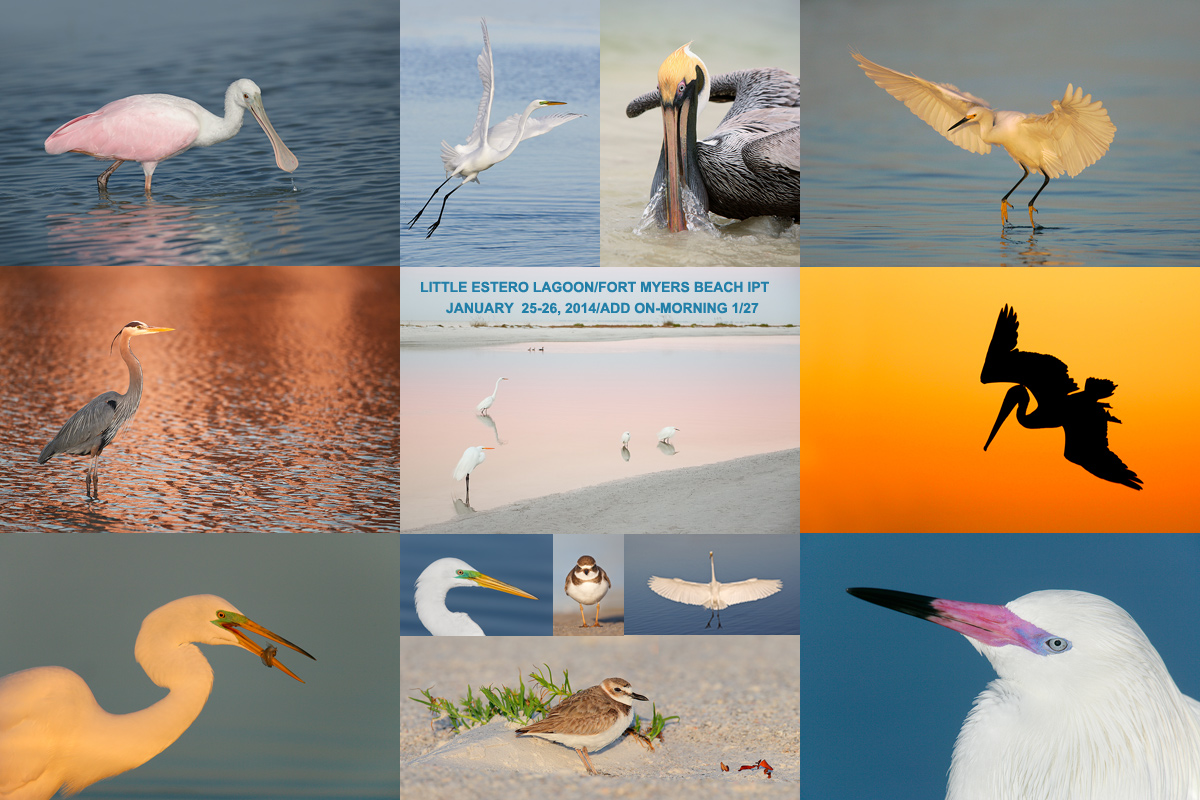
|
|
Join us to learn the ins and outs of Little Estero Lagoon. Call us at 863-692-0906 or e-mail to learn of the Late Registration Discounts for both the segments and the complete trip.
|
Little Estero Lagoon IPT: 2 full days–Sat/Sun: JAN 25-26 (Limit 12/Openings 9): $799. Introductory slide program: 7pm, FRI, JAN 24, 2014
Join Denise Ippolito and Arthur Morris for four great photography sessions at one of the top bird photography hotspots in North America. Morning sessions: 6:15am to 10:30am. Afternoon sessions: 3:00pm till 5:45pm. Lunch included. Informal image review and Photoshop sessions after lunch. Call 863-292-0906 to registger; payment if full is now due so call with your credit card in hand. Please e-mail with any questions.
Monday: Jan 27: Optional Estero Add-on/morning only (Limit 12/Openings 9): $249
Adding the last morning as above is an option.
What you will learn:
When to be where and where to be when at Little Estero Lagoon to maximize the photographic opportunities.
Autofocus basics and correct camera and gear set-up.
How to get the right exposure with digital every time.
How and why to expose to the right.
How to create pre-dawn silhouettes.
How to design pleasing images.
How to find the best perspective.
How to make strong images in cluttered situations.
How to photography birds in flight.
In-the-Field creative techniques.
Do consider joining us for the all or part of the South Florida Composite IPT. Call us at 863-692-0906 or e-mail to learn of the Late Registration Discounts for both the segments and the complete trip.

|
|
This afternoon seminar is 100% free and open to the public.
|
Free Afternoon Seminar
Join Denise Ippolito and me on the afternoon of January 28, 2014 at 1:00pm in the Boca Grande Community Center for a free two-part nature photography seminar entitled “Birds and Blooms.” At 1:00pm I will be presenting “A Bird Photographer’s Story” (updated with lots of my favorite new images). Denise will follow with her hugely popular “Bloomin’ Ideas.” The venue is located at 131 First Street West, Boca Grande, FL 33921.
Suggestion
Join us for the free seminar and then for the Venice Rookery IPT the following day.

|
|
Do join us on the Venice Rookery IPT, or better yet, for the whole South Florida Composite IPT. Scroll down or click here for complete details.
|
Jan 29 (WED): Venice Rookery In-the-Field: all day: (Limit 12/Openings 8): $399. Introductory slide program 7pm, Jan 28.
30 (THURS) -Venice am only. (Limit 12/Openings 7): $249
You can sign up for one or more of the short IPTs and/or one or more of the add-on days or you can opt to sign up for the all the sessions. Those signing up for the whole shebang will be having all lunches and dinners with us most every day. Call us at 863-692-0906 or e-mail to learn of the Late Registration Discounts for both the segments and the complete trip.

|
|
Bird Photography Hotspot: Anhinga Trail, Everglades National Park. Learn more here.
|
Anhinga Trail/Everglades National Park Mini-IPT: Feb 1-2, (SAT/SUN), 2014. (Limit 12/Openings 5): $799. Introductory slide program: 7pm: FRI Jan 31. (Limit 14/Openings: 12):
Join Denise Ippolito and Arthur Morris for four great photography sessions at one of the top bird photography hotspots in North America. Morning sessions: 6:15am to 10:30am. Afternoon sessions: 3:00pm till 5:45pm. Lunch included. Informal image review and Photoshop sessions after lunch.
Jan 31 (Friday) Anhinga Trail/Everglades National Park Optional Add-on/Morning Only (Limit 14/Openings 12): $249
Includes lunch, and informal image review and Photoshop session.
Call us at 863-692-0906 or e-mail to learn of the Late Registration Discounts for both the segments and the complete trip.
2014 South Florida Composite IPT: 6 1/2 days of photography spread over 9 days of learning, hanging out, and travel: $2644. (Limit 12/Openings: 5
Because of our intense travel schedule that includes a trip to Japan I will not be running the traditional SW FLA IPT. In addition, in an effort to give some folks a chance to get a taste of our teaching and our passion for bird photography, Denise Ippolito and I have organized a series of short IPTs that may be combined into one wonderful experience or enjoyed piecemeal. Click here for complete details or to register. Please e-mail with any questions or leave a comment below.
A $500 non-refundable deposit is required to hold your slot for this IPT. For the short segments that are less than $500 payment in full is due at the time of registration. Your balance is due 4 months before the date of the IPT and is also non-refundable. If the trip fills, we will be glad to apply a credit applicable to a future IPT for the full amount less a $100 processing fee. If we do not receive your check for the balance on or before the due date we will try to fill your spot from the waiting list. If your spot is filled, you will lose your deposit. If not, you can secure your spot by paying your balance. Best to call Jim or Jennifer with a credit card in hand to register. Credit cards are not accepted for balances. Alternatively you can send a check for $500 made out to Arthur Morris to us at PO Box 7245, Indian Lake Estates, FL, 33855. Please include a note with your e-mail address and be sure to let us know what you are signing up for.
Support the BAA Blog. Support the BAA Bulletins: Shop B&H here!
We want and need to keep providing you with the latest free information, photography and Photoshop lessons, and all manner of related information. Show your appreciation by making your purchases immediately after clicking on any of our B&H or Amazon Affiliate links in this blog post. Remember, B&H ain’t just photography!


 


Amazon
Everyone buys something from Amazon, be it a big lens or deodorant. Support the blog by starting your search by clicking on the logo-link below. No purchase is too small to be appreciated; they all add up. Why make it a habit? Because I make it a habit of bringing you new images and information on an almost daily basis.
Typos
In all blog posts and Bulletins, feel free to e-mail or to leave a comment regarding any typos, wrong words, misspellings, omissions, or grammatical errors. Just be right. 🙂
IPT Info
Many of our great trips are filling up. See especially info on the South Florida, Holland, and Nickerson Beach IPTs. Two great leaders on most trips ensure that you will receive individual attention, have all of your questions answered, and learn a ton including how to think like a pro, see the situation, and get the right exposure every time. In addition you will have fun, and make lots of great images. Click here for IPT details and general information.
January 23rd, 2014 And the Streak Goes On
I am again feeling a bit better today. I have been upgraded to lousy. Last night was an absolute pleasure at bedtime: wet itchy eyes and an incessant dry tickly cough that required about a half a bottle of Robitussin and some Chloraseptic lozenges in order to sleep. For one hour. And then repeat. What fun! At least my runny nose has quit! I leave for the South Florida IPTs tomorrow…. The good news: overall I am not feeling too, too bad this morning.
This post marks 58 days in a row with a new educational blog post, a record by far that should be extended for at least another week or two. Or not. 🙂 To show your appreciation, we ask that use our B&H and Amazon affiliate links for all of your B&H and Amazon purchases. Please check the availability of all photographic accessories in the BIRDS AS ART Online Store. We sell only what I use and depend on. We will not sell you junk. We know what you need to make creating great images easy and fun. And we are always glad to answer your gear questions via e-mail.
You can find the following items in the store: Gitzo tripods, Mongoose M3.6 and Wimberley heads, plates, low feet, and accessories, flash brackets, , Delkin e-film Pro Compact Flash Cards, LensCoat products, and our unique line-up of educational materials including ABP I & II, Digital Basics, Site and Set-up e-Guides, Canon and Nikon Camera Users and AF e-Guides, and MP-4 Photoshop video tutorials among others.
We would of course appreciate you using our B&H and Amazon affiliate links for all of your B&H and Amazon major gear, video, electronic, household, and personal purchases. For the photographic stuff mentioned above we would of course great appreciate your business.
Thanks and enjoy today’s blog post! This one took only 2 1/2 hours to assemble. I need to pack for South Florida.
Amazon Canada
Many kind folks from north of the border, ay, have e-mailed stating that they would love to help us out by using one of our affiliate links but that living in Canada and doing so presents numerous problems. Now, they can help us out by using our Amazon Canada affiliate link by starting their searches by clicking here. Many thanks to those who have written.
Hey John, Thanks for the Kick in the Butt!
While going through e-mails this morning I came across one from A.J. Mostert.
Hi Arthur,
I have noticed that you do not appear to use Adobe Photoshop CS6 and most interesting and surprising of all, you make no comment about Canon’s latest firmware upgrade 2.0.3 for the Canon EOS-1D X.
Regards, John
Adobe Photoshop CS6
Yes John, I have stuck with Photoshop CS-5 for far too long. Why? The #1 reason is that as far as I can tell, my images look pretty good. The #2 reason is that whenever I have tried CS-6, I encounter numerous little (and seemingly needless) interface and procedural changes from CS-5 that often leave me baffled and frustrated. The one that really drove me nuts was with cropping…. So I have resisted going to CS-6 in spite of knowing that Content Aware Fill and several other features have been improved. I have always been an “if it ain’t broke don’t fix it” kind of guy.
About 3 weeks ago, on the advice of buddy Tim Grey, I purchased a new laptop, the ASUS G750JX-DB71 17.3-Inch Laptop (Black)
Some may prefer the version with 24 gb of memory:
Everyone needs to remember that all of my favorite images are processed by me on a laptop. Have been doing that for close to a decade. And will continue doing just that till they nail the box shut. If Apple had not discontinued offering 17 inch laptops I would have switched to Mac…. As far as I can tell, that decision was a dumb one. I would have run BreezeBrowswer on the Mac on a Windows platform as described here.
As I will have only CS-6 once we get the new laptop up and running, I have decided that I will use only CS-6 on the upcoming South Florida Mini IPTs. When I get stuck, I will ask co-leader Denise Ippolito to walk me through it. I will let everyone know how this experiment goes. BTW,daughter Jen is in the process of downgrading the machine from Windows 8 to Windows 7. I have heard that the former would drive me nuts….
EOS-1D X Firmware Update Version 2.0.3
Thanks to the kick in the butt by John, I visited here and was impressed with what I read. The AF (autofocus) and the and AE (exposure) improvements are detailed here and AE (exposure). The improvements in custom camera operations are covered here.
I clicked on Download and saved the file to my desktop. I double-left-clicked on the Zipped file and copied the .FIR file to one of my Delkin 64GB 700X Pro CF flash cards. Be sure to put the file on the card itself rather than in one of the sub-folders. Then I put the card in the camera, went to the fourth YELLOW Wrench menu, scrolled down to the last item, firmware version, and followed the prompts to load the new firmware.
John’s e-mail opened my eyes to some new features that I was not aware of. Many folks are excited about now being able to use Exposure Compensation (EC)) with Manual mode. Not me. Here, adapted from what I wrote in reply to a question asked by Hossam in the Comments section at the blog post here:
As I am not deeply concerned with the aperture setting I cannot understand how this great new function improves upon the Tv method (with auto ISO or ISO Safety Shift) that I have been espousing on the blog for getting the shutter speed that you want. I addition, folks are, as Nikon folks have in the past, proclaiming that EC in Manual mode is the next best thing to sliced bread. It is not: you still need to change the EC when the background changes, the same as with the Tv method that I have been teaching… So for me, this change is no big deal at all.
No camera or custom function of firmware upgrade will ever help you get the right exposure every time with either digital of film. Only you can do that. As usual, we recommend that folks learn exposure theory by studying the Exposure chapter in the soft cover ABP (the original The Art of Bird Photography is the classic how-to work on bird photography) and by mastering the info detailed in the “Exposure Simplified: section in ABP II (The Art of Bird Photography II: 916 pages, 900+ image, on CD only). Knock yourself out and save $10 by getting the 2-book bundle. You can learn a lot more about how to improve you bird and nature photography here.
I will carefully study the material on the new firmware on the Canon website linked to above and after considering and possibly trying each new option, will share what I have learned with y’all here.
EOS-5D Mark III Firmware Update
Further motivated by John’s e-mail I belatedly downloaded and installed Firmware Version 1.2.3 to my 5D III. This update corrected several phenomenona that are seemingly inconsequential to most users. You can download this firmware update by clicking on the Download tab here and following the prompts.
BAA and other Site Guide
A BAA Site Guide is the next best thing to being on an IPT. And they cost only fifty bucks; a lot less than an IPT or other photo tour. You can learn about our 14 great Site Guides by clicking here.

|
|
Join us to learn the ins and outs of Little Estero Lagoon. Call us at 863-692-0906 or e-mail to learn of the Late Registration Discounts for both the segments and the complete trip.
|
Little Estero Lagoon IPT: 2 full days–Sat/Sun: JAN 25-26 (Limit 12/Openings 9): $799. Introductory slide program: 7pm, FRI, JAN 24, 2014
Join Denise Ippolito and Arthur Morris for four great photography sessions at one of the top bird photography hotspots in North America. Morning sessions: 6:15am to 10:30am. Afternoon sessions: 3:00pm till 5:45pm. Lunch included. Informal image review and Photoshop sessions after lunch. Call 863-292-0906 to registger; payment if full is now due so call with your credit card in hand. Please e-mail with any questions.
Monday: Jan 27: Optional Estero Add-on/morning only (Limit 12/Openings 9): $249
Adding the last morning as above is an option.
What you will learn:
When to be where and where to be when at Little Estero Lagoon to maximize the photographic opportunities.
Autofocus basics and correct camera and gear set-up.
How to get the right exposure with digital every time.
How and why to expose to the right.
How to create pre-dawn silhouettes.
How to design pleasing images.
How to find the best perspective.
How to make strong images in cluttered situations.
How to photography birds in flight.
In-the-Field creative techniques.
Do consider joining us for the all or part of the South Florida Composite IPT. Call us at 863-692-0906 or e-mail to learn of the Late Registration Discounts for both the segments and the complete trip.

|
|
This afternoon seminar is 100% free and open to the public.
|
Free Afternoon Seminar
Join Denise Ippolito and me on the afternoon of January 28, 2014 at 1:00pm in the Boca Grande Community Center for a free two-part nature photography seminar entitled “Birds and Blooms.” At 1:00pm I will be presenting “A Bird Photographer’s Story” (updated with lots of my favorite new images). Denise will follow with her hugely popular “Bloomin’ Ideas.” The venue is located at 131 First Street West, Boca Grande, FL 33921.
Suggestion
Join us for the free seminar and then for the Venice Rookery IPT the following day.

|
|
Do join us on the Venice Rookery IPT, or better yet, for the whole South Florida Composite IPT. Scroll down or click here for complete details.
|
Jan 29 (WED): Venice Rookery In-the-Field: all day: (Limit 12/Openings 8): $399. Introductory slide program 7pm, Jan 28.
30 (THURS) -Venice am only. (Limit 12/Openings 7): $249
You can sign up for one or more of the short IPTs and/or one or more of the add-on days or you can opt to sign up for the all the sessions. Those signing up for the whole shebang will be having all lunches and dinners with us most every day. Call us at 863-692-0906 or e-mail to learn of the Late Registration Discounts for both the segments and the complete trip.

|
|
Bird Photography Hotspot: Anhinga Trail, Everglades National Park. Learn more here.
|
Anhinga Trail/Everglades National Park Mini-IPT: Feb 1-2, (SAT/SUN), 2014. (Limit 12/Openings 5): $799. Introductory slide program: 7pm: FRI Jan 31. (Limit 14/Openings: 12):
Join Denise Ippolito and Arthur Morris for four great photography sessions at one of the top bird photography hotspots in North America. Morning sessions: 6:15am to 10:30am. Afternoon sessions: 3:00pm till 5:45pm. Lunch included. Informal image review and Photoshop sessions after lunch.
Jan 31 (Friday) Anhinga Trail/Everglades National Park Optional Add-on/Morning Only (Limit 14/Openings 12): $249
Includes lunch, and informal image review and Photoshop session.
Call us at 863-692-0906 or e-mail to learn of the Late Registration Discounts for both the segments and the complete trip.
2014 South Florida Composite IPT: 6 1/2 days of photography spread over 9 days of learning, hanging out, and travel: $2644. (Limit 12/Openings: 5
Because of our intense travel schedule that includes a trip to Japan I will not be running the traditional SW FLA IPT. In addition, in an effort to give some folks a chance to get a taste of our teaching and our passion for bird photography, Denise Ippolito and I have organized a series of short IPTs that may be combined into one wonderful experience or enjoyed piecemeal. Click here for complete details or to register. Please e-mail with any questions or leave a comment below.
A $500 non-refundable deposit is required to hold your slot for this IPT. For the short segments that are less than $500 payment in full is due at the time of registration. Your balance is due 4 months before the date of the IPT and is also non-refundable. If the trip fills, we will be glad to apply a credit applicable to a future IPT for the full amount less a $100 processing fee. If we do not receive your check for the balance on or before the due date we will try to fill your spot from the waiting list. If your spot is filled, you will lose your deposit. If not, you can secure your spot by paying your balance. Best to call Jim or Jennifer with a credit card in hand to register. Credit cards are not accepted for balances. Alternatively you can send a check for $500 made out to Arthur Morris to us at PO Box 7245, Indian Lake Estates, FL, 33855. Please include a note with your e-mail address and be sure to let us know what you are signing up for.
Support the BAA Blog. Support the BAA Bulletins: Shop B&H here!
We want and need to keep providing you with the latest free information, photography and Photoshop lessons, and all manner of related information. Show your appreciation by making your purchases immediately after clicking on any of our B&H or Amazon Affiliate links in this blog post. Remember, B&H ain’t just photography!


 


Amazon
Everyone buys something from Amazon, be it a big lens or deodorant. Support the blog by starting your search by clicking on the logo-link below. No purchase is too small to be appreciated; they all add up. Why make it a habit? Because I make it a habit of bringing you new images and information on an almost daily basis.
Typos
In all blog posts and Bulletins, feel free to e-mail or to leave a comment regarding any typos, wrong words, misspellings, omissions, or grammatical errors. Just be right. 🙂
IPT Info
Many of our great trips are filling up. See especially info on the South Florida, Holland, and Nickerson Beach IPTs. Two great leaders on most trips ensure that you will receive individual attention, have all of your questions answered, and learn a ton including how to think like a pro, see the situation, and get the right exposure every time. In addition you will have fun, and make lots of great images. Click here for IPT details and general information.
Typos
In all blog posts and Bulletins, feel free to e-mail or to leave a comment regarding any typos, wrong words, misspellings, omissions, or grammatical errors. Just be right. 🙂
IPT Info
Many of our great trips are filling up. See especially info on the South Florida, Holland, and Nickerson Beach IPTs. Two great leaders on most trips ensure that you will receive individual attention, have all of your questions answered, and learn a ton including how to think like a pro, see the situation, and get the right exposure every time. In addition you will have fun, and make lots of great images. Click here for IPT details and general information.
January 22nd, 2014 DiMaggio’s Record Falls!
I am again feeling a bit better today. I am now upgraded to crappy….
This post marks 57 days in a row with a new educational blog post, a record by far that should be extended for at least another week or two. Or not. 🙂 To show your appreciation, we ask that use our B&H and Amazon affiliate links for all of your B&H and Amazon purchases. Please check the availability of all photographic accessories in the BIRDS AS ART Online Store. We sell only what I use and depend on. We will not sell you junk. We know what you need to make creating great images easy and fun. And we are always glad to answer your gear questions via e-mail.
You can find the following items in the store: Gitzo tripods, Mongoose M3.6 and Wimberley heads, plates, low feet, and accessories, flash brackets, , Delkin e-film Pro Compact Flash Cards, LensCoat products, and our unique line-up of educational materials including ABP I & II, Digital Basics, Site and Set-up e-Guides, Canon and Nikon Camera Users and AF e-Guides, and MP-4 Photoshop video tutorials among others.
We would of course appreciate you using our B&H and Amazon affiliate links for all of your B&H and Amazon major gear, video, electronic, household, and personal purchases. For the photographic stuff mentioned above we would of course great appreciate your business.
Thanks and enjoy today’s blog post! More than 4 1/2 hours of work went into the creation of this blog post 🙂
South Florida IPT Late Registration Discount Info
Scroll down here for IPT details then call us at 863-692-0906 or e-mail to learn of the Late Registration Discounts for each of the three segments and the complete trip.
The Blue/Purple/Pink
You get up early virtually every day on an IPT. And you stay out late most days as well. In the mornings, we are often in place with our gear nearly an hour before the time of sunrise; if you have a view of the eastern sky, you can get some spectacular color very early. At LaJolla, the is no view of the eastern sky but we arrive early most days to photograph the cliffs in the dark with long shutter speeds. You will learn more about that in a future blog post.
On clear days the low western sky, seen above, often takes on gorgeous colors, usually ranging from blue just above horizon to various shades of pink and purple. Creative photographers are often able to incorporate these lovely skies into their images in a variety of ways.
All that you need to do to become a pink/purple/blue master is get up early and open your eyes and your mind….
Image Question
Why did I go with vertical format for the image above?
Optimizing the Pinks
As I strive to expose my RAW files well to the right, the images often look a lot less pink that the scene did in real life. I start by doing something that I rarely do in DPP, messing with the Tune tab for White balance fine adjustment. Once you open it, you will quickly figure out to drag it down a bit to increase the intensity of the colors. Experiment further by moving the small box either left or right.
Once the image is brought into Photoshop I use Selective Color on a Layer to remove CYAN and add MAGENTA to the WHITEs to further enhance the pinks.
The DPP RAW Conversion Guide
To learn why I use Canon’s Digital Photo Professional (DPP) to convert every image that I work on, click here.
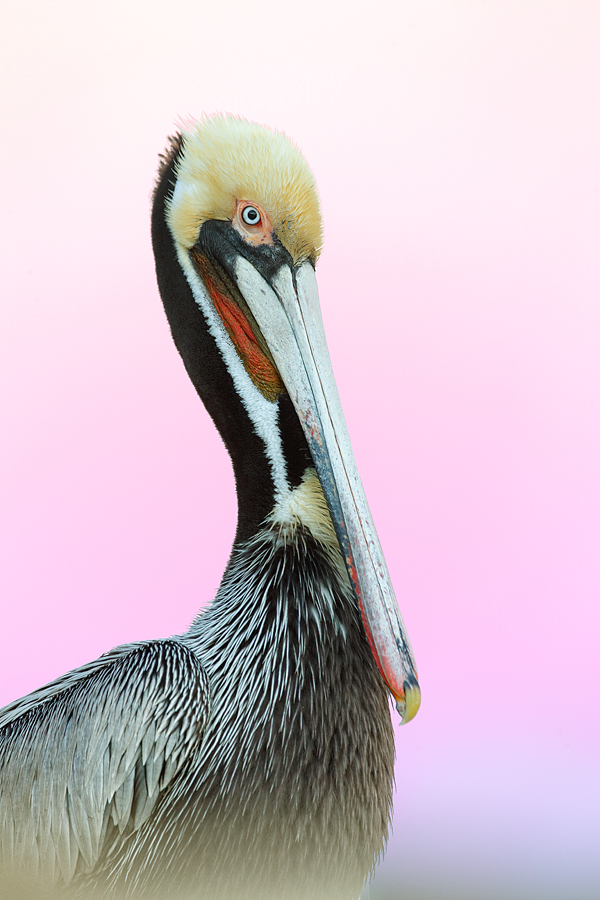
|
|
This image Brown Pelican predawn image was also created on the San Diego Short Notice IPT with the Gitzo 3532 LS carbon fiber tripod, Mongoose M3.6 head, theCanon EF 200-400mm f/4L IS USM Lens with Internal 1.4x Extender (with the internal extender in place at 560mm) and the Canon EOS-1D X. ISO 800. Evaluative metering +2 stops: 1/30 sec. at f/7.1 in Manual mode. White Balance = K 7500.
Six sensors up from the Central Sensor/AI Servo-Rear Focus AF on black at the base of the bill in front of the eye active at the moment of exposure. Click here to see the latest version of the Rear Focus Tutorial. Click on the image to see a larger version.
Image #2: Pelican in Pink
|
Choice of Perspective
Here I positioned my tripod as far up the small bank in front of the bird to line up with the brightest pink. I was not happy with the out-of-focus dirt in the foreground but was able to minimize it. Then along came IPT participant Clemens van der Werf, all 6′ 6″ of him. He was easily able to eliminate the dirt ridge in the foreground. I will be sharing some of Clemens spectacular new Southern Oceans images here soon.
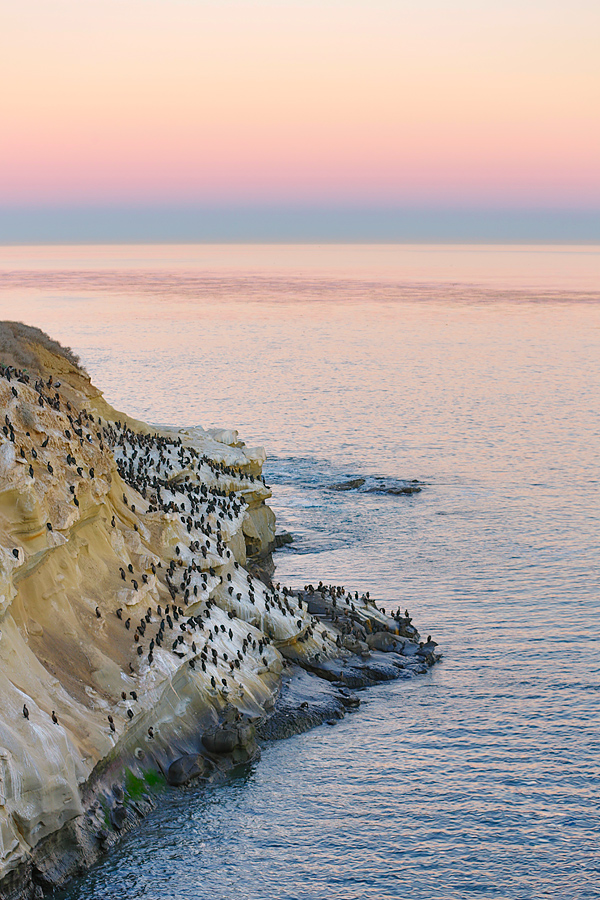
|
|
This in-camera Art Vivid HDR image was created with the Gitzo 3532 LS carbon fiber tripod, the Mongoose M3.6 head, the Canon EF 70-200mm f/2.8L IS II USM lens (at 145mm) and the Canon EOS 5D Mark III ISO 400. Evaluative metering +/- 2 stops around the base exposure that was +2 2/3 stops: 1/40 sec. at f/4 in Av mode. (As I have said here often you need to over-expose a ton when creating HDR Art Vivid images to obtain a decent histogram.)
Central sensor/Rear Focus AF on the birds on the bottom of the cliff and re-compose. Click here to see the latest version of the Rear Focus Tutorial. Click on the image to see a larger version.
Image #3: Brandt’s Cormorant Cliffs in Pink Predawn
|
Seeing the Shot
I saw this image in my mind the moment I headed down to the cliffs on my first scouting morning in San Diego. It was the first time that I had seeing a big group of cormorants on these particular cliffs. On the 2nd IPT morning we had some decent surf and photographed these cliffs in the dark with 30 second exposures. On the 3rd IPT morning–my last in San Diego–we stayed a bit later to enjoy the blue/purple pink skies. That’s when the idea of an HDR Art Vivid image hit me. Voila!
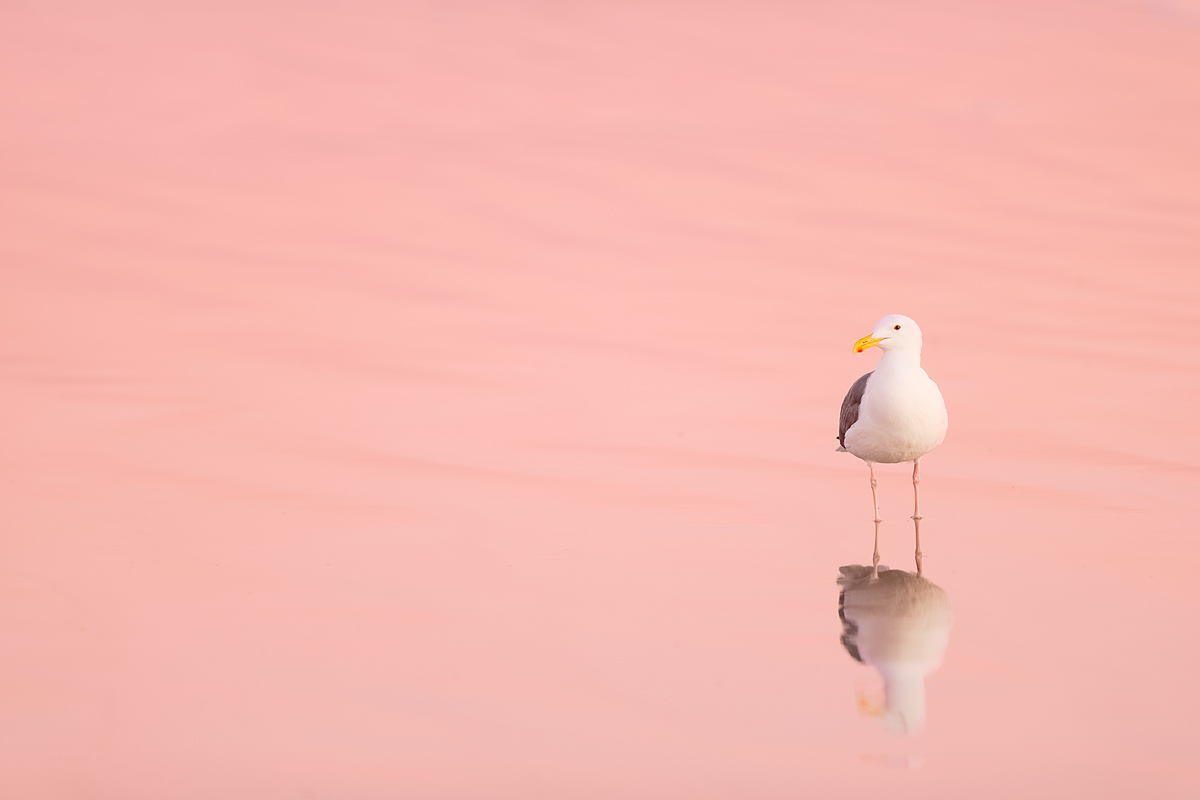
|
|
This Western Gull image was created after sunset on a San Diego Beach with the hand held Canon EF 300mm f/2.8L IS II USM lens and the Canon EOS-1D X. ISO 800. Evaluative metering +2 stops: 1/125 sec. at f/2.8 in Manual mode.
Five sensors to the right of the central Sensor/AI Servo–Rear Focus AF on the spot where the bird’s right wing meets the breast active at the moment of exposure. Click here to see the latest version of the Rear Focus Tutorial. Click on the image to see a larger version.
Image #4: Western Gull on Wet Sand at Sunset
|
Afternoon at the Beach
We spent two afternoons with the Wood Ducks, one was OK, one was fantastic. We did get to spend a single afternoon at the beach. We brought four loaves of white bread so that we could get the gulls where we wanted them. We created a variety of images and of course, we stayed late. As we were getting ready to leave, I noticed this nice Western Gull on the wet sand with the lovely pink reflections. I made only two images. I decided to travel light without a tripod and brought only the 300 for the gulls on the ground and used it with both the 1.4X and the 2X III TCs. I used the hand held 70-200 II for flight photography. Hand holding the 300 II is a lot easier than lugging the 600 II or toting the 200-400…. The trick is to learn to make good images with whatever rig you have in your hands.
Your Favorite?
Please take a moment to let us know which of these four completely different images is your favorite, and why.
San Diego Site Guide
A BAA Site Guide is the next best thing to being on an IPT. And they cost only fifty bucks; a lot less than an IPT! I share everything that I know about the five killer photography spots within 20 minutes of downtown San Diego. Learn where and how and when to photograph the amazing California race of Brown Pelican; Marbled Godwits against bright buff backgrounds; Wood Ducks, Lesser Scaup, and Ring-necked Duck at point blank range; and a variety of stunning gulls (including Heerman’s, Western, and California) both perched and in flight. You will learn where to go on what wind and what tides are best for each coastal location. As usual, I have held nothing back. You can get your copy of the San Diego Site Guide by clicking here; it will prove most useful to folks visiting in the colder months, but many of the locations are productive in other seasons as well, especially spring.
You can learn about our 13 other great Site Guides by clicking here.

|
|
Join us to learn the ins and outs of Little Estero Lagoon. Call us at 863-692-0906 or e-mail to learn of the Late Registration Discounts for both the segments and the complete trip.
|
Little Estero Lagoon IPT: 2 full days–Sat/Sun: JAN 25-26 (Limit 12/Openings 9): $799. Introductory slide program: 7pm, FRI, JAN 24, 2014
Join Denise Ippolito and Arthur Morris for four great photography sessions at one of the top bird photography hotspots in North America. Morning sessions: 6:15am to 10:30am. Afternoon sessions: 3:00pm till 5:45pm. Lunch included. Informal image review and Photoshop sessions after lunch. Call 863-292-0906 to registger; payment if full is now due so call with your credit card in hand. Please e-mail with any questions.
Monday: Jan 27: Optional Estero Add-on/morning only (Limit 12/Openings 9): $249
Adding the last morning as above is an option.
What you will learn:
When to be where and where to be when at Little Estero Lagoon to maximize the photographic opportunities.
Autofocus basics and correct camera and gear set-up.
How to get the right exposure with digital every time.
How and why to expose to the right.
How to create pre-dawn silhouettes.
How to design pleasing images.
How to find the best perspective.
How to make strong images in cluttered situations.
How to photography birds in flight.
In-the-Field creative techniques.
Do consider joining us for the all or part of the South Florida Composite IPT. Call us at 863-692-0906 or e-mail to learn of the Late Registration Discounts for both the segments and the complete trip.

|
|
This afternoon seminar is 100% free and open to the public.
|
Free Afternoon Seminar
Join Denise Ippolito and me on the afternoon of January 28, 2014 at 1:00pm in the Boca Grande Community Center for a free two-part nature photography seminar entitled “Birds and Blooms.” At 1:00pm I will be presenting “A Bird Photographer’s Story” (updated with lots of my favorite new images). Denise will follow with her hugely popular “Bloomin’ Ideas.” The venue is located at 131 First Street West, Boca Grande, FL 33921.
Suggestion
Join us for the free seminar and then for the Venice Rookery IPT the following day.

|
|
Do join us on the Venice Rookery IPT, or better yet, for the whole South Florida Composite IPT. Scroll down or click here for complete details.
|
Jan 29 (WED): Venice Rookery In-the-Field: all day: (Limit 12/Openings 8): $399. Introductory slide program 7pm, Jan 28.
30 (THURS) -Venice am only. (Limit 12/Openings 8):: $249
You can sign up for one or more of the short IPTs and/or one or more of the add-on days or you can opt to sign up for the all the sessions. Those signing up for the whole shebang will be having all lunches and dinners with us most every day. Call us at 863-692-0906 or e-mail to learn of the Late Registration Discounts for both the segments and the complete trip.

|
|
Bird Photography Hotspot: Anhinga Trail, Everglades National Park. Learn more here.
|
Anhinga Trail/Everglades National Park Mini-IPT: Feb 1-2, (SAT/SUN), 2014. (Limit 12/Openings 5): $799. Introductory slide program: 7pm: FRI Jan 31. (Limit 14/Openings: 12):
Join Denise Ippolito and Arthur Morris for four great photography sessions at one of the top bird photography hotspots in North America. Morning sessions: 6:15am to 10:30am. Afternoon sessions: 3:00pm till 5:45pm. Lunch included. Informal image review and Photoshop sessions after lunch.
Jan 31 (Friday) Anhinga Trail/Everglades National Park Optional Add-on/Morning Only (Limit 14/Openings 12): $249
Includes lunch, and informal image review and Photoshop session.
Call us at 863-692-0906 or e-mail to learn of the Late Registration Discounts for both the segments and the complete trip.
2014 South Florida Composite IPT: 6 1/2 days of photography spread over 9 days of learning, hanging out, and travel: $2644. (Limit 12/Openings: 5
Because of our intense travel schedule that includes a trip to Japan I will not be running the traditional SW FLA IPT. In addition, in an effort to give some folks a chance to get a taste of our teaching and our passion for bird photography, Denise Ippolito and I have organized a series of short IPTs that may be combined into one wonderful experience or enjoyed piecemeal. Click here for complete details or to register. Please e-mail with any questions or leave a comment below.
A $500 non-refundable deposit is required to hold your slot for this IPT. For the short segments that are less than $500 payment in full is due at the time of registration. Your balance is due 4 months before the date of the IPT and is also non-refundable. If the trip fills, we will be glad to apply a credit applicable to a future IPT for the full amount less a $100 processing fee. If we do not receive your check for the balance on or before the due date we will try to fill your spot from the waiting list. If your spot is filled, you will lose your deposit. If not, you can secure your spot by paying your balance. Best to call Jim or Jennifer with a credit card in hand to register. Credit cards are not accepted for balances. Alternatively you can send a check for $500 made out to Arthur Morris to us at PO Box 7245, Indian Lake Estates, FL, 33855. Please include a note with your e-mail address and be sure to let us know what you are signing up for.
Support the BAA Blog. Support the BAA Bulletins: Shop B&H here!
We want and need to keep providing you with the latest free information, photography and Photoshop lessons, and all manner of related information. Show your appreciation by making your purchases immediately after clicking on any of our B&H or Amazon Affiliate links in this blog post. Remember, B&H ain’t just photography!


 


Amazon
Everyone buys something from Amazon, be it a big lens or deodorant. Support the blog by starting your search by starting your search by clicking on the logo-link below. No purchase is too small to be appreciated; they all add up. Why make it a habit? Because I make it a habit of bringing you new images and information on an almost daily basis.
Typos
In all blog posts and Bulletins, feel free to e-mail or to leave a comment regarding any typos, wrong words, misspellings, omissions, or grammatical errors. Just be right. 🙂
IPT Info
Many of our great trips are filling up. See especially info on the South Florida, Holland, and Nickerson Beach IPTs. Two great leaders on most trips ensure that you will receive individual attention, have all of your questions answered, and learn a ton including how to think like a pro, see the situation, and get the right exposure every time. In addition you will have fun, and make lots of great images. Click here for IPT details and general information.
January 21st, 2014 The Streak…
I am feeling a bit better today. Another improvement….
This post inexplicably marks 56 days in a row with a new educational blog post, a record by far that should be extended for at least another week or two. Or not. 🙂 To show your appreciation, we ask that use our B&H and Amazon affiliate links for all of your B&H and Amazon purchases. Please check the availability of all photographic accessories in the BIRDS AS ART Online Store. We sell only what I use and depend on. We will not sell you junk. We know what you need to make creating great images easy and fun. And we are always glad to answer your gear questions via e-mail.
You can find the following items in the store: Gitzo tripods, Mongoose M3.6 and Wimberley heads, plates, low feet, and accessories, flash brackets, , Delkin e-film Pro Compact Flash Cards, LensCoat products, and our unique line-up of educational materials including ABP I & II, Digital Basics, Site and Set-up e-Guides, Canon and Nikon Camera Users and AF e-Guides, and MP-4 Photoshop video tutorials among others.
We would of course appreciate you using our B&H and Amazon affiliate links for all of your B&H and Amazon major gear, video, electronic, household, and personal purchases. For the photographic stuff mentioned above we would of course great appreciate your business.
Thanks and enjoy today’s blog post! More than 4 solid hour of work went into the creation of this blog post 🙂
South Florida IPT Late Registration Discount Info
Scroll down here for IPT details then call us at 863-692-0906 or e-mail to learn of the Late Registration Discounts for each of the three segments and the complete trip.
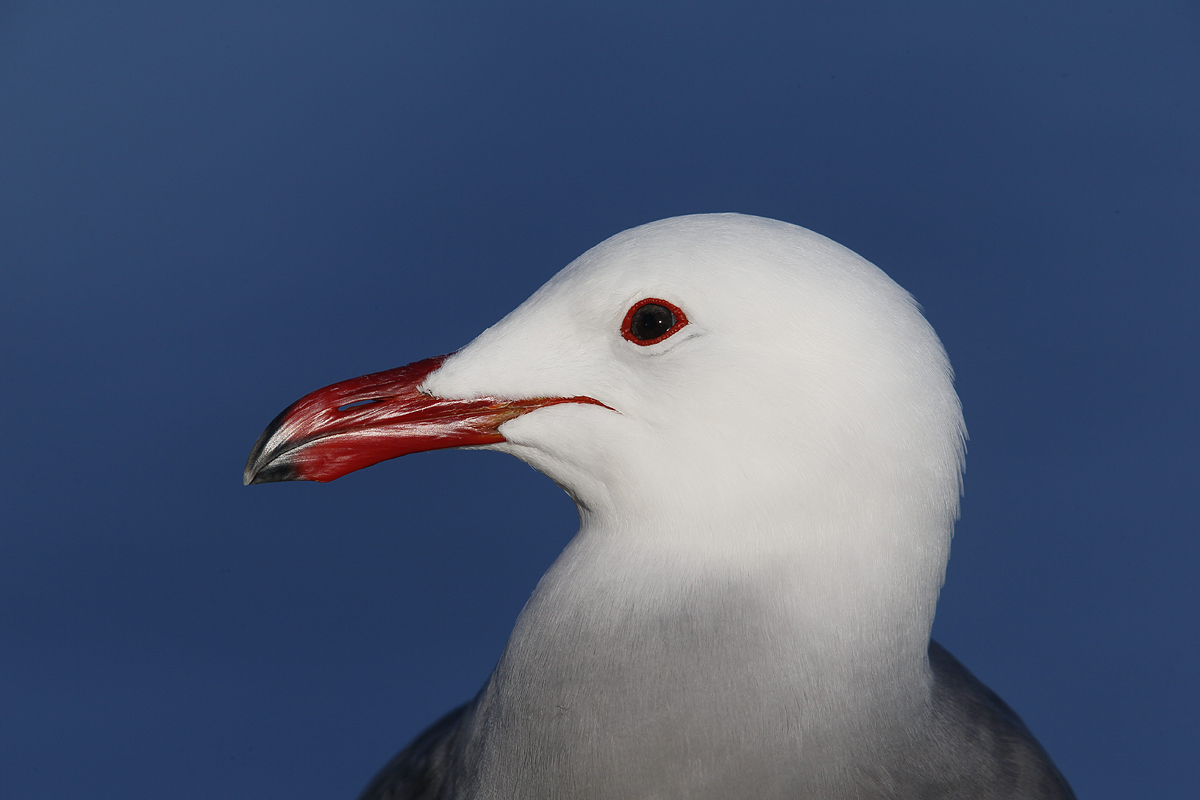
|
|
This Heerman’s Gull head portrait was created on the San Diego Short Notice IPT with the Gitzo 3532 LS carbon fiber tripod, Mongoose M3.6 head, the Canon EF 600mm f/4L IS II USM lens, the Canon 2x EF Extender III (Teleconverter), and the Canon EOS-1D X. ISO 400. Evaluative metering -1/3 stop as originally framed: 1/800 sec. at f/14 in Av Mode.
Central sensor (by necessity) Expand/AI Servo/Rear Focus on the base of bird’s bill as originally framed active at the moment of exposure. Click here if you missed the Rear Focus Tutorial. Click on the image to see a larger version.
To see the “original framing” of each of the images here, see the animated GIF below. Note: this image represented the extracted JPEG; it has not been not optimized at all but for the sharpening of the JPEG.
Image A
|
600/2X III TC & AV Mode…
To create each of the four images here I went with Av mode -1/3 stop; I wanted to make sure that I did not burn the bright WHITEs of the Heerman Gull’s head. I was being just a bit cautious as I needed to add 1/3 stop to the exposure during the RAW conversion in DPP in order to bring the WHITEs into Photoshop with the RGB values in the very high 220s. As the light was constant, the background was constant, and the framing was constant, Av mode worked just fine and allowed me control the aperture while adjusting only a single exposure parameter. Had I chosen to work in Manual mode, actually a very viable option, I would have needed to change the shutter speed each time that I changed the aperture…. Those of you who missed “At Long Last, As Promised: the Greatest, Most Educational Blog Post Ever? Manual… Av… Tv… Program… Which is The Best Shooting Mode?” should click here and read, study, and bookmark the post. A great plan would be to follow that up by re-visiting “The #1 Reason that it is Mandatory, Imperative, and Vitally Important that you Work in Manual Mode for Flight Photography.”
Not all real photographers work in Manual Mode 100% of the time… There are times when working in an automatic mode like Av or Tv is faster easier, and more efficient than working in Manual mode.
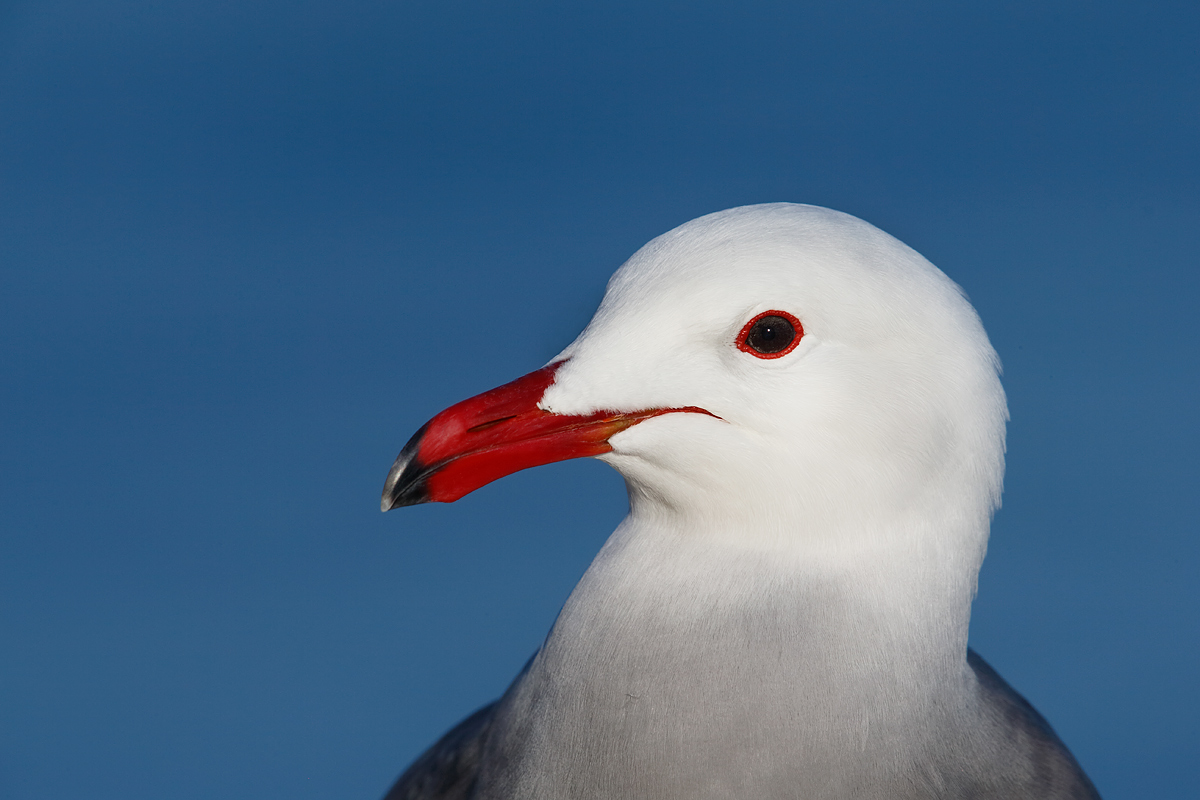
|
|
This Heerman’s Gull head portrait was also created on the San Diego Short Notice IPT with the Gitzo 3532 LS carbon fiber tripod, Mongoose M3.6 head, the Canon EF 600mm f/4L IS II USM lens, the Canon 2x EF Extender III (Teleconverter), and the Canon EOS-1D X Digital SLR camera. ISO 400. Evaluative metering -1/3 stop as originally framed: 1/800 sec. at f/14 in Av Mode.
Central sensor (by necessity) Expand/AI Servo/Rear Focus on the base of bird’s bill as originally framed active at the moment of exposure. Click here if you missed the Rear Focus Tutorial. Click on the image to see a larger version.
To see the “original framing” of each of the images here, please see the animated GIF below.
Image B
|
Easy Image Question
Considering Image A and Image B, which is the keeper and which is the insta-delete? Be sure to let us know why.
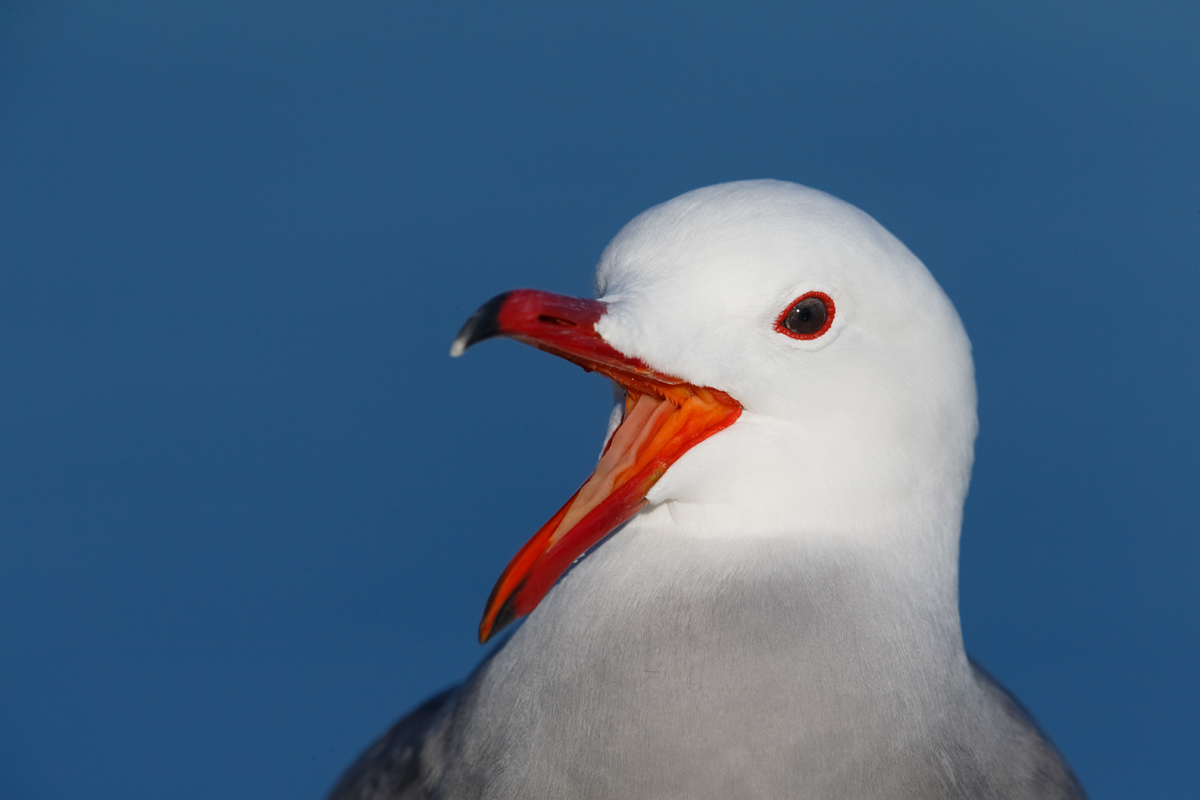
|
|
This Heerman’s Gull head portrait was also created on the San Diego Short Notice IPT with the Gitzo 3532 LS carbon fiber tripod, Mongoose M3.6 head, the Canon EF 600mm f/4L IS II USM lens, the Canon 2x EF Extender III (Teleconverter), and the Canon EOS-1D X Digital SLR camera. ISO 400. Evaluative metering -1/3 stop as originally framed: 1/1250 sec. at f/11 in Av Mode.
Central sensor (by necessity) Expand/AI Servo/Rear Focus on the base of bird’s bill as originally framed active at the moment of exposure. Click here if you missed the Rear Focus Tutorial. Click on the image to see a larger version.
To see the “original framing” of each of the images here, please see the animated GIF below.
Image C
|
When You Point Your Lens at a Gull…
If I have said or written it once, I have said or written it a thousand times: “If you point your lens at a gull, it will usually not be long until the bird does something really interesting. At times, I point my long lens at a gull and am rewarded almost instantly. Here, I had made about a dozen head portraits before the bird let out with a lovely tight yawn.
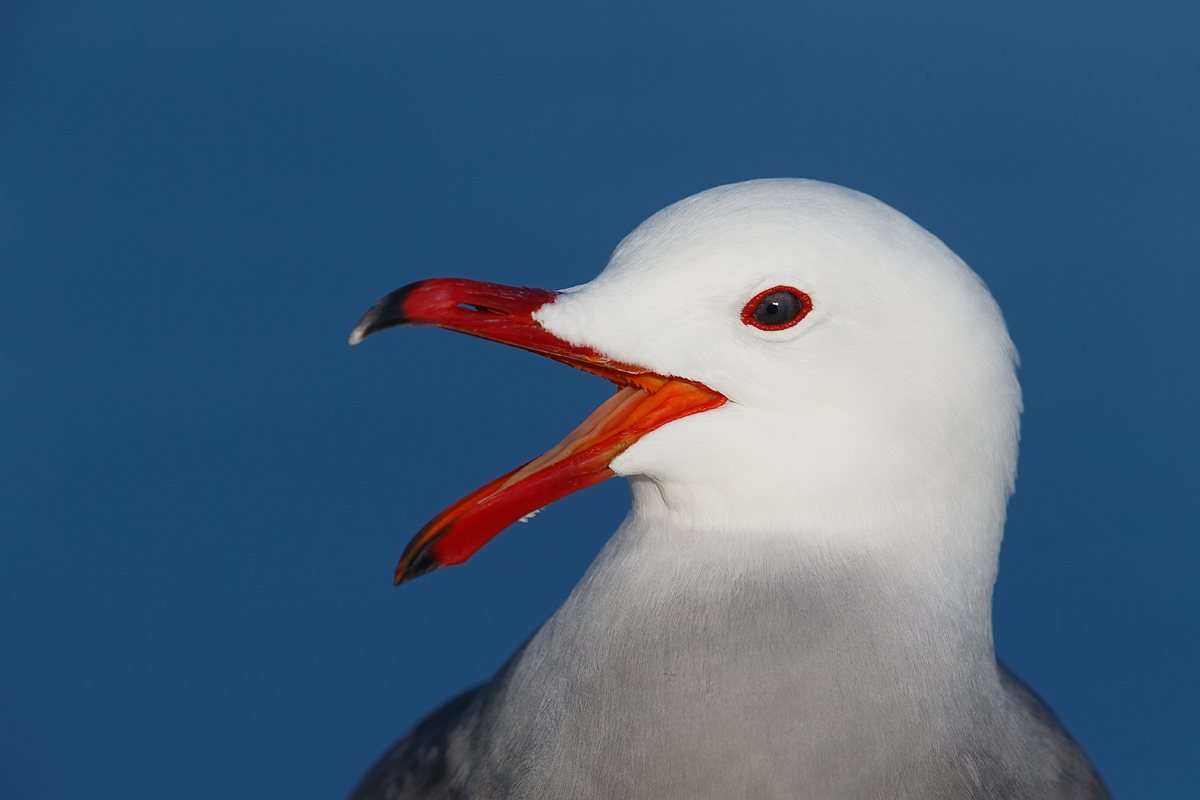
|
|
This Heerman’s Gull head portrait was also created on the San Diego Short Notice IPT with the Gitzo 3532 LS carbon fiber tripod, Mongoose M3.6 head, the Canon EF 600mm f/4L IS II USM lens, the Canon 2x EF Extender III (Teleconverter), and the Canon EOS-1D X Digital SLR camera. ISO 400. Evaluative metering -1/3 stop as originally framed: 1/1250 sec. at f/11 in Av Mode.
Central sensor (by necessity) Expand/AI Servo/Rear Focus on the base of bird’s bill as originally framed active at the moment of exposure. Click here if you missed the Rear Focus Tutorial. Click on the image to see a larger version.
To see the “original framing” of this image, that represents the original framing of each of the images here, please see the animated GIF below.
Image D
|
Images C & D
Of the two images of the gull yawning, Imaged C & D, which is the stronger image? Let us know which one of the two you like best and why?
I am not sure if I switched to a larger aperture (that resulted in a faster shutter speed) because I was experimenting or because I suspected that a yawn was imminent. I would guess the former.
Central Sensor only Image Design Strategies
When using a super telephoto lens at f/8 with the 1D X or the 5D Mark III (and the EOS-1D Mark IV I believe), you are limited to choosing the central sensor only. You are however OK to choose the Expand option provided that that option is available. When working with the 600 II/2X III/1D X or the 200-400 with internal and an external TCs in place I will almost always go to Expand; this gives me 5 active AF points, the central sensor and the 4 surrounding points.
In situation like the one that I encountered here, there are 2 options: focus on the eye and then re-compose or keep AF active and focus on the base of the bill. The former option would result in better framing but might result in an unsharp eye if the bird moves a tiny bit closer or farther away. With the clean background in this series I knew that keeping AF active at the moment of exposure would yield consistently sharp on the eye images with the bird too centered. Moving the bird back in the frame using techniques detailed in one of the several tutorials in APTATS II took about 10 seconds with another 10 seconds to apply are regular Layer Mask and paint away the edge. Mention this blog post and Jim will be glad to apply a $10 discount on your APTATS II purchase with phone orders only.
Southwest Florida Site Guide
My Southwest Florida Site Guide includes detailed instructions for photographing at the great spots within an hour or two of Fort Myers, Florida. Included are Ding Darling NWR then and now, Blind Pass Beach, the Sanibel Fishing Pier, the East Gulf Beaches–great for Snowy Plover, Little Estero Lagoon, the Sanibel Causeway, Venice Rookery, my secret White Pelican spot–head shots with a 300mm lens plus flight and action, and the two best Burrowing Owl sites on Cape Coral. Learn more or purchase here.

|
|
Join us to learn the ins and outs of Little Estero Lagoon. Call us at 863-692-0906 or e-mail to learn of the Late Registration Discounts for both the segments and the complete trip.
|
Little Estero Lagoon IPT: 2 full days–Sat/Sun: JAN 25-26 (Limit 12/Openings 9): $799. Introductory slide program: 7pm, FRI, JAN 24, 2014
Join Denise Ippolito and Arthur Morris for four great photography sessions at one of the top bird photography hotspots in North America. Morning sessions: 6:15am to 10:30am. Afternoon sessions: 3:00pm till 5:45pm. Lunch included. Informal image review and Photoshop sessions after lunch. Call 863-292-0906 to registger; payment if full is now due so call with your credit card in hand. Please e-mail with any questions.
Monday: Jan 27: Optional Estero Add-on/morning only (Limit 12/Openings 9): $249
Adding the last morning as above is an option.
What you will learn:
When to be where and where to be when at Little Estero Lagoon to maximize the photographic opportunities.
Autofocus basics and correct camera and gear set-up.
How to get the right exposure with digital every time.
How and why to expose to the right.
How to create pre-dawn silhouettes.
How to design pleasing images.
How to find the best perspective.
How to make strong images in cluttered situations.
How to photography birds in flight.
In-the-Field creative techniques.
Do consider joining us for the all or part of the South Florida Composite IPT. Call us at 863-692-0906 or e-mail to learn of the Late Registration Discounts for both the segments and the complete trip.

|
|
This afternoon seminar is 100% free and open to the public.
|
Free Afternoon Seminar
Join Denise Ippolito and me on the afternoon of January 28, 2014 at 1:00pm in the Boca Grande Community Center for a free two-part nature photography seminar entitled “Birds and Blooms.” At 1:00pm I will be presenting “A Bird Photographer’s Story” (updated with lots of my favorite new images). Denise will follow with her hugely popular “Bloomin’ Ideas.” The venue is located at 131 First Street West, Boca Grande, FL 33921.
Suggestion
Join us for the free seminar and then for the Venice Rookery IPT the following day.

|
|
Do join us on the Venice Rookery IPT, or better yet, for the whole South Florida Composite IPT. Scroll down or click here for complete details.
|
Jan 29 (WED): Venice Rookery In-the-Field: all day: (Limit 12/Openings 8): $399. Introductory slide program 7pm, Jan 28.
30 (THURS) -Venice am only. (Limit 12/Openings 8):: $249
You can sign up for one or more of the short IPTs and/or one or more of the add-on days or you can opt to sign up for the all the sessions. Those signing up for the whole shebang will be having all lunches and dinners with us most every day. Call us at 863-692-0906 or e-mail to learn of the Late Registration Discounts for both the segments and the complete trip.

|
|
Bird Photography Hotspot: Anhinga Trail, Everglades National Park. Learn more here.
|
Anhinga Trail/Everglades National Park Mini-IPT: Feb 1-2, (SAT/SUN), 2014. (Limit 12/Openings 5): $799. Introductory slide program: 7pm: FRI Jan 31. (Limit 14/Openings: 12):
Join Denise Ippolito and Arthur Morris for four great photography sessions at one of the top bird photography hotspots in North America. Morning sessions: 6:15am to 10:30am. Afternoon sessions: 3:00pm till 5:45pm. Lunch included. Informal image review and Photoshop sessions after lunch.
Jan 31 (Friday) Anhinga Trail/Everglades National Park Optional Add-on/Morning Only (Limit 14/Openings 12): $249
Includes lunch, and informal image review and Photoshop session.
Call us at 863-692-0906 or e-mail to learn of the Late Registration Discounts for both the segments and the complete trip.
2014 South Florida Composite IPT: 6 1/2 days of photography spread over 9 days of learning, hanging out, and travel: $2644. (Limit 12/Openings: 5
Because of our intense travel schedule that includes a trip to Japan I will not be running the traditional SW FLA IPT. In addition, in an effort to give some folks a chance to get a taste of our teaching and our passion for bird photography, Denise Ippolito and I have organized a series of short IPTs that may be combined into one wonderful experience or enjoyed piecemeal. Click here for complete details or to register. Please e-mail with any questions or leave a comment below.
A $500 non-refundable deposit is required to hold your slot for this IPT. For the short segments that are less than $500 payment in full is due at the time of registration. Your balance is due 4 months before the date of the IPT and is also non-refundable. If the trip fills, we will be glad to apply a credit applicable to a future IPT for the full amount less a $100 processing fee. If we do not receive your check for the balance on or before the due date we will try to fill your spot from the waiting list. If your spot is filled, you will lose your deposit. If not, you can secure your spot by paying your balance. Best to call Jim or Jennifer with a credit card in hand to register. Credit cards are not accepted for balances. Alternatively you can send a check for $500 made out to Arthur Morris to us at PO Box 7245, Indian Lake Estates, FL, 33855. Please include a note with your e-mail address and be sure to let us know what you are signing up for.
Support the BAA Blog. Support the BAA Bulletins: Shop B&H here!
We want and need to keep providing you with the latest free information, photography and Photoshop lessons, and all manner of related information. Show your appreciation by making your purchases immediately after clicking on any of our B&H or Amazon Affiliate links in this blog post. Remember, B&H ain’t just photography!


 


Amazon
Everyone buys something from Amazon, be it a big lens or deodorant. Support the blog by starting your search by starting your search by clicking on the logo-link below. No purchase is too small to be appreciated; they all add up. Why make it a habit? Because I make it a habit of bringing you new images and information on an almost daily basis.
Typos
In all blog posts and Bulletins, feel free to e-mail or to leave a comment regarding any typos, wrong words, misspellings, omissions, or grammatical errors. Just be right. 🙂
IPT Info
Many of our great trips are filling up. See especially info on the South Florida, Holland, and Nickerson Beach IPTs. Two great leaders on most trips ensure that you will receive individual attention, have all of your questions answered, and learn a ton including how to think like a pro, see the situation, and get the right exposure every time. In addition you will have fun, and make lots of great images. Click here for IPT details and general information.
Typos
In all blog posts and Bulletins, feel free to e-mail or to leave a comment regarding any typos, wrong words, misspellings, omissions, or grammatical errors. Just be right. 🙂
IPT Info
Many of our great trips are filling up. See especially info on the South Florida, Holland, and Nickerson Beach IPTs. Two great leaders on most trips ensure that you will receive individual attention, have all of your questions answered, and learn a ton including how to think like a pro, see the situation, and get the right exposure every time. In addition you will have fun, and make lots of great images. Click here for IPT details and general information.
January 20th, 2014 The Streak…
I am feeling lousy today. That is a a huge improvement from yesterday….
Congrats to Peyton Manning and the Broncos and to Richard Sherman and the Seahawks for advancing to the Super Bowl.
This post inexplicably marks 55 days in a row with a new educational blog post, a record by far that should be extended for at least another week or two. Or not. 🙂 To show your appreciation, we ask that use our B&H and Amazon affiliate links for all of your B&H and Amazon purchases. Please check the availability of all photographic accessories in the BIRDS AS ART Online Store. We sell only what I use and depend on. We will not sell you junk. We know what you need to make creating great images easy and fun. And we are always glad to answer your gear questions via e-mail.
You can find the following items in the store: Gitzo tripods, Mongoose M3.6 and Wimberley heads, plates, low feet, and accessories, flash brackets, , Delkin e-film Pro Compact Flash Cards, LensCoat products, and our unique line-up of educational materials including ABP I & II, Digital Basics, Site and Set-up e-Guides, Canon and Nikon Camera Users and AF e-Guides, and MP-4 Photoshop video tutorials among others.
We would of course appreciate you using our B&H and Amazon affiliate links for all of your B&H and Amazon major gear, video, electronic, household, and personal purchases. For the photographic stuff mentioned above we would of course great appreciate your business.
Thanks and enjoy today’s blog post! More than 3 1/2 hours of work went into the creation of this blog post 🙂
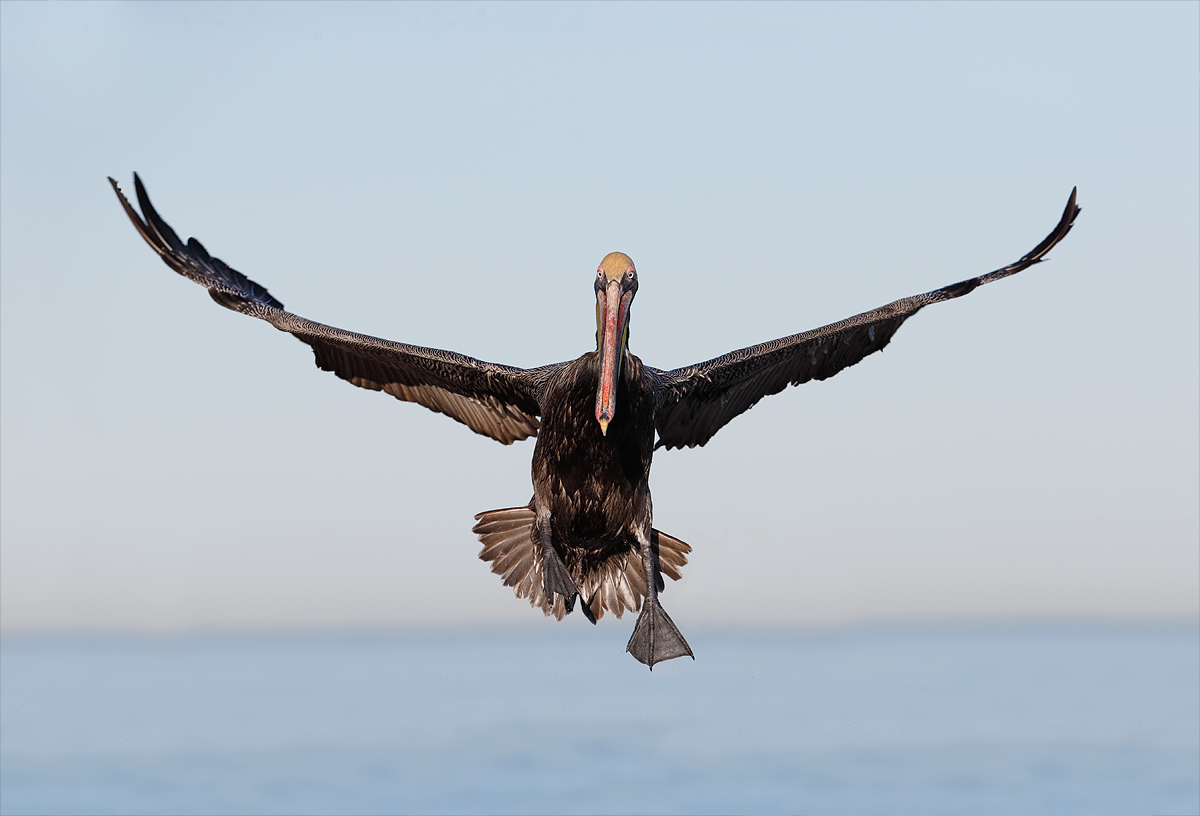
|
|
This landing Brown Pelican image was created with the Canon EF 300mm f/2.8L IS II USM lens and the Canon EOS-1D X. ISO 400. Evaluative metering +1/3 stop: 1/? sec. at f/? Manual mode.
Central Sensor/AI Servo–Rear Focus AF on the top of the bird’s head active at the moment of exposure. Click here to see the latest version of the Rear Focus Tutorial. Click on the image to see a larger version.
|
300 f/2.8 for Flight Photography and More
After letting folks know why I feel that the 200-400 is a superior lens for bird and wildlife photography in yesterday’s blog post here, I wanted to give a shout out to the 300mm f.2l8L IS lens…. FYI: I have responded to the many interesting questions and comments in the “300 f/2.8L IS or 200-400 f/4L IS with Internal TC/Which is the best lens?” post; it is well worth a re-visit.
As you can see above, it can be a great lens for hand held flight photography. The key is to be able to estimate that size of the subject in the frame and position yourself to create images the birds filling 2/3 to 3/4 of the frame. On our San Diego trip, we were somewhat cursed with still mornings; when the winds are light the birds come in low and we often wound up with the heads of various pelicans in the bottom of the frame as in the image above.
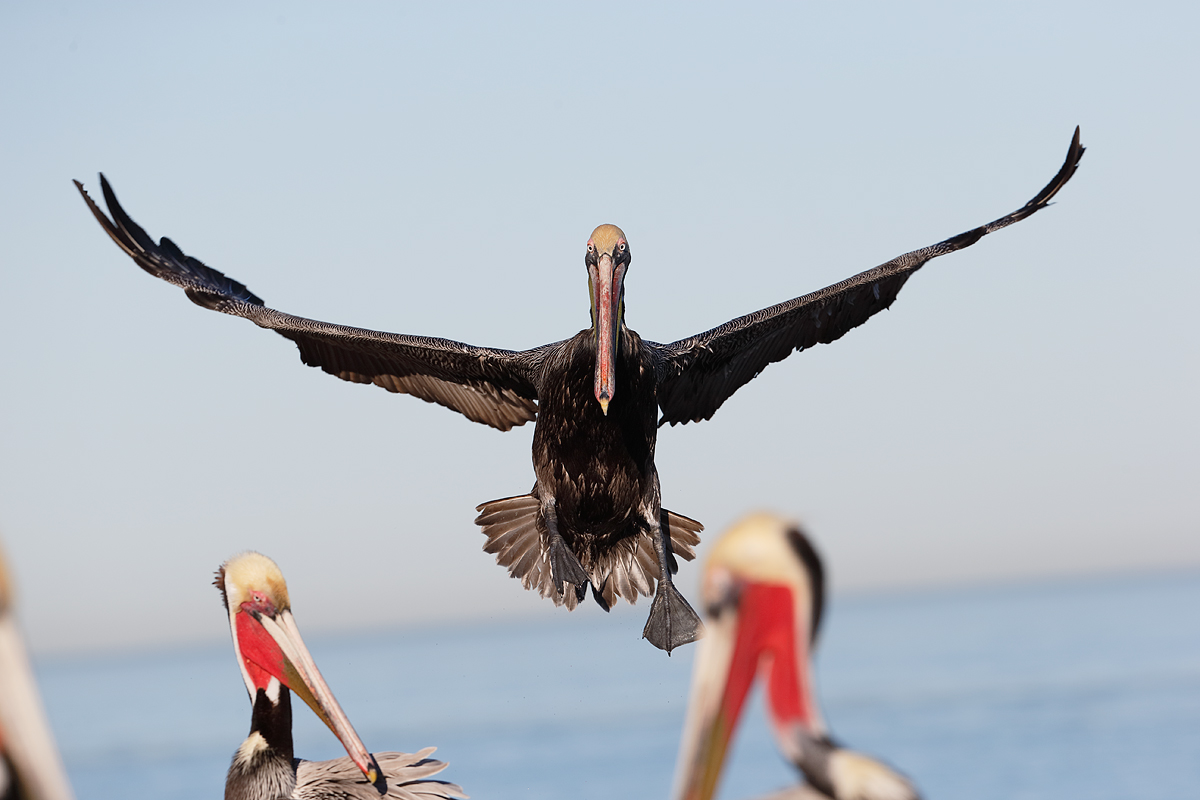
|
|
This is the original image.
|
The Image Optimization
The image optimization was fairly straight-forward, except for the missing part of the bird’s left foot that had merged with one of the pelican heads…. After leveling the image, I used the flopping technique from APTATS II along with a Hide-All Layer Mask to cover the offending pelican heads and followed that up with some 80% opacity Clone Stamp Tool work. Advanced Quick Masking Techniques are detailed in APTATS I. Mention this blog post and Jim will be glad to apply a $5 discount on your APTATS I purchase with phone orders only. The flopping technique is one of several tutorials detailed in APTATS II. Mention this blog post and Jim will be glad to apply a $10 discount on your APTATS II purchase with phone orders only. Order both to hone your Photoshop image clean-up skills and Jim will be glad to enter a $15 discount for the pair, on phone orders only.
Everything else and tons more is detailed in Digital Basics File, an instructional PDF that is sent via e-mail. It includes my complete digital workflow, dozens of great Photoshop tips, several different ways to expand canvas, all of my time-saving Keyboard Shortcuts, Quick Masking, Layer Masking, and NIK Color Efex Pro basics, my killer image clean-up techniques, Digital Eye Doctor, and tons more.
The Image Optimization Question…
How did I re-construct the missing part of the bird’s left webbed foot? There were several steps in involved; please be specific. On a related note, how would you have attempted the repair?
|
|
|
This Steller’s Sea Eagle image was created with the hand held Canon 300mm f/2.8 L IS II lens, 1.4X III TC, and the Canon EOS-1D Mark IV (now replaced by the Canon EOS-1D X). ISO 800. Evaluative metering +2 1/3 stops off the white sky: 1/640 sec. at f/4 in Manual mode.
Central sensor/AI Servo Rear Focus AF on the bird’s upper breast active at the moment of exposure. Click here if you missed the Rear Focus Tutorial. Click on the image to enlarge it.
|
Japan
I first used the 300 II on my February 2012 Japan trip, most often for flight photography of Steller’s Sea Eagles from the tourist boat and also at one of the two crane parks where the Red-crowned Cranes often flew by at close range. With the 1.4X III TC it proved to be a deadly combination.
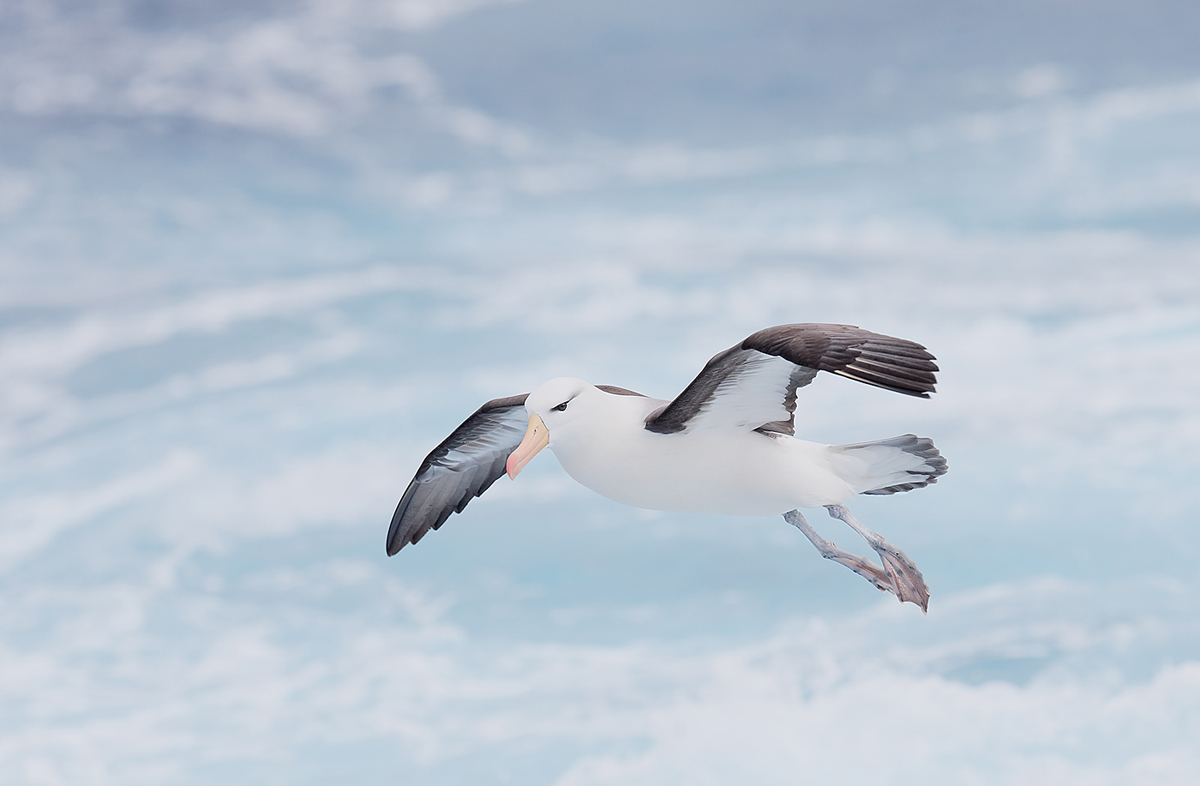
|
|
This Black-browed Albatross image was created with the hand held Canon 300mm f/2.8 L IS II lens, 1.4X III TC, and the Canon EOS-1D X. ISO 800. Evaluative metering +1 stop: as framed: 1/2000 sec. at f/6.3
Central sensor/AI Servo Rear Focus AF on the bird’s face active at the moment of exposure. Click here to see the latest version of the Rear Focus Tutorial. Click on the image to see a larger version.
|
The Southern Oceans Trips
On my two 2012 Southern Oceans trips, the 300 II proved to be an extremely valuable asset. With the tame birds it was–on the longer walks–the longest lens that I took ashore. Alone or with either Series III TCs it routinely produced razor sharp images. I tried to work on a tripod whenever I used the 2X. On my second trip that year I wrecked my brand new 500 f/4L IS II; the 300 II served as a more than adequate back-up.
Nature’s Best Honored Image
The image above was honored in the Art in Nature category–I love when they name contest categories after me–of the Windland Smith Rice International Photography competetion. Thanks to Denise Ippolito for suggesting that I enter this one.
How Sharp?
When Outdoor Photographer editor Rob Sheppard saw the TIFF file for the image above he remarked that it was one of the sharpest bird photographs that he had ever seen. Considering that it was created with the 2X teleconverter that is quite a compliment.
Speaking of Contests!
BIRDS AS ART 2nd International Bird Photography Competition
Only 11 days left to register and pay.
Big News
With so many folks signing up at the last minute and with so many folks having trouble uploading their images due to server overload, the deadline for entering the contest (registering and paying) has been extended until January 31, 2014. There will be no additional extensions. The deadline for uploading your images has been extended until midnight Eastern time on February 10, 2014. Take advantage of this extension to have a crack at the great prizes.
Learn more and enter the BIRDS AS ART 2nd International Bird Photography Competition here. Twenty-five great prizes including the $1000 Grand Prize and intense competition. Bring your best.
Register and Pay
To register click here.
To learn of payment options, click here.

|
|
This afternoon seminar is 100% free and open to the public.
|
Free Afternoon Seminar
Join Denise Ippolito and me on the afternoon of January 28, 2014 at 1:00pm in the Boca Grande Community Center for a free two-part nature photography seminar entitled “Birds and Blooms.” At 1:00pm I will be presenting “A Bird Photographer’s Story” (updated with lots of my favorite new images). Denise will follow with her hugely popular “Bloomin’ Ideas.” The venue is located at 131 First Street West, Boca Grande, FL 33921.
Suggestion
Join us for the free seminar and then for the Venice Rookery IPT the following day.

|
|
Do join us on the Venice Rookery IPT, or better yet, for the whole South Florida Composite IPT. Scroll down or click here for complete details.
|
The 2014 South Florida Mini-IPTs
Because of our intense travel schedule that includes a trip to Japan I will not be running the traditional SW FLA IPT. In addition, in an effort to give some folks a chance to get a taste of our teaching and our passion for bird photography, Denise Ippolito and I have organized a series of short IPTs that may be combined into one wonderful experience or enjoyed piecemeal.
Jan 29 (WED): Venice Rookery In-the-Field: all day: (Limit 14/Openings 10): $399. Introductory slide program 7pm, Jan 28.
30 (THURS) -Venice am only. (Limit 14/Openings 10):: $249
You can sign up for one or more of the short IPTs and/or one or more of the add-on days or you can opt to sign up for the all the sessions. Those signing up for the whole shebang will be having all lunches and dinners with us most every day.
A $500 non-refundable deposit is required to hold your slot for this IPT. For the short segments that are less than $500 payment in full is due at the time of registration. Your balance is due 4 months before the date of the IPT and is also non-refundable. If the trip fills, we will be glad to apply a credit applicable to a future IPT for the full amount less a $100 processing fee. If we do not receive your check for the balance on or before the due date we will try to fill your spot from the waiting list. If your spot is filled, you will lose your deposit. If not, you can secure your spot by paying your balance. Best to call Jim or Jennifer with a credit card in hand to register. Credit cards are not accepted for balances. Alternatively you can send a check for $500 made out to Arthur Morris to us at PO Box 7245, Indian Lake Estates, FL, 33855. Please include a note with your e-mail address and be sure to let us know what you are signing up for.
Support the BAA Blog. Support the BAA Bulletins: Shop B&H here!
We want and need to keep providing you with the latest free information, photography and Photoshop lessons, and all manner of related information. Show your appreciation by making your purchases immediately after clicking on any of our B&H or Amazon Affiliate links in this blog post. Remember, B&H ain’t just photography!


 


Amazon
Everyone buys something from Amazon, be it a big lens or deodorant. Support the blog by starting your search by starting your search by clicking on the logo-link below. No purchase is too small to be appreciated; they all add up. Why make it a habit? Because I make it a habit of bringing you new images and information on an almost daily basis.
Typos
In all blog posts and Bulletins, feel free to e-mail or to leave a comment regarding any typos, wrong words, misspellings, omissions, or grammatical errors. Just be right. 🙂
IPT Info
Many of our great trips are filling up. See especially info on the South Florida, Holland, and Nickerson Beach IPTs. Two great leaders on most trips ensure that you will receive individual attention, have all of your questions answered, and learn a ton including how to think like a pro, see the situation, and get the right exposure every time. In addition you will have fun, and make lots of great images. Click here for IPT details and general information.
January 19th, 2014 The Streak…
My two flights yesterday went smoothly but 24 hours later, Friday night’s scratchy throat had turned into a full-blown head cold. Last night my nose was running like a sieve, I was badly congested, I had a nasty headache, my throat hurt, I had sinus pain, and of course, my teeth hurt too. Sleep was very hard to come by. I was up every 20 minutes or so sneezing and coughing. I did sleep well from 2:38am until 4:08am. I eventually got up for good at 7am and began working on finishing this blog post. I had written most of it on the plane on Saturday; as I type now at 7:26am,, I need to work on the images.
Here are my NFL picks: Denver (I do not like Pretty Boy) and Seattle.
You gotta love head colds. I am feeling a bit better right now. Heck, things could be a lot worse. My good friend James Shadle has been in the hospital for a week with bi-lateral pneumonia; please join me in wishing him a s speedy recovery so that he can begin taking folks out to Alafia Banks in Tampa Bay for some great Roseate Spoonbill photography. Get well soon Froggie!
This post marks 54 days in a row with a new educational blog post, a record by far that should be extended for at least another week or two. Or not. 🙂 To show your appreciation, we ask that use our B&H and Amazon affiliate links for all of your B&H and Amazon purchases. Please check the availability of all photographic accessories in the BIRDS AS ART Online Store. We sell only what I use and depend on. We will not sell you junk. We know what you need to make creating great images easy and fun. And we are always glad to answer your gear questions via e-mail.
You can find the following items in the store: Gitzo tripods, Mongoose M3.6 and Wimberley heads, plates, low feet, and accessories, flash brackets, , Delkin e-film Pro Compact Flash Cards, LensCoat products, and our unique line-up of educational materials including ABP I & II, Digital Basics, Site and Set-up e-Guides, Canon and Nikon Camera Users and AF e-Guides, and MP-4 Photoshop video tutorials among others.
We would of course appreciate you using our B&H and Amazon affiliate links for all of your B&H and Amazon major gear, video, electronic, household, and personal purchases. For the photographic stuff mentioned above we would of course great appreciate your business.
Thanks and enjoy today’s blog post! BTW, more than 8 solid hours went into the creations of this blog post 🙂
|
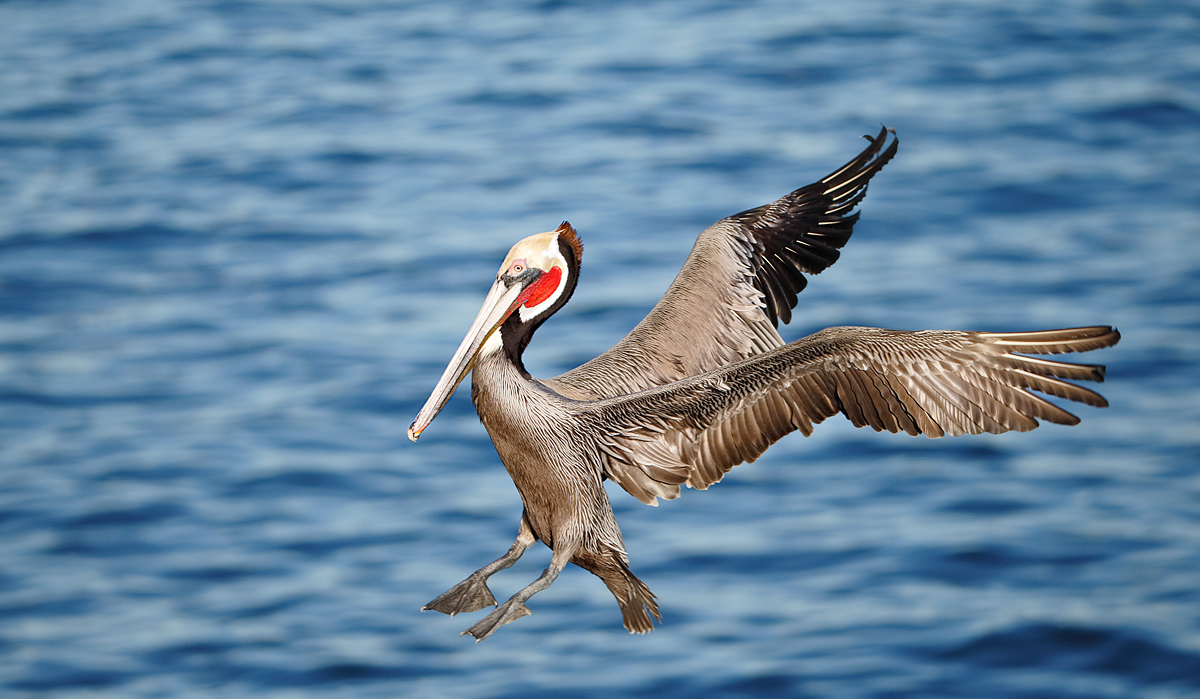
|
|
This landing Brown Pelican was photographed with the Canon EF 200-400mm f/4L IS USM Lens with Internal 1.4x Extender (hand held with the internal TC in place at 320mm) and the Canon EOS-1D X. ISO 800. Evaluative metering +1/3 stop: 1/2500 sec. at f/5.6 in Av mode.
Central Sensor/AI Servo–Rear Focus AF on the top of the bird’s head active at the moment of exposure. Click here to see the latest version of the Rear Focus Tutorial. Click on the image to see a larger version.
The 200-400 is an incredibly effective flight photography lens. Being able to frame each image by zooming in or out as needed with the 200-400 is a huge advantage over a fixed focal length lens.
|
300 f/2.8L IS or 200-400 f/4L IS with Internal TC/Which is the best lens?
During the week before I left for San Diego I received several e-mails asking straight up, if you had to choose between the two, which is a better lens for bird photography, the Canon EF 300mm f/2.8L IS II USM ($7,099) or the Canon EF 200-400mm f/4L IS USM Lens with Internal 1.4x Extender ($11,299).
My initial thoughts were that the answer depended on what you photographed and where you lived. But after the San Diego trip I reached a definitive conclusion. Before we get there let’s take a look at some of the determining factors.
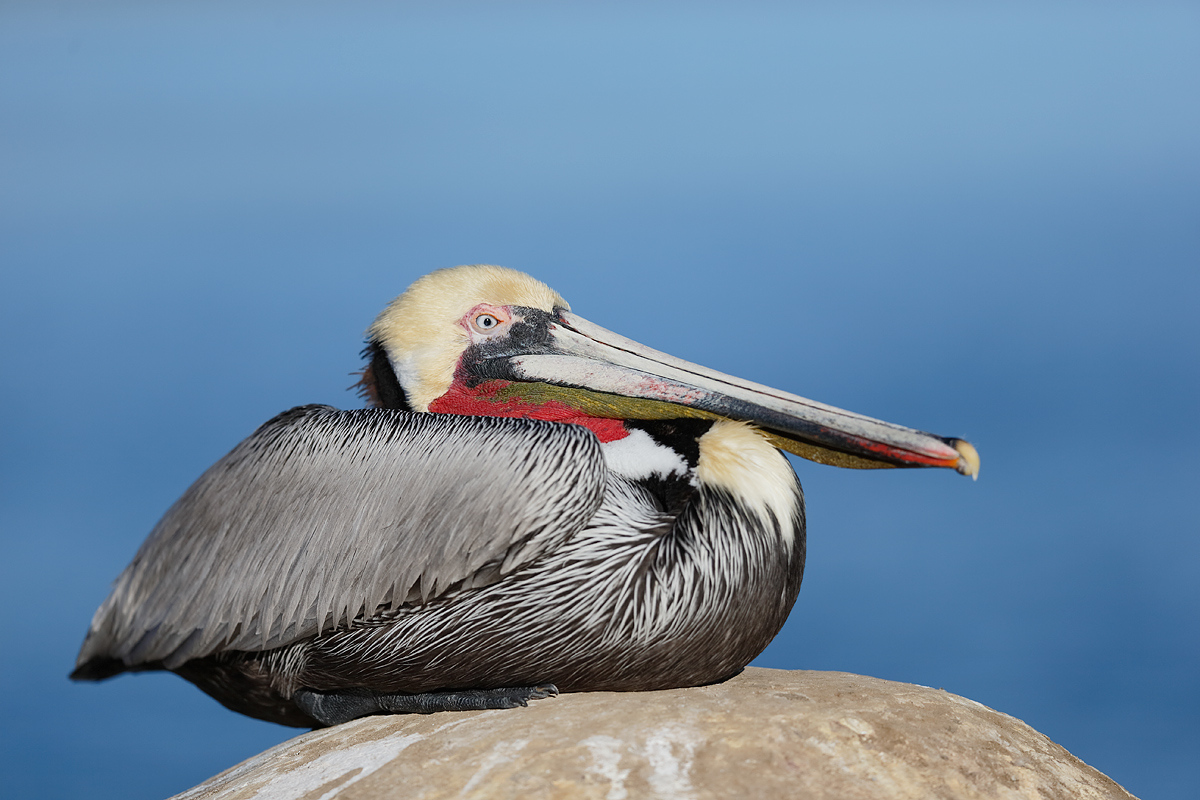
|
|
This resting Brown Pelican image was created with the Canon EF 300mm f/2.8L IS II USM lens and the Canon EOS-1D X. ISO 200. Evaluative metering +1/3 stop: 1/? sec. at f/? Manual mode.
Note: the original ISO 400 was a typo :(. ISO 200 is now correct…
Central Sensor/AI Servo–Rear Focus AF on the top of the bird’s head active at the moment of exposure. Click here to see the latest version of the Rear Focus Tutorial. Click on the image to see a larger version.
Here the framing was controlled by human zooming, by moving in or back, by changing the distance to the subject.
Image Questions:
#1: judging by the depth-of-field what do you think the aperture was for this image?
#2: once you have figured out the aperture, take a stab at the shutter speed.
|
Cost: the 300 f/2.8 II costs more than $4,000 less than the 200-400. Advantage: 300 II.
Weight: the edge here goes to the 300 II that tips the scales at 5.19 pounds as compared to the heftier 200-400 that weighs 7.98 pounds. That is more than 2 1/2 pounds less than the 200-400. And the 2-4 is only only about 2/3 pound lighter than the 600 f/4L IS II. Advantage: 300 II.
Ease of traveling by air: again the edge here clearly goes to the 300 II as its somewhat smaller size and its lighter weight makes it easier to pack and to transport. Advantage: 300 II.
Ease of hand holding: again the advantage clearly goes to the 300 II as its somewhat smaller size and its lighter weight makes it easier to hand hold for flight, action, and static subject photography. Advantage: 300 II.
Speed: as an f/2.8 lens the 300 II has it all over the 200-400 f/4 when it comes to light gathering capabilities. Advantage: 300 II.
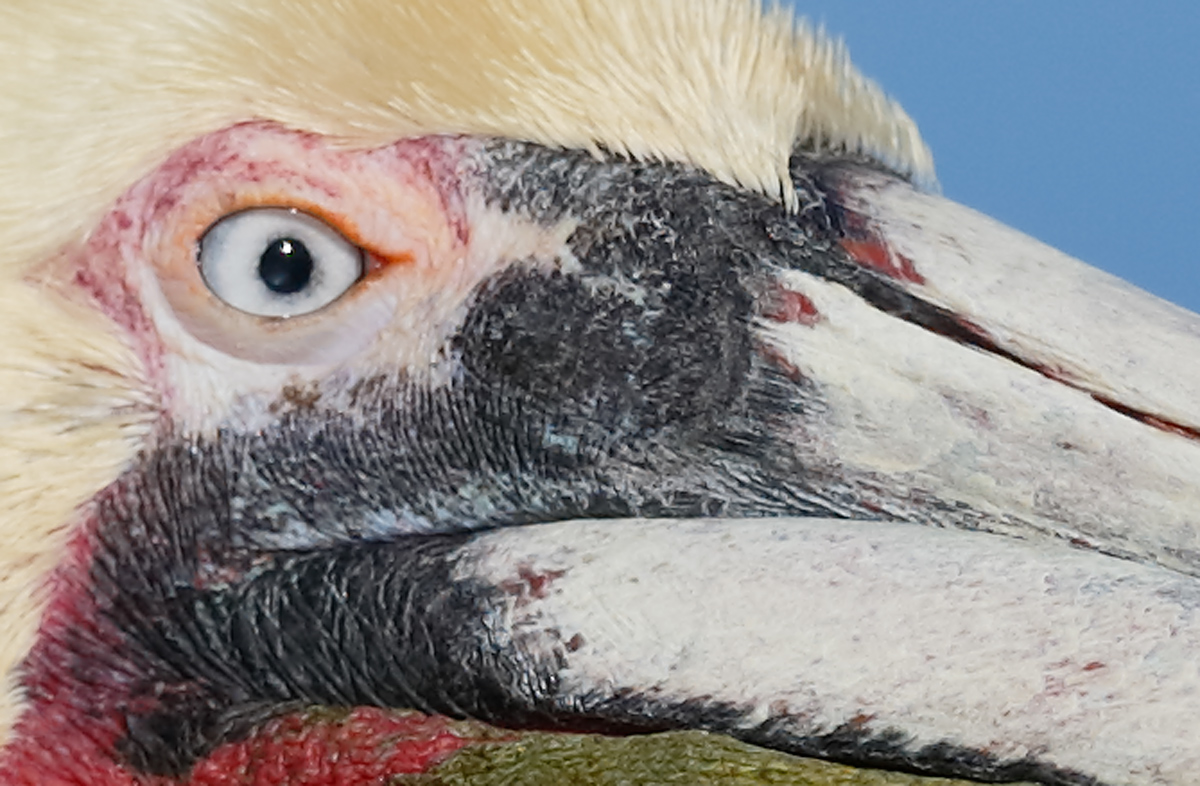
|
|
This is an unsharpened 200% crop of the image above that was created with the 300 II at an unknown aperture.
Image Question
How would you judge the sharpness?
|
Sharpness: I’d have to rate both of these amazing lenses as superbly sharp with the edge going to the 300 as just a bit sharper than the 200-400. That said each of the two lenses in question is remarkably sharp with or without teleconverters. Do note that the 300 II can be used with either the 1.4X III or the 2X III TC. From where I sit there is no reason to use the 2X TC III TC with the 200-400. Engaging the TC and then adding an external 1.4X III TC is the equivalent of having a 1.96X TC in place. When working with the 200-400 and an external TC mounted the best strategy for getting back to 280-560 is to disengage the internal TC. Valuable time will be lost by removing the external TC. You must of course take the time to remove the external should you wish to work between 200 and 400mms.
Slight Advantage: 300 II.
Maximum Reach
The 300 II/2X TC gets you out to 600mm at f/5.6. The 200-400 with both the internal and extrenal TCs in place gets you out to 798mm.
Advantage: 200-400.
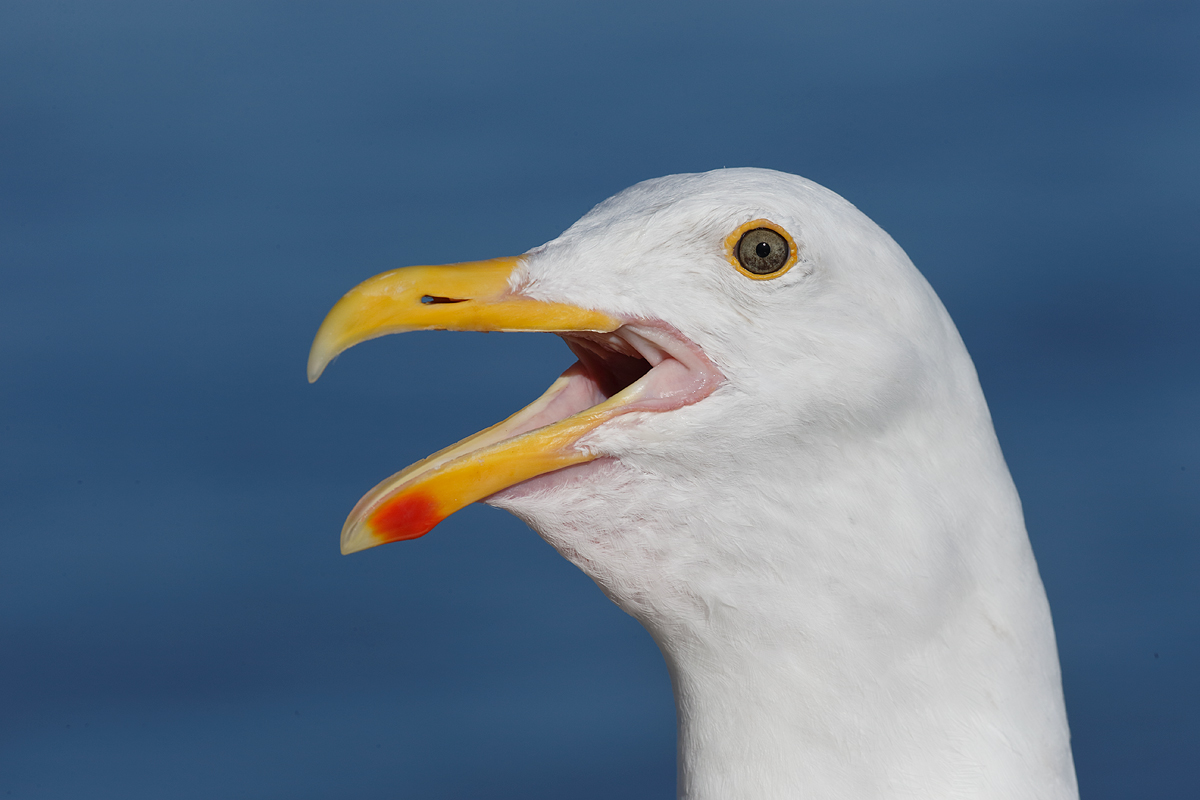
|
|
This screaming Western Gull image was created with the Canon EF 200-400mm f/4L IS USM Lens with Internal 1.4x Extender (hand held with the internal TC in place at 560mm) and the Canon EOS-1D X. ISO 400. Evaluative metering -1/3 stop: 1/1000 sec. at f/13 in Manual mode.
Central Sensor/AI Servo–Rear Focus AF on the bottom of the gape active at the moment of exposure. Click here to see the latest version of the Rear Focus Tutorial. Click on the image to see a larger version.
Here I simply engaged the internal TC, zoomed to the longeest focal length, and began creating tight head portraits.
|
The Trump Card
Versatility: the 300 II is quite a versatile lens. With the 1.4X III TC you have a very nice 420mm f/4 lens. Adding the 2X III TC yields a sharp, hand hold-able 600mm f/5.6 lens. That gives you three focal lengths: 300, 420, and 600. With the 200-400 as it comes out of the box, you have of course a 200-400mm f/4 zoom lens that can, by simply engaging the internal 1.4X TC be almost instantly transformed into at 280-560mm f/5.6 zoom lens. That gives you coverage from 200-560mm. And by adding an external 1.4X TC with the internal TC engaged, you have a lethally sharp 392-784mm f/8 lens. So with an extra TC in your pocket you will have a 200-784mm zoom lens at your disposal. With both TCs in place, I will most often be working on a tripod. And yes, the Mongoose M3.6 is perfect for the 200-400 f/4L IS with Internal Extender. Huge Advantage: 200-400.
My Conclusions
Though the 300 f/2.8L IS II lens came out ahead in 6 of the 8 categories and though it is a superbly sharp lens that served me very well on fairly recent trips to Japan and the Southern Ocean, I must give the overall nod to the 200-400 with Internal TC because of its amazing versatility and its great maximum reach. That said, be assured that in the hands of a competent nature photographer the 300 II along with both TCs is also a very deadly weapon….
The turning point in my thinking process was that in San Diego when I had a choice between the 300 II and the 200-400 I always reached for the 2-4….
If you are motivated to purchase either one of these great lenses because of what you have learned here, please do use either our B&H or Amaazon affiliate links; doing so will not cost you one penny more and would be greatly appreciated by yours truly.
Blessed
I am of course doubly blessed to own both of these great lenses and to travel with them regularly to some of the world’s most wonderful bird and wildlife photography destinations.
Don’t Forget
Please don’t forget that I had my 600 II in San Diego and used it often with either the 1.4X III or the 2X III teleconverter every day of the trip; it is very rare that I go anywhere without my 600 II….
Your Favorite?
Please take a moment to leave a comment and let us know which of the images here is your favorite. Be sure to let us know why.
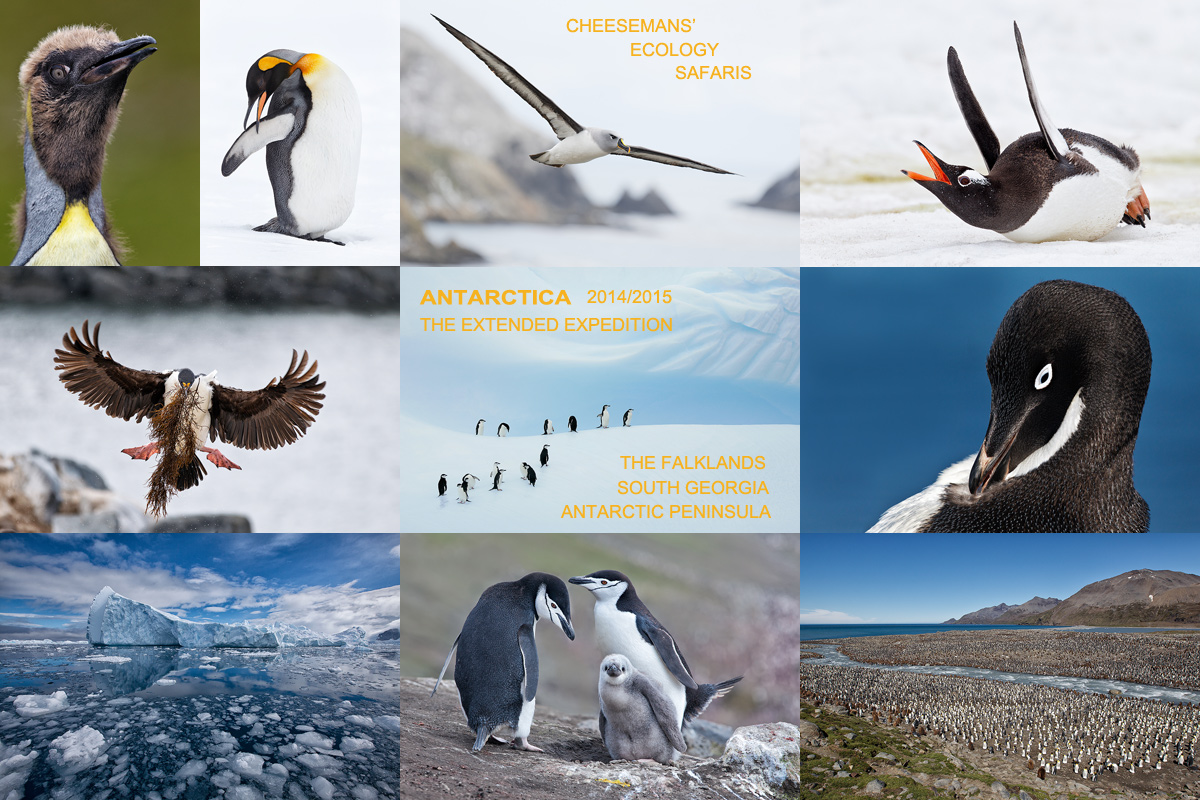
|
|
Breathe deeply, bite the bullet, and live life to its fullest; we all get only one ride on the merry-go-round… Join me on this great trip.
Click on the image to enjoy a larger version.
|
The Southern Ocean…
There has already been a ton of interest including that from some long time wonderful Happy Camper BIRDS AS ART folks. Mulitple-IPT veteran Michael Viljoen of South Afirca has already committed to making the trip with his son. He and lovely, smiling wife Lyndsey were with me on the memorable and wonderful October 2012 Cheesemans’ South Georgia Expedition. Repeat-clients–I like to call them recidivists–are a good sign that you are doing something right.
Click here for complete details. If you are seriously interested please shoot me an e-mail for the trip link.
Support the BAA Blog. Support the BAA Bulletins: Shop B&H here!
This Bulletin took about 12 hours to prepare
We want and need to keep providing you with the latest free information, photography and Photoshop lessons, and all manner of related information. Show your appreciation by making your purchases immediately after clicking on any of our B&H or Amazon Affiliate links in this blog post. Remember, B&H ain’t just photography!


 


Amazon
Everyone buys something from Amazon, be it a big lens or deodorant. Support the blog by starting your search by starting your search by clicking on the logo-link below. No purchase is too small to be appreciated; they all add up. Why make it a habit? Because I make it a habit of bringing you new images and information on an almost daily basis.
Typos
In all blog posts and Bulletins, feel free to e-mail or to leave a comment regarding any typos, wrong words, misspellings, omissions, or grammatical errors. Just be right. 🙂
IPT Info
Many of our great trips are filling up. See especially info on the South Florida, Holland, and Nickerson Beach IPTs. Two great leaders on most trips ensure that you will receive individual attention, have all of your questions answered, and learn a ton including how to think like a pro, see the situation, and get the right exposure every time. In addition you will have fun, and make lots of great images. Click here for IPT details and general information.
January 18th, 2014 The Streak…
When I got back to the room last night after a great session of Wood Duck photography I was feeling quite ill, fighting a cold. I climbed into bed at 7:11pm, read for a while, and then conked out. I had set the alarm for 2:45am. I awoke at 1:11am feeling rested, read for a while, and then began packing. I started working on this blog post yesterday afternoon and am finishing it while waiting for the first of my two flights to Orlando on Southwest.
This post marks 53 days in a row with a new educational blog post, a record by far that should be extended for at least another week or two. Or not. 🙂 To show your appreciation, we ask that use our B&H and Amazon affiliate links for all of your B&H and Amazon purchases. Please check the availability of all photographic accessories in the BIRDS AS ART Online Store. We sell only what I use and depend on. We will not sell you junk. We know what you need to make creating great images easy and fun. And we are always glad to answer your gear questions via e-mail.
You can find the following items in the store: Gitzo tripods, Mongoose M3.6 and Wimberley heads, plates, low feet, and accessories, flash brackets, , Delkin e-film Pro Compact Flash Cards, LensCoat products, and our unique line-up of educational materials including ABP I & II, Digital Basics, Site and Set-up e-Guides, Canon and Nikon Camera Users and AF e-Guides, and MP-4 Photoshop video tutorials among others.
We would of course appreciate you using our B&H and Amazon affiliate links for all of your B&H and Amazon major gear, video, electronic, household, and personal purchases. For the photographic stuff mentioned above we would of course great appreciate your business.
Thanks and enjoy today’s blog post!
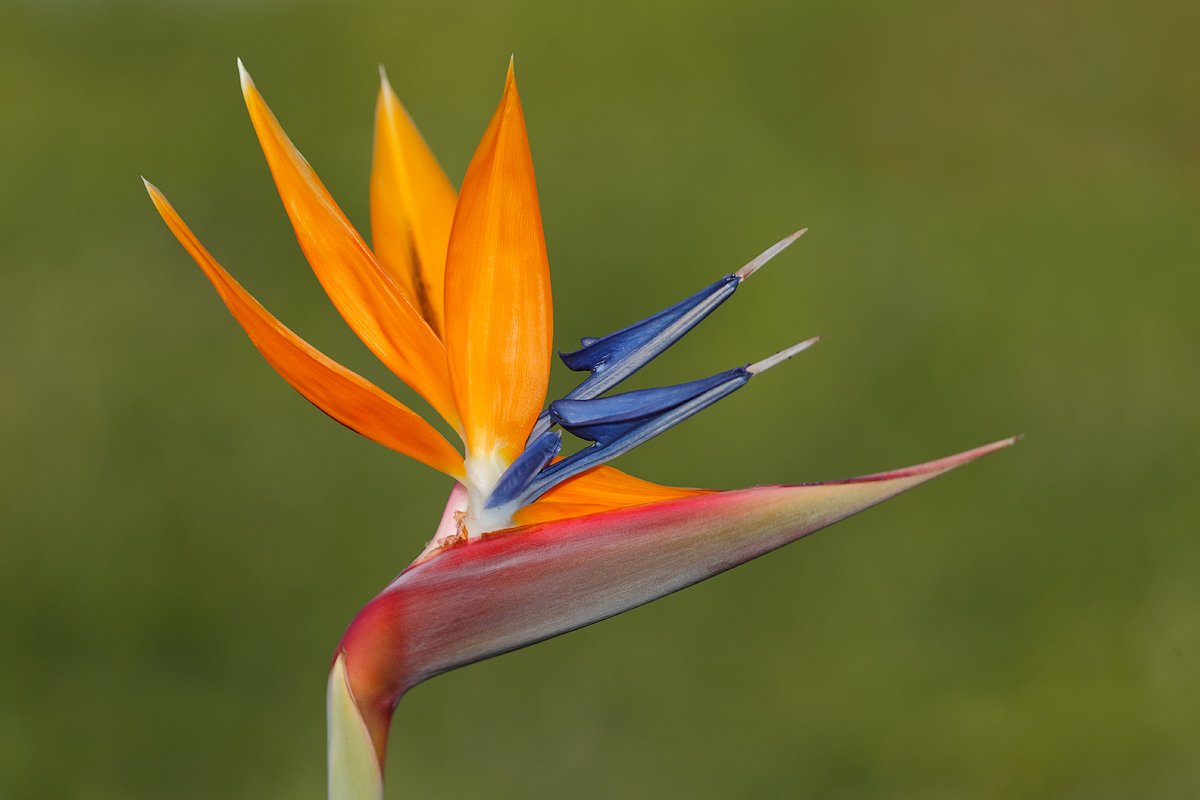
|
|
This flower image was created with the Canon EF 200-400mm f/4L IS USM Lens with Internal 1.4x Extender (hand held with the internal TC in place at 377mm) and the Canon EOS-1D X. ISO 400. Evaluative metering +1/3 stop as framed: 1/2000 sec. at f/5.6 in Av mode.
Central Sensor/AI Servo/Surround–Rear Focus AF as framed active at the moment of exposure. Click here to see the latest version of the Rear Focus Tutorial. Click on the image to see a larger version.
|
A Different Kind of Bird Photography…
We were at the guaranteed can’t miss Lesser Scaup spot that is detailed in the San Diego Site Guide. The only problem is that there were no ducks at all…. We did, however, find a stand of bird-of-paradise flowers. Most were well past their prime but with some careful searching we were able to find a few nice blossoms in pretty close to pristine condition. Most were in impossible spots. But not all. To create the image above I wove a few background stalks out of the way without damaging any of the plants. We took turns photographing the best blossom. A variety of backgrounds were possible so it was important to choose your perspective carefully. And each background created a different exposure challenge. In short, it was an ideal teaching situation.
The different birds were bird of paradise blossoms.
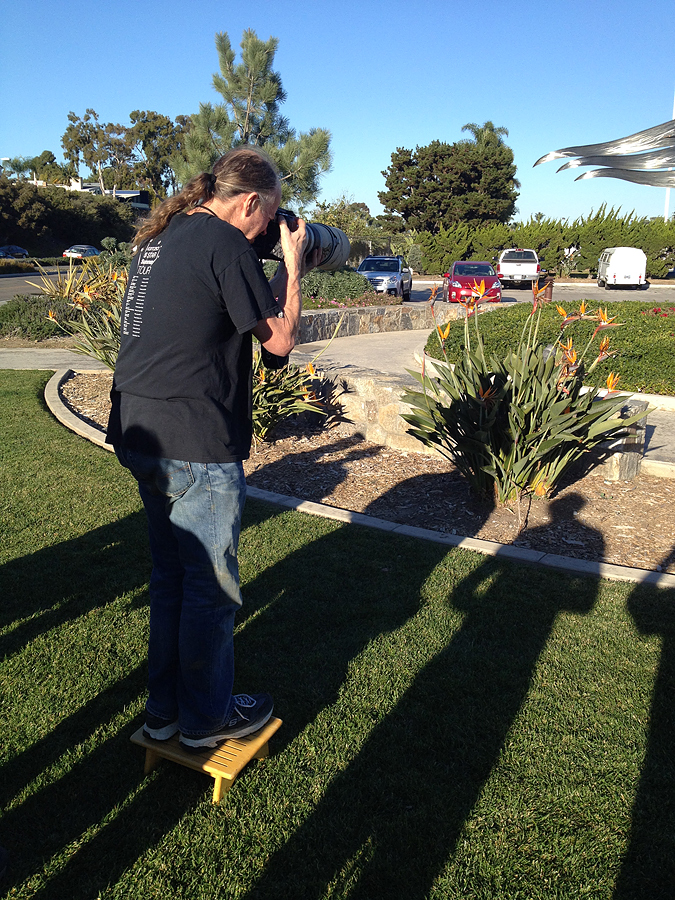
|
|
Image copyright and courtesy of Brian Willis, a participant on the San Diego Short Notice IPT.
|
Why?
Why was I standing on the small step stool while creating the blog-opening image?
Note
Note that my shadow is pointing directly at the subject.
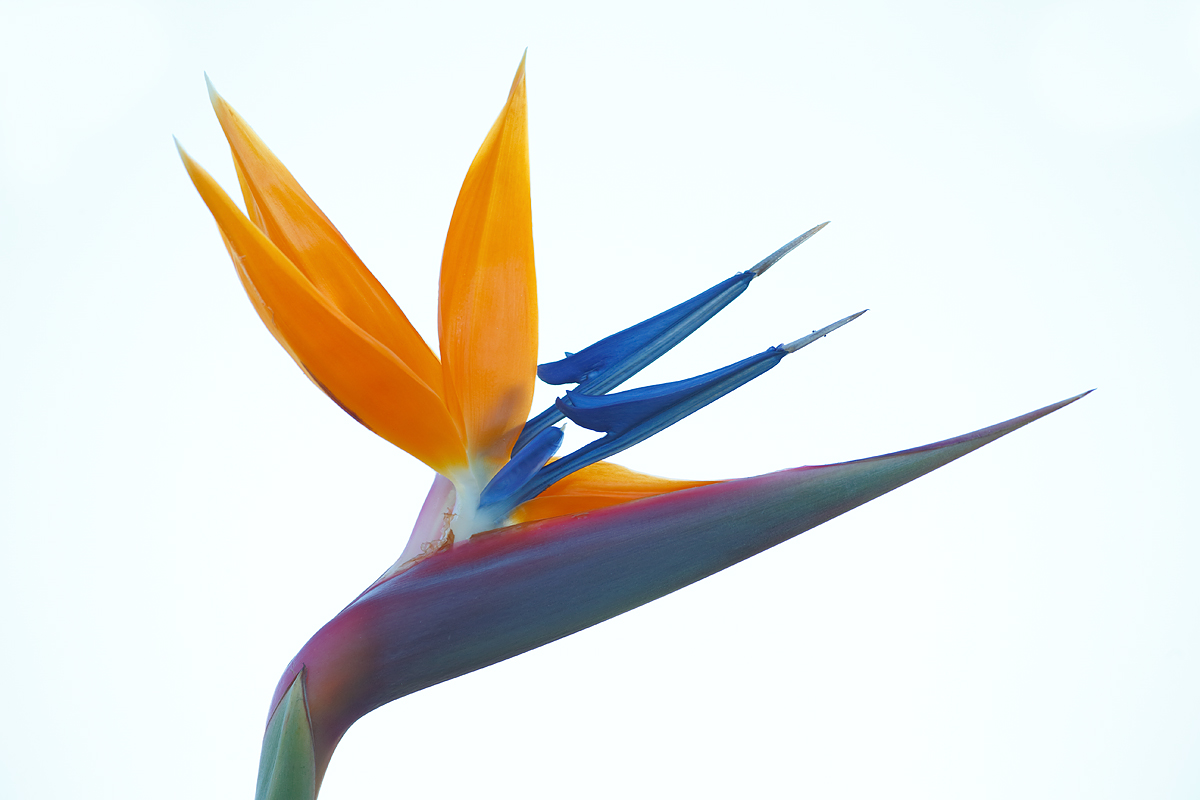
|
|
This image of the same flower was created with the Canon EF 200-400mm f/4L IS USM Lens with Internal 1.4x Extender (hand held with the internal TC in place at 377mm) and the Canon EOS-1D X. ISO 400. Evaluative metering +2 1/3 stops as framed: 1/320 sec. at f/7.1 in Av mode.
Two sensors to the left of the Central Sensor/AI Servo/Surround–Rear Focus AF as framed active at the moment of exposure. Click here to see the latest version of the Rear Focus Tutorial. Click on the image to see a larger version.
|
Brilliant Idea 🙂
I have said countless times that 95% of the flower images ever created when the sun is out at full strength could have been improved by shading the flower. Brian came to the rescue by using his baseball cap to shade the flower.
Image Questions
Why did I add 2 1/3 stops of light for the image above while only adding 1/3 stop to the opening image?
Why did I work wide open when creating the blog-opening image?
Why did I stop down to f/7.1 for the image above?
What was the background in the second image?
Your Favorite?
Please take a moment to leave a comment and let us know which of the two images here you like best. Be sure to let us know why.
The Image Optimization
I had had a bit of a problem framing the image properly while standing atop the small step stool. Choosing a sensor to the left of the central sensor as I did for the high key image would have been a better choice… First I moved the flower left in the frame using techniques detailed in APTATS II; the whole thing took about 30 seconds. Mention this blog post and Jim will be glad to apply a $10 discount on your APTATS II purchase with phone orders only.
Next I had to deal with removing some specular highlights, cleaning the white crud on the edge of the left-most petal. and cleaning up a few of the other petals. All of the above of course as detailed in my Digital Basics File, an instructional PDF that is sent via e-mail. It includes my complete digital workflow, dozens of great Photoshop tips, several different ways to expand canvas, all of my time-saving Keyboard Shortcuts, Quick Masking, Layer Masking, and NIK Color Efex Pro basics, my killer image clean-up techniques, Digital Eye Doctor, and tons more.
Support the BAA Blog. Support the BAA Bulletins: Shop B&H here!
This Bulletin took about 12 hours to prepare
We want and need to keep providing you with the latest free information, photography and Photoshop lessons, and all manner of related information. Show your appreciation by making your purchases immediately after clicking on any of our B&H or Amazon Affiliate links in this blog post. Remember, B&H ain’t just photography!


 


Amazon
Everyone buys something from Amazon, be it a big lens or deodorant. Support the blog by starting your search by starting your search by clicking on the logo-link below. No purchase is too small to be appreciated; they all add up. Why make it a habit? Because I make it a habit of bringing you new images and information on an almost daily basis.
Typos
In all blog posts and Bulletins, feel free to e-mail or to leave a comment regarding any typos, wrong words, misspellings, omissions, or grammatical errors. Just be right. 🙂
IPT Info
Many of our great trips are filling up. See especially info on the South Florida, Holland, and Nickerson Beach IPTs. Two great leaders on most trips ensure that you will receive individual attention, have all of your questions answered, and learn a ton including how to think like a pro, see the situation, and get the right exposure every time. In addition you will have fun, and make lots of great images. Click here for IPT details and general information.
January 17th, 2014 The Streak…
This blog post marks 52 days in a row with a new educational blog post, a record by far that should be extended for at least another week or two. Or not. 🙂 To show your appreciation, we ask that use our B&H and Amazon affiliate links for all of your B&H and Amazon purchases. Please check the availability of all photographic accessories in the BIRDS AS ART Online Store. We sell only what I use and depend on. We will not sell you junk. We know what you need to make creating great images easy and fun. And we are always glad to answer your gear questions via e-mail.
You can find the following items in the store: Gitzo tripods, Mongoose M3.6 and Wimberley heads, plates, low feet, and accessories, flash brackets, , Delkin e-film Pro Compact Flash Cards, LensCoat products, and our unique line-up of educational materials including ABP I & II, Digital Basics, Site and Set-up e-Guides, Canon and Nikon Camera Users and AF e-Guides, and MP-4 Photoshop video tutorials among others.
We would of course appreciate you using our B&H and Amazon affiliate links for all of your B&H and Amazon major gear, video, electronic, household, and personal purchases. For the photographic stuff mentioned above we would of course great appreciate your business.
Thanks and enjoy today’s blog post!
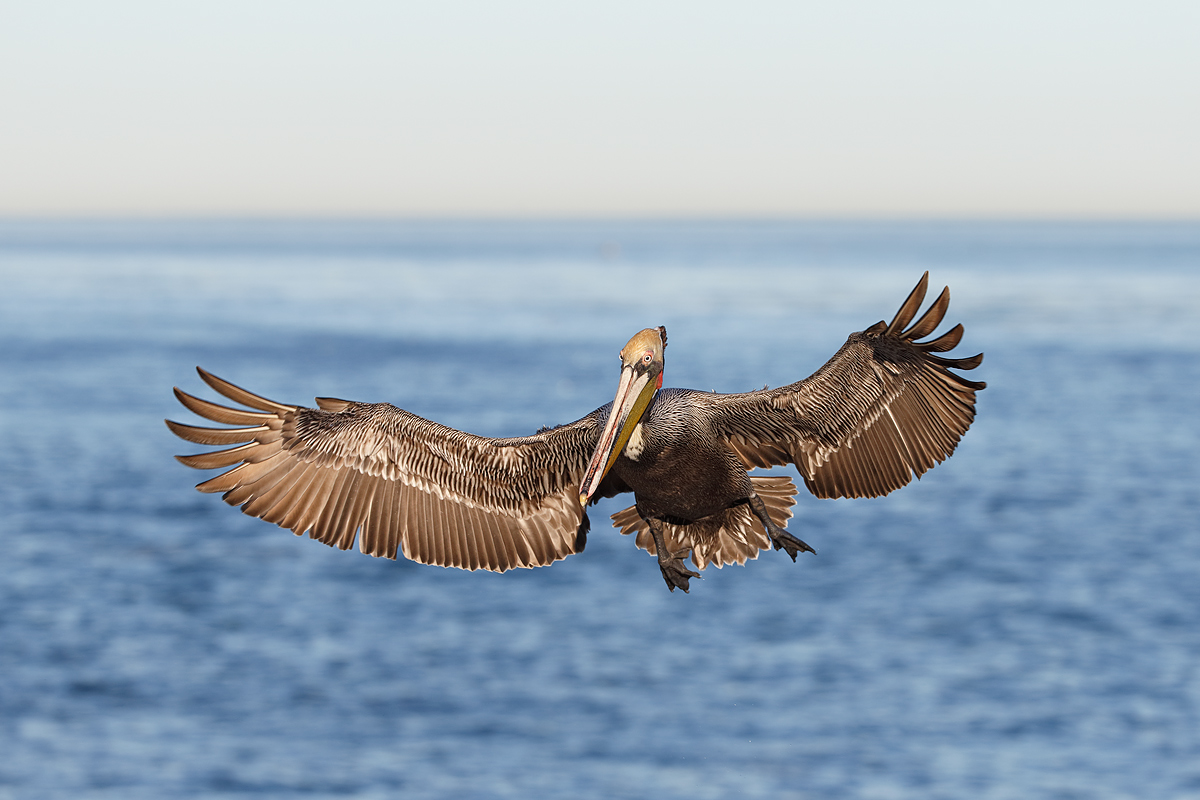
|
|
This Brown Pelican image was created with the Canon EF 200-400mm f/4L IS USM Lens with Internal 1.4x Extender (hand held at 217mm) and the Canon EOS-1D X. ISO 400. Evaluative metering +2/3 stop off the light blue sky: 1/2000 sec. at f/5.6 in Manual mode.
Central Sensor/AI Servo Rear Focus AF on the top of the bird’s breast (on the same plane as the eye) active at the moment of exposure. There were 3 sensors active on the upper back and the bottom of the neck. Click here to see the latest version of the Rear Focus Tutorial. Be sure to click on the image to see a larger version.
Yesterday, with the birds flying relatively consistent flight paths, I experimented with using central sensor only as opposed to Surround for my flight photography as recommended by Jim Neiger in his great eGuide, Flight Plan.
|
The Prelude
In the two images here we see the great versatility of the Canon EF 200-400mm f/4L IS USM Lens with Internal 1.4x Extender: great for hand held flight photography and great on a tripod for tight portraits with the Internal TC in place. And adding an external TC gets you out to 784mm….
I have received several e-mails asking which is the better lens, the Canon EF 300mm f/2.8L IS II USM lens or the Canon EF 200-400mm f/4L IS USM Lens with Internal 1.4x Extender. At first I thought that this was a tough question. But I have reached a definitive conclusion. I will be sharing my revelations with you here soon.
61-Point AF
I have been using 61-Point AF for many of my vertical images on the cliffs over the past few days. With both the 1D X and the 5D Mark III you can set up your cameras with one AF Area Selection Mode for horizontals and a different AF Area Selection Mode for verticals. The cameras recognize whether you are holding them horizontally or vertically. You can learn how to do this in either our 1D X AF Guide or our 5D Mark III User’s Guide. Along with dozens of other great tips.
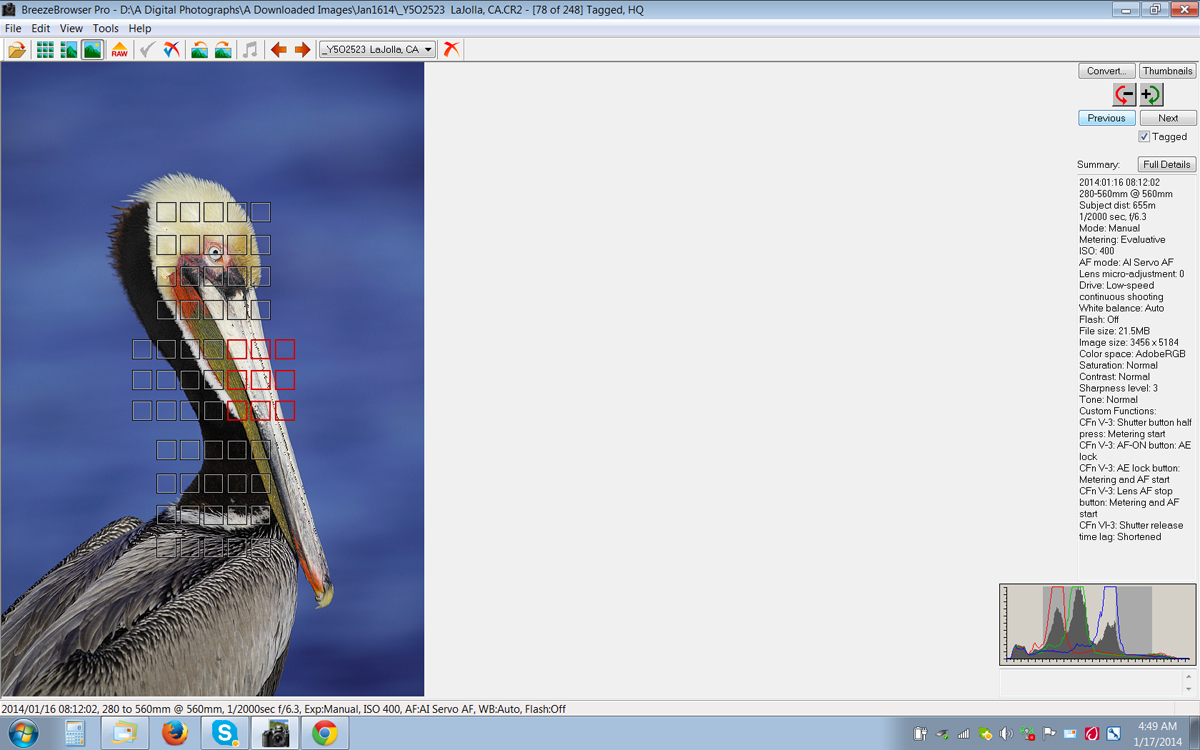
|
|
This is a BreezeBrowser Main View screen capture. Learn more below.
|
BreezeBrowser
Above is the BreezeBrowser Main View screen capture for the vertical pelican image. The illuminated red squares on the bird’s bill indicates that 9 AF sensors were active at the moment of exposure. Make sure to check Show Focus Points under View to activate this feature. To see the focus points in DPP check AF Point under View or hit Alt L.
Regular readers know that I use and depend on BreezeBrowser every day of the year. It allows me to sort my keepers and deletes the rejects faster than any other browsing program. We use it on the main computer in the home office to catalog our images file-drawer style. And the companion program, Downloader Pro, allows me to download my images quickly and conveniently. It automatically adds my IPTC data and the shooting location. I have it set up to create a folder named by the Month/date/year. The Breezebrowser/Downloader Pro combo saves me many hours each week. To learn earn more or to purchase this great PC/Windows-only program, click here.
Note also the histogram that shows the highlight data well into the fifth box…. Expose to the right. Learn more about exposure in the Two-Book Bundle here.
Your Favorite?
Please take a moment to leave a comment and let us know which of the two images here you like best. Be sure to let us know why.

|
|
Breathe deeply, bite the bullet, and live life to its fullest; we all get only one ride on the merry-go-round… Join me on this great trip.
Click on the image to enjoy a larger version.
|
The Southern Ocean…
There has already been a ton of interest including that from some long time wonderful Happy Camper BIRDS AS ART folks. Mulitple-IPT veteran Michael Viljoen of South Afirca has already committed to making the trip with his son. He and lovely, smiling wife Lyndsey were with me on the memorable and wonderful October 2012 Cheesemans’ South Georgia Expedition. Repeat-clients–I like to call them recidivists–are a good sign that you are doing something right.
Click here for complete details. If you are seriously interested please shoot me an e-mail for the trip link.
Support the BAA Blog. Support the BAA Bulletins: Shop B&H here!
This Bulletin took about 12 hours to prepare
We want and need to keep providing you with the latest free information, photography and Photoshop lessons, and all manner of related information. Show your appreciation by making your purchases immediately after clicking on any of our B&H or Amazon Affiliate links in this blog post. Remember, B&H ain’t just photography!


 
Amazon
Everyone buys something from Amazon, be it a big lens or deodorant. Support the blog by starting your search by starting your search by clicking on the logo-link below. No purchase is too small to be appreciated; they all add up. Why make it a habit? Because I make it a habit of bringing you new images and information on an almost daily basis.
Typos
In all blog posts and Bulletins, feel free to e-mail or to leave a comment regarding any typos, wrong words, misspellings, omissions, or grammatical errors. Just be right. 🙂
IPT Info
Many of our great trips are filling up. See especially info on the South Florida, Holland, and Nickerson Beach IPTs. Two great leaders on most trips ensure that you will receive individual attention, have all of your questions answered, and learn a ton including how to think like a pro, see the situation, and get the right exposure every time. In addition you will have fun, and make lots of great images. Click here for IPT details and general information.
January 16th, 2014 The Streak Continues…
This blog post marks 51 days in a row with a new educational blog post, a record by far that should be extended for at least another week or two. Or not. 🙂 To show your appreciation, we ask that use our B&H and Amazon affiliate links for all of your B&H and Amazon purchases. Please check the availability of all photographic accessories in the BIRDS AS ART Online Store. We sell only what I use and depend on. We will not sell you junk. We know what you need to make creating great images easy and fun. And we are always glad to answer your gear questions via e-mail.
You can find the following items in the store: Gitzo tripods, Mongoose M3.6 and Wimberley heads, plates, low feet, and accessories, flash brackets, , Delkin e-film Pro Compact Flash Cards, LensCoat products, and our unique line-up of educational materials including ABP I & II, Digital Basics, Site and Set-up e-Guides, Canon and Nikon Camera Users and AF e-Guides, and MP-4 Photoshop video tutorials among others.
We would of course appreciate you using our B&H and Amazon affiliate links for all of your B&H and Amazon major gear, video, electronic, household, and personal purchases. For the photographic stuff mentioned above we would of course great appreciate your business.
Thanks and enjoy today’s blog post!
Universal Advice for Better Bird and Wildlife Photography with Zoom Lenses
Here is the best advice for better bird and wildlife photography with intermediate telephoto zoom lenses that you will ever get: zoom wider. The desire to fill the frame with our subject is ingrained in all of us. You need to learn to fight the urge to zoom in. Frame loosely to ensure not clipping part of the birds in flight or the animals in action. We all get greedy and wind up losing potentially spectacular images.
While scouting on Tuesday for the San Diego Short Notice IPT we enjoyed about 15 minutes where many of the birds remaining on the cliffs were doing head throws every few minutes. The head throws, which offer spectacular photographic opportunities, are thought to be a form of intra-flock communication. Even though I was using the 200-400 with Internal TC I kept clipping the end of the bill. Finally, I gave myself a lecture: zoom wider! With the two images here, listening to my own advice saved the day.
The Tighter Head Throw Image
For me, being on a tripod when trying for head throw images with the 200-400 is imperative. Holding this relatively heavy lens in place while hoping for a head throw–they do not do them often–is simply not feasible for Mr. Famous Bird Photographer. And if you hold the lens in a rest position until the action begins and plan on raising it and framing the image quickly, most folks will find doing so difficult at best.
I nearly clipped this one and needed to move the bird down in the frame while effectively extending extending canvas above and creating a tall, skinny image that I feel works well here. I used the techniques detailed in APTATS II; the whole thing took about 90 seconds. Mention this blog post and Jim will be glad to apply a $10 discount on your APTATS II purchase with phone orders only.
Exposing to the Right
In the animated GIF above, note how light the original image is. I exposed to the right just to the point of getting a few blinkies on the silver feathers. I used a 15% Multiply Blending Mode layer to darken the image. And not much else besides a small crop from the left and from above. The high quality pixel-rich files of today’s digital camera bodies allow sharp images to easily stand up to even healthy crops.
Your Favorite?
Please take a moment to leave a comment and let us know which of the two images here you like best. Be sure to let us know why.

|
|
Breathe deeply, bite the bullet, and live life to its fullest; we all get only one ride on the merry-go-round… Join me on this great trip.
Click on the image to enjoy a larger version.
|
The Southern Ocean…
There has already been a ton of interest including that from some long time wonderful Happy Camper BIRDS AS ART folks. Mulitple-IPT veteran Michael Viljoen of South Afirca has already committed to making the trip with his son. He and lovely, smiling wife Lyndsey were with me on the memorable and wonderful October 2012 Cheesemans’ South Georgia Expedition. Repeat-clients–I like to call them recidivists–are a good sign that you are doing something right.
Click here for complete details. If you are seriously interested please shoot me an e-mail for the trip link.
Support the BAA Blog. Support the BAA Bulletins: Shop B&H here!
This Bulletin took about 12 hours to prepare
We want and need to keep providing you with the latest free information, photography and Photoshop lessons, and all manner of related information. Show your appreciation by making your purchases immediately after clicking on any of our B&H or Amazon Affiliate links in this blog post. Remember, B&H ain’t just photography!


 
Amazon
Everyone buys something from Amazon, be it a big lens or deodorant. Support the blog by starting your search by starting your search by clicking on the logo-link below. No purchase is too small to be appreciated; they all add up. Why make it a habit? Because I make it a habit of bringing you new images and information on an almost daily basis.
Typos
In all blog posts and Bulletins, feel free to e-mail or to leave a comment regarding any typos, wrong words, misspellings, omissions, or grammatical errors. Just be right. 🙂
IPT Info
Many of our great trips are filling up. See especially info on the South Florida, Holland, and Nickerson Beach IPTs. Two great leaders on most trips ensure that you will receive individual attention, have all of your questions answered, and learn a ton including how to think like a pro, see the situation, and get the right exposure every time. In addition you will have fun, and make lots of great images. Click here for IPT details and general information.
January 15th, 2014 The Amazing Streak Continues; I Gotta be Nuts. 🙂
This blog post marks 50 days in a row with a new blog post, a record by far that should be extended for at least another week or two. Or not. 🙂 To show your appreciation, we ask that use our B&H and Amazon affiliate links for all of your B&H and Amazon purchases. Please check the availability of all photographic accessories in the BIRDS AS ART Online Store. We sell only what I use and depend on. We will not sell you junk. We know what you need to make creating great images easy and fun. And we are always glad to answer your gear questions via e-mail.
You can find the following items in the store: Gitzo tripods, Mongoose M3.6 and Wimberley heads, plates, low feet, and accessories, flash brackets, , Delkin e-film Pro Compact Flash Cards, LensCoat products, and our unique line-up of educational materials including ABP I & II, Digital Basics, Site and Set-up e-Guides, Canon and Nikon Camera Users and AF e-Guides, and MP-4 Photoshop video tutorials among others.
We would of course appreciate you using our B&H and Amazon affiliate links for all of your B&H and Amazon major gear, video, electronic, household, and personal purchases. For the photographic stuff mentioned above we would of course great appreciate your business.
Thanks and enjoy today’s blog post!
Finally…
Friday January 10, 2014 started off grey and drizzly. On that Saturday I was going to the American Museum of Natural History with my younger daughter Alissa and her younger son Idris. So Friday afternoon would–after many hours of fruitless walking and driving in search of a Snowy Owl–be my last chance to find and photograph a Snowy Owl. The rain quit just after lunch so I made the 50 minute ride to Jones Beach State Park and headed east out of the parking lot. I walked about a mile without seeing a living bird….
Finding the Bird
In the distance I saw the tall dune where I had met Tom Pfeifer and Jimmy G the previous afternoon. I almost decided to give up but after some thought continues on to the dune planning to scout east from there. As I was walking up the dune I saw just part of one wing as a large bird took off and flew east/northeast. Even though I barely saw the bird the slow wingbeats and large size convinced me that it was a Snowy Owl. After a short search I spotted it and created the three images here. Each was on a different dune.
Do note the three sharp images at 1200mm with shutter speeds of between 1/50 and 1/60 sec. Learn my advanced sharpness techniques in The Art of Bird Photography II (ABP II: 916 pages, 900+ images, on CD only). And tons more.
Your Favorite
Take a moment to leave a comment and let us know which of the three Snowy Owl images you like the best. And do let us know why. Thanks!
ps: I have a clear favorite; I will let you know in a few days which one I like and why.

|
|
Breathe deeply, bite the bullet, and live life to its fullest; we all get only one ride on the merry-go-round… Join me on this great trip.
Click on the image to enjoy a larger version.
|
The Southern Ocean…
There has already been a ton of interest including that from some long time wonderful Happy Camper BIRDS AS ART folks. Mulitple-IPT veteran Michael Viljoen of South Afirca has already committed to making the trip with his son. He and lovely, smiling wife Lyndsey were with me on the memorable and wonderful October 2012 Cheesemans’ South Georgia Expedition. Repeat-clients–I like to call them recidivists–are a good sign that you are doing something right.
Click here for complete details. If you are seriously interested please shoot me an e-mail for the trip link.
Last Year’s Grand Prize winning image by Lou Coetzer
Important Contest News
Contest Deadlines Extended!
BIRDS AS ART 2nd International Bird Photography Competition
New Entry Deadline: January 31, 2014; see additional details below
With so many folks signing up at the last minute and with so many folks having trouble uploading their images due to server overload the deadline for entering the contest (registering and paying) has been extended until January 31, 2014 and the deadline for uploading images has been extended until midnight Eastern time on February 10, 2014. Take advantage of this extension to have a crack at the great prizes.
Learn more and enter the BIRDS AS ART 2nd International Bird Photography Competition here. Twenty-five great prizes including the $1000 Grand Prize and intense competition. Bring your best.
Register and Pay
To register click here.
To learn of payment options, click here.
Support the BAA Blog. Support the BAA Bulletins: Shop B&H here!
This Bulletin took about 12 hours to prepare
We want and need to keep providing you with the latest free information, photography and Photoshop lessons, and all manner of related information. Show your appreciation by making your purchases immediately after clicking on any of our B&H or Amazon Affiliate links in this blog post. Remember, B&H ain’t just photography!


 
Amazon
Everyone buys something from Amazon, be it a big lens or deodorant. Support the blog by starting your search by starting your search by clicking on the logo-link below. No purchase is too small to be appreciated; they all add up. Why make it a habit? Because I make it a habit of bringing you new images and information on an almost daily basis.
Typos
In all blog posts and Bulletins, feel free to e-mail or to leave a comment regarding any typos, wrong words, misspellings, omissions, or grammatical errors. Just be right. 🙂
IPT Info
Many of our great trips are filling up. See especially info on the South Florida, Holland, and Nickerson Beach IPTs. Two great leaders on most trips ensure that you will receive individual attention, have all of your questions answered, and learn a ton including how to think like a pro, see the situation, and get the right exposure every time. In addition you will have fun, and make lots of great images. Click here for IPT details and general information.
January 14th, 2014 The Amazing Streak Continues; I Gotta be Nuts. 🙂
Woke at 3:30am in a San Diego hotel, getting ready to head to LaJolla for some pelican photography in less than an hour.
Today’s blog post marks 49 days in a row with a new blog post, a record by far that should be extended for at least another week or two. Or not. 🙂 To show your appreciation, we ask that use our B&H and Amazon affiliate links for all of your B&H and Amazon purchases. Please check the availability of all photographic accessories in the BIRDS AS ART Online Store. We sell only what I use and depend on. We will not sell you junk. We know what you need to make creating great images easy and fun. And we are always glad to answer your gear questions via e-mail.
You can find the following items in the store: Gitzo tripods, Mongoose M3.6 and Wimberley heads, plates, low feet, and accessories, flash brackets, , Delkin e-film Pro Compact Flash Cards, LensCoat products, and our unique line-up of educational materials including ABP I & II, Digital Basics, Site and Set-up e-Guides, Canon and Nikon Camera Users and AF e-Guides, and MP-4 Photoshop video tutorials among others.
We would of course appreciate you using our B&H and Amazon affiliate links for all of your B&H and Amazon major gear, video, electronic, household, and personal purchases. For the photographic stuff mentioned above we would of course great appreciate your business.
Thanks and enjoy today’s blog post!
Against All Odds…
- White-winged Scoter is an extremely difficult species to photograph. My first chances in 30+ years were at Shinnecock last week.
- Though conditions seemed to be perfect, a big swell from the southeast had large waves crashes against the jetty. This made it impossible to get low in the rocks. This left me farther from the birds….
- And several times when a big wave hit I needed to turn the lens away from the biggest splashes. And to make matters worse, I was working without the lens hood so that it was easier to control the lens in the strong north/northwest wind and to reduce vibrations.
- The forecast had been for southwest winds. With the winds strong from the north/northwest flight photography was very difficult.
- Worst of all, the sea ducks were bobbing up and down like corks in a hurricane. It was difficult to find them in the frame and almost impossible to keep them properly framed.
The Best Strategy in Nearly Impossible Situations
I find that for me, the very best strategy when things are difficult is to quit trying to make perfect images. If you wait until you have acquired AF and have the subject nicely framed when the birds are bobbing up and down constantly, you will likely never press the shutter button. Instead, simply fire at will. Get the bird somewhere in the frame, acquire focus, and push the shutter button. Do not worry about maintaining AF, and do not worry about the framing. Let;s call this “focus and fire.”
That exactly what I did to create the amazing image above. When I saw the image on the laptop I was stunned. I love the incredible sharpness of the eye and the face, the perfect exposure–see BAA Bulletin 454–coming soon, and the fact that you can see the white speculum that gives the bird its common name on the dorsal surface of the far wing. Be sure to click on the image to enjoy the spectacular larger version.
Image Questions
Why ISO 800 in bright sun?
Why -1/3 stop?

|
|
Breathe deeply, bite the bullet, and live life to its fullest; we all get only one ride on the merry-go-round… Join me on this great trip.
Click on the image to enjoy a larger version.
|
The Southern Ocean…
There has already been a ton of interest including that from some long time wonderful Happy Camper BIRDS AS ART folks. Mulitple-IPT veteran Michael Viljoen of South Afirca has already committed to making the trip with his son. He and lovely, smiling wife Lyndsey were with me on the memorable and wonderful October 2012 Cheesemans’ South Georgia Expedition. Repeat-clients–I like to call them recidivists–are a good sign that you are doing something right.
Click here for complete details. If you are seriously interested please shoot me an e-mail for the trip link.
Last Year’s Grand Prize winning image by Lou Coetzer
Important Contest News
Contest Deadlines Extended!
BIRDS AS ART 2nd International Bird Photography Competition
New Entry Deadline: January 31, 2014; see additional details below
With so many folks signing up at the last minute and with so many folks having trouble uploading their images due to server overload the deadline for entering the contest (registering and paying) has been extended until January 31, 2014 and the deadline for uploading images has been extended until midnight Eastern time on February 10, 2014. Take advantage of this extension to have a crack at the great prizes.
Learn more and enter the BIRDS AS ART 2nd International Bird Photography Competition here. Twenty-five great prizes including the $1000 Grand Prize and intense competition. Bring your best.
Register and Pay
To register click here.
To learn of payment options, click here.
Support the BAA Blog. Support the BAA Bulletins: Shop B&H here!
This Bulletin took about 12 hours to prepare
We want and need to keep providing you with the latest free information, photography and Photoshop lessons, and all manner of related information. Show your appreciation by making your purchases immediately after clicking on any of our B&H or Amazon Affiliate links in this blog post. Remember, B&H ain’t just photography!


 
Amazon
Everyone buys something from Amazon, be it a big lens or deodorant. Support the blog by starting your search by starting your search by clicking on the logo-link below. No purchase is too small to be appreciated; they all add up. Why make it a habit? Because I make it a habit of bringing you new images and information on an almost daily basis.
Typos
In all blog posts and Bulletins, feel free to e-mail or to leave a comment regarding any typos, wrong words, misspellings, omissions, or grammatical errors. Just be right. 🙂
IPT Info
Many of our great trips are filling up. See especially info on the South Florida, Holland, and Nickerson Beach IPTs. Two great leaders on most trips ensure that you will receive individual attention, have all of your questions answered, and learn a ton including how to think like a pro, see the situation, and get the right exposure every time. In addition you will have fun, and make lots of great images. Click here for IPT details and general information.
January 13th, 2014 The Streak Continues….
I am posting this from the Islip Airport. I awoke at 3:30am for my flights to San Diego for the now sold-out Short-Notice San Diego IPT. Man, those were four boring NFL games yesterday in stark comparison to last weekend’s four Wildcard thrillers.
Today’s blog post makes 48 in row, a record by far that should be extended for at least another week or two. Or not. 🙂 To show your appreciation, we ask that use our B&H and Amazon affiliate links for all of your B&H and Amazon purchases. Please check the availability of all photographic accessories in the BIRDS AS ART Online Store. We sell only what I use and depend on. We will not sell you junk. We know what you need to make creating great images easy and fun. And we are always glad to answer your gear questions via e-mail.
You can find the following items in the store: Gitzo tripods, Mongoose M3.6 and Wimberley heads, plates, low feet, and accessories, flash brackets, , Delkin e-film Pro Compact Flash Cards, LensCoat products, and our unique line-up of educational materials including ABP I & II, Digital Basics, Site and Set-up e-Guides, Canon and Nikon Camera Users and AF e-Guides, and MP-4 Photoshop video tutorials among others.
We would of course appreciate you using our B&H and Amazon affiliate links for all of your B&H and Amazon major gear, video, electronic, household, and personal purchases. For the photographic stuff mentioned above we would of course great appreciate your business.
Thanks and enjoy today’s blog post!
Not a Snowy Owl III: More Beautiful and Exciting than Bubo scandiacus?
I was nestled down in the jetty rocks at Shinnecock Inlet with the 600 II/2X III/1D X combo photographing all three scoter species, a few Common Eiders, and a Common Loon or two. I will share some of those images with you soon. The last thing that I did as I left the car was to grab a few slices of bread from the open loaf in the trunk. I figured that having a few gulls around would make the sea ducks feel more at home so every ten minutes or so I would toss out a few small pieces of King Kullen’s finest. Four or 5 young Herring Gulls appeared magically whenever I did so.
The sea duck photography was going well. Just as I tossed yet another scrap of bread a ghostly white gull appeared just 20 feet away; with its white primaries and small, rounded head I knew instantly that it was–along with Snowy Owl and Glaucous Gull–one of the target species for my trip. My pulse raced. I had seen only a handful of Iceland Gulls in my 30+ years of bird photography and my nearly 38 years of birding. But more than the rarity of the species it was the beauty of this bird that grabbed me. I am a sucker for young birds with their scalloped feather edgings. I quickly removed the 2X and went to work.
Notice that with the bird in the shade that I instinctively went Av mode +1 stop, a tried and true formula for a medium-sized in the frame white bird in shaded blue water. I made about 50 images of the bird before it flew off. This, my favorite, was–as so often happens–the first image that I created. Juvenile Herring Gulls are much darker overall ranging from very dark brown, sometimes almost looking nearly black, to dark brownish-grey to grey, depending on age and feather wear. The young Kumlien’s Iceland Gull was white by comparison. Kumlien’s is the race of Iceland Gull that breeds in North America.
For me, seeing and photographing this bird was more exciting than photographing a Snowy Owl.

|
|
Breathe deeply, bite the bullet, and live life to its fullest; we all get only one ride on the merry-go-round… Join me on this great trip.
Click on the image to enjoy a larger version.
|
The Southern Ocean…
There has already been a ton of interest including that from some long time wonderful Happy Camper BIRDS AS ART folks. Mulitple-IPT veteran Michael Viljoen of South Afirca has already committed to making the trip with his son. He and lovely, smiling wife Lyndsey were with me on the memorable and wonderful October 2012 Cheesemans’ South Georgia Expedition. Repeat-clients–I like to call them recidivists–are a good sign that you are doing something right.
Click here for complete details. If you are seriously interested please shoot me an e-mail for the trip link.
Last Year’s Grand Prize winning image by Lou Coetzer
Important Contest News
Contest Deadlines Extended!
BIRDS AS ART 2nd International Bird Photography Competition
New Entry Deadline: January 31, 2014; see additional details below
With so many folks signing up at the last minute and with so many folks having trouble uploading their images due to server overload the deadline for entering the contest (registering and paying) has been extended until January 31, 2014 and the deadline for uploading images has been extended until midnight Eastern time on February 10, 2014. Take advantage of this extension to have a crack at the great prizes.
Learn more and enter the BIRDS AS ART 2nd International Bird Photography Competition here. Twenty-five great prizes including the $1000 Grand Prize and intense competition. Bring your best.
Register and Pay
To register click here.
To learn of payment options, click here.
Support the BAA Blog. Support the BAA Bulletins: Shop B&H here!
This Bulletin took about 12 hours to prepare
We want and need to keep providing you with the latest free information, photography and Photoshop lessons, and all manner of related information. Show your appreciation by making your purchases immediately after clicking on any of our B&H or Amazon Affiliate links in this blog post. Remember, B&H ain’t just photography!


 
Amazon
Everyone buys something from Amazon, be it a big lens or deodorant. Support the blog by starting your search by starting your search by clicking on the logo-link below. No purchase is too small to be appreciated; they all add up. Why make it a habit? Because I make it a habit of bringing you new images and information on an almost daily basis.
Typos
In all blog posts and Bulletins, feel free to e-mail or to leave a comment regarding any typos, wrong words, misspellings, omissions, or grammatical errors. Just be right. 🙂
IPT Info
Many of our great trips are filling up. See especially info on the South Florida, Holland, and Nickerson Beach IPTs. Two great leaders on most trips ensure that you will receive individual attention, have all of your questions answered, and learn a ton including how to think like a pro, see the situation, and get the right exposure every time. In addition you will have fun, and make lots of great images. Click here for IPT details and general information.
January 12th, 2014 The Amazing Streak Continues; I Gotta be Nuts. 🙂
Today’s blog post marks 47 days in a row with a new blog post, a record by far that should be extended for at least another week or two. Or not. 🙂 To show your appreciation, we ask that use our B&H and Amazon affiliate links for all of your B&H and Amazon purchases. Please check the availability of all photographic accessories in the BIRDS AS ART Online Store. We sell only what I use and depend on. We will not sell you junk. We know what you need to make creating great images easy and fun. And we are always glad to answer your gear questions via e-mail.
You can find the following items in the store: Gitzo tripods, Mongoose M3.6 and Wimberley heads, plates, low feet, and accessories, flash brackets, , Delkin e-film Pro Compact Flash Cards, LensCoat products, and our unique line-up of educational materials including ABP I & II, Digital Basics, Site and Set-up e-Guides, Canon and Nikon Camera Users and AF e-Guides, and MP-4 Photoshop video tutorials among others.
We would of course appreciate you using our B&H and Amazon affiliate links for all of your B&H and Amazon major gear, video, electronic, household, and personal purchases. For the photographic stuff mentioned above we would of course great appreciate your business.
Thanks and enjoy today’s blog post!
Snowy Owl Hallucinations…
The afternoon after getting to Long Island was sunny and bright so I made the 45 minute drive to Jones Beach after getting dressed properly for the bitter cold. In search of a Snowy Owl I walked south and then west to the jetty, about a mile or so. Searching for a Snowy Owl in the white dunes can be frustrating. You see a white plastic pipe or a Clorox bottle and your mind begins to play tricks on you…. So when I saw a column of ice on the jetty a good distance away my heart began to race; a Snowy Owl Owl on an ice-encased jetty? You’ve got to be kidding me…. As it turned out, you were :). But as I got closer to my Ice Owl I came up with an Out-of-the Box idea for creating a quasi-Snowy Owl in Photoshop. You can see the eye-donor Snowy Owl–my favorite ever of this species–by clicking here.
After creating the base image I headed north and then east and continued looking for a white owl. My cell phone rang. It was good friend Tom Pfeifer. He met a guy with a lens in the parking lot. The guy told him that there were several owls to the east…. Bummer. I had followed the ageold advice: go west young man. So I hustled my way another mile plus down the beach until I hooked up with Tom and old freind Jimmy G. They were watching a photographer and an owl yet another mile down the beach, another mile farther from the car. As the owl kept flying east as the guy approached it, we all decided to pass as it was getting late in the day.
On the way back to the car I decided to take a short cut, angling towards the parking lot. I became trapped in acres of very tall phragmites. The going was touch and slow. I came upon a small frozen pond. I made my way around the edge even though I was sure that it was frozen solid. BTW, did I tell you that had I found an owl I would have had to hand hold my 600 II? Why? When I got to Jones I realized that I had left my tripod in the back of Mike Lotito’s truck that morning…. I relaxed a bit when I got to the northern shore of the pond. I could see my car in the lot just on the other side of a smaller stand of the difficult-to-traverse phragmites. On the next step I broke through the ice into about a foot of water and lost my balance. By sheer luck and determination, I regained my balance after a few crashing and uncontrolled steps. I am pretty sure that I was motivated by the thought of my 600 II/1.4X III/!D X winding up in a foot of water.
By the time that I got back to my car I had walked a good three miles. I was exhausted as I headed back to Mom’s photographically empty-handed. That’s the way it often is with Snowy Owls; here one day, gone the next….
Different Year: Same Story
The year was 2008. The story was quite similar only on that day I wound up walking almost 5 owl-less miles. When you search too long for Bubo scandiacus everything start to look like a white owl. Bubo is Latin for owl. If anyone can come up with the Latin translation of scandiacus please do share. I think that it might be related to the word “arctic” but was not able to verify that despite a long web search.
The Photoshop Creation Process
The Photoshop creation process for each of the images above took only a few moments. For each I painted a Quick Mask of the owl’s eye and bill from two different images and placed that on it’s own Layer. I moved that layer with the Move Tool (V) onto the base image, added a Regular Layer Mask, and fine-tuned the selection. Just basic Layer Masking composite technique.
All of the above of course as detailed in my Digital Basics File, an instructional PDF that is sent via e-mail. It includes my complete digital workflow, dozens of great Photoshop tips, several different ways to expand canvas, all of my time-saving Keyboard Shortcuts, Quick Masking, Layer Masking, and NIK Color Efex Pro basics, my killer image clean-up techniques, Digital Eye Doctor, and tons more. Learn the details of advanced Quick Masking techniques in APTATS I. Mention this blog post and apply a $5 discount with phone orders only.

|
|
Breathe deeply, bite the bullet, and live life to its fullest; we all get only one ride on the merry-go-round… Join me on this great trip.
Click on the image to enjoy a larger version.
|
The Southern Ocean…
There has already been a ton of interest including that from some long time wonderful Happy Camper BIRDS AS ART folks. Mulitple-IPT veteran Michael Viljoen of South Afirca has already committed to making the trip with his son. He and lovely, smiling wife Lyndsey were with me on the memorable and wonderful October 2012 Cheesemans’ South Georgia Expedition. Repeat-clients–I like to call them recidivists–are a good sign that you are doing something right.
Click here for complete details. If you are seriously interested please shoot me an e-mail for the trip link.
Last Year’s Grand Prize winning image by Lou Coetzer
Important Contest News
Contest Deadlines Extended!
BIRDS AS ART 2nd International Bird Photography Competition
New Entry Deadline: January 31, 2014; see additional details below
With so many folks signing up at the last minute and with so many folks having trouble uploading their images due to server overload the deadline for entering the contest (registering and paying) has been extended until January 31, 2014 and the deadline for uploading images has been extended until midnight Eastern time on February 10, 2014. Take advantage of this extension to have a crack at the great prizes.
Learn more and enter the BIRDS AS ART 2nd International Bird Photography Competition here. Twenty-five great prizes including the $1000 Grand Prize and intense competition. Bring your best.
Register and Pay
To register click here.
To learn of payment options, click here.
Support the BAA Blog. Support the BAA Bulletins: Shop B&H here!
This Bulletin took about 12 hours to prepare
We want and need to keep providing you with the latest free information, photography and Photoshop lessons, and all manner of related information. Show your appreciation by making your purchases immediately after clicking on any of our B&H or Amazon Affiliate links in this blog post. Remember, B&H ain’t just photography!


 
Amazon
Everyone buys something from Amazon, be it a big lens or deodorant. Support the blog by starting your search by starting your search by clicking on the logo-link below. No purchase is too small to be appreciated; they all add up. Why make it a habit? Because I make it a habit of bringing you new images and information on an almost daily basis.
Typos
In all blog posts and Bulletins, feel free to e-mail or to leave a comment regarding any typos, wrong words, misspellings, omissions, or grammatical errors. Just be right. 🙂
IPT Info
Many of our great trips are filling up. See especially info on the South Florida, Holland, and Nickerson Beach IPTs. Two great leaders on most trips ensure that you will receive individual attention, have all of your questions answered, and learn a ton including how to think like a pro, see the situation, and get the right exposure every time. In addition you will have fun, and make lots of great images. Click here for IPT details and general information.
|
|











